Can you think of a better way to avoid the summer heat than traveling North? This year, just as the school holidays began, we flew to Stockholm, with a plan to visit nearby areas as well. That was our initial plan, but Stockholm turned out to be the holiday where me and Eric would visit museum after museum. In fact, we somehow managed to visit one museum per day, three consecutive days, for about 7-9 hours each. So, we ended up staying in Stockholm for an entire week. If you do not plan to visit museums, I genuinely think that 3 days in Stockholm is just about right. Keep reading to find out what we fill are the best spots in Stockholm and how to organise a trip in the beautiful capital city of Sweden.
Before arriving in Stockholm. Download the SL app for traveling within Stockholm. You can purchase tickets (single journey, day tickets, multiple day tickets) in the app and then use the app as your ticket by scanning the QR code in the app. Kids below 12 travel free of charge when accompanied by a paying adult. You can also buy tickets by tapping your credit card on the displays at the entrance door. It’s worthwhile to buy a day ticket or multiple day tickets if you plan to travel more than twice/day.
Getting from Stockholm Arlanda Airport to the city centre:
- Taking the bus, cheaper but slower: https://www.flygbussarna.se/en/prices. Departures vary during day or night, best to check timetables: https://www.flygbussarna.se/en/timetable. It takes 45 minutes to reach the center.
- Taking the Arlanda express train, more expensive, but gets you to the center in 18 minutes. Departs every half an hour: https://www.arlandaexpress.se
- Commuter trains 40 or 41, reliable and cheaper compared to Arlanda Express. The journey takes about 35-40 minutes: https://sl.se/en/in-english/fares–tickets/visitor-tickets/travel-to-and-from-arlanda-airport
Cheaper accomodation options in Stockholm. There’s no novelty that Stockholm is one of Europe’s most expensive cities. Luckily there’s no need to stay downtown if you’d like to save more on accomodation. Staying on the outskirts of the city can be a lot cheaper. The trick is to book a hotel with easy access to public transportation. We chose to stay in Kista, at the Scandic Victoria Tower hotel, 5 minutes walking distance to the Helenelund station on the commuter trains 40/41 tracks. That way, we reached Stockholm center in roughly 20 minutes (including the walk from the hotel to Helenelund station). The travel card SL is valid on these commuter trains, as well.
What we visited in Stockholm (or the museum city as we have nicknamed the city)
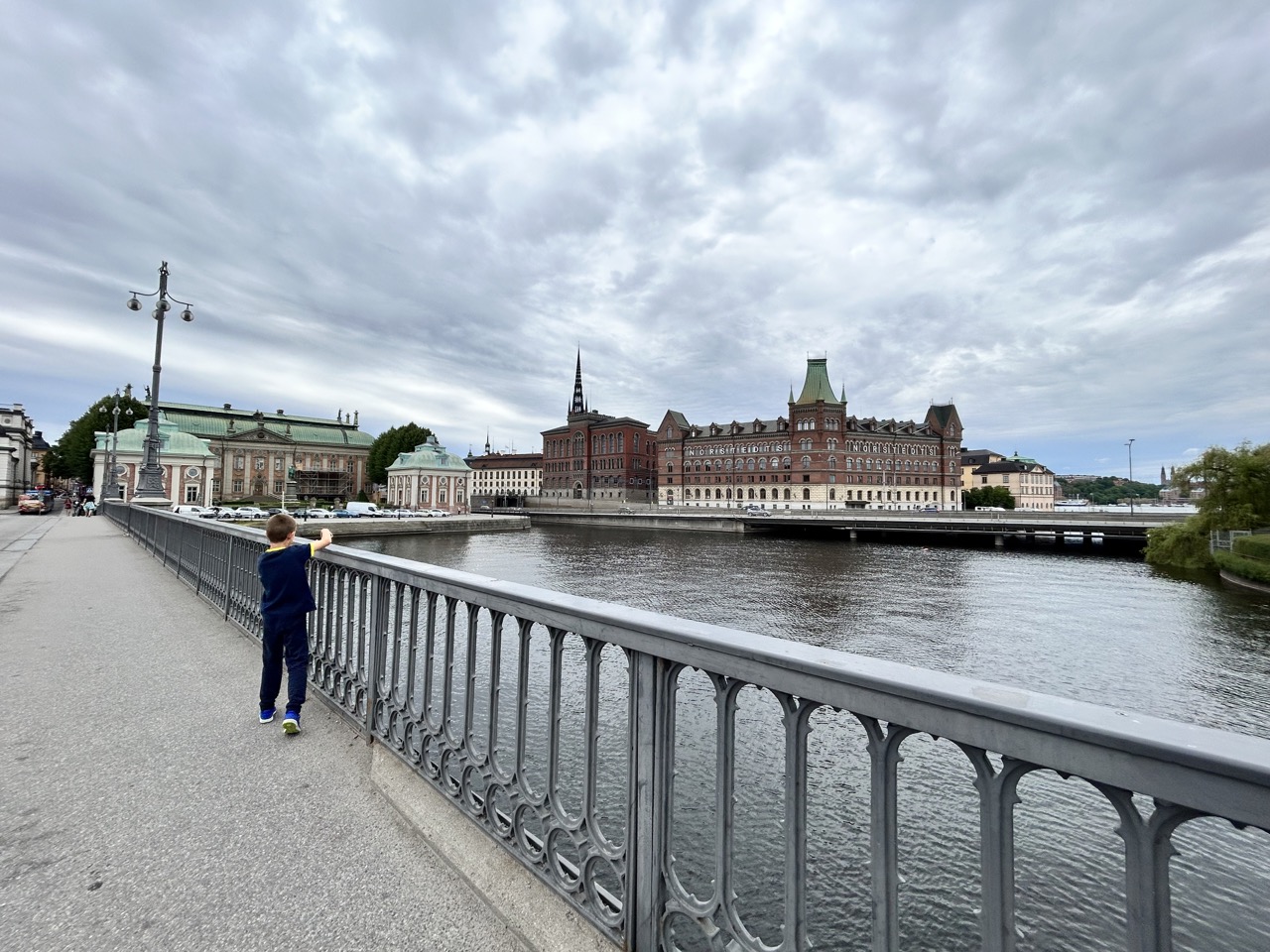
Day 1. We took the commuter train to T-Centralen station in Stockholm city center. From here, we strolled towards Gamla Stan (the old town) and passed near Riddarholmen Church (which you can visit by the way, ticktes are required). Instead of visiting the church, we preferred to walk towards the the Nobility House (which was closed for rennovations) and Bonde Palace all the way to the old town’s very end near Slussen. We wandered for nearly 1 hour along the paved pedestrian streets until we reached one of the most famous ones or at least the narrowest (Mårten Trotzigs gränd). We then had to stop at a playground nearby for Eric to recharge his batteries before continuing further to the Saint Gertrude Church and the Västerlånggatan, a picturesque and crowded street in Gamla Stan. There are countless of dining options, but we chose to eat at Vapiano (a restaurant that we came to love while living in Basel). Our next stop was the Nobel Prize Museum, a museum dedicated to Alfred Nobel which houses a collection of objects donated (or bought) by the Nobel prize winners. It’s small, but fun and educational. We learnt about the life of Alfred Nobel, read his will, played a couple of logic games, watched a couple of short films about some of the Nobel proze winners, before descending to the workshop room, dedicated to kids. The staff here is amazing, speaks fluent English and are super friendly. The theme of the workshop is “air” and Eric learnt a couple of things by performing several experiments. He also built a wind spinner and received a small booklet that contained several questions. To answer these questions, Eric had to look for clues in the museum and fill in our answers. At the end, we handed the booklet to one of the ladies at the ticket booth and received a small prize, shaped as a golden medal. Eric said he got a Nobel prize. In the end, it turned out the prize was actually a chocolate. Needless to say, Eric was equally thrilled with the chocolate, as with his initial Nobel prize 😊. The museum is located in a beautiful square, the Stortorget surrounded by buildings dressed in autumn colors. Right behind the museum is the Storkyrkan or Great Church, which we did not enter as it was already closed for visitors. Entry tickets are required to visit this church, as well. The Royal Palace is close by and some of its 600 or so rooms can be visited. It was already passed opening hours so we just admired its exterior and interior plazza. The changing of the guards can be seen here every day from the end of April until the end of August at 12:15 (and Sundays at 13:15) and lasts about 40 minutes. The Parliament Builiding it’s a stone throw away, immediately across the bridge on a small island.
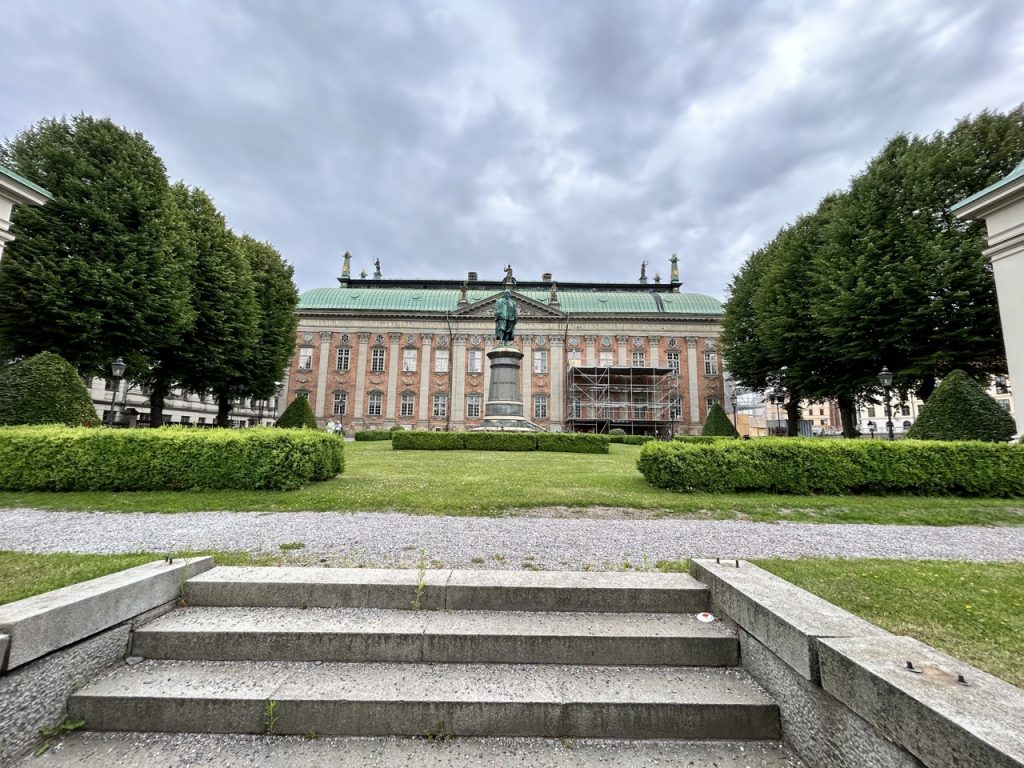
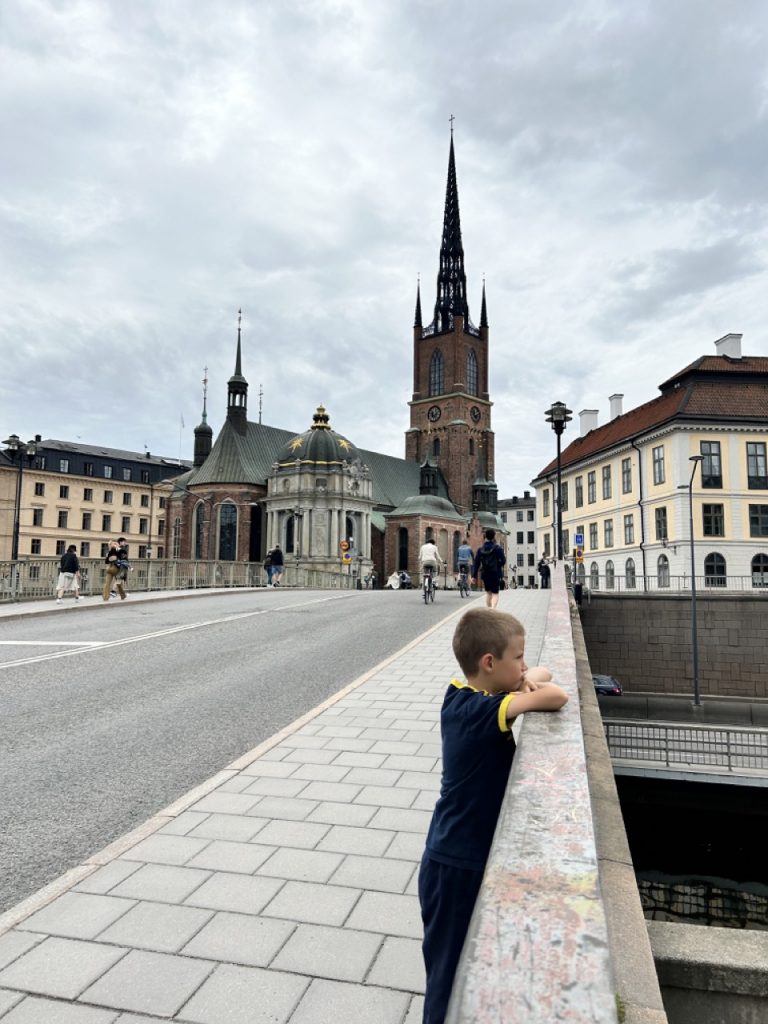
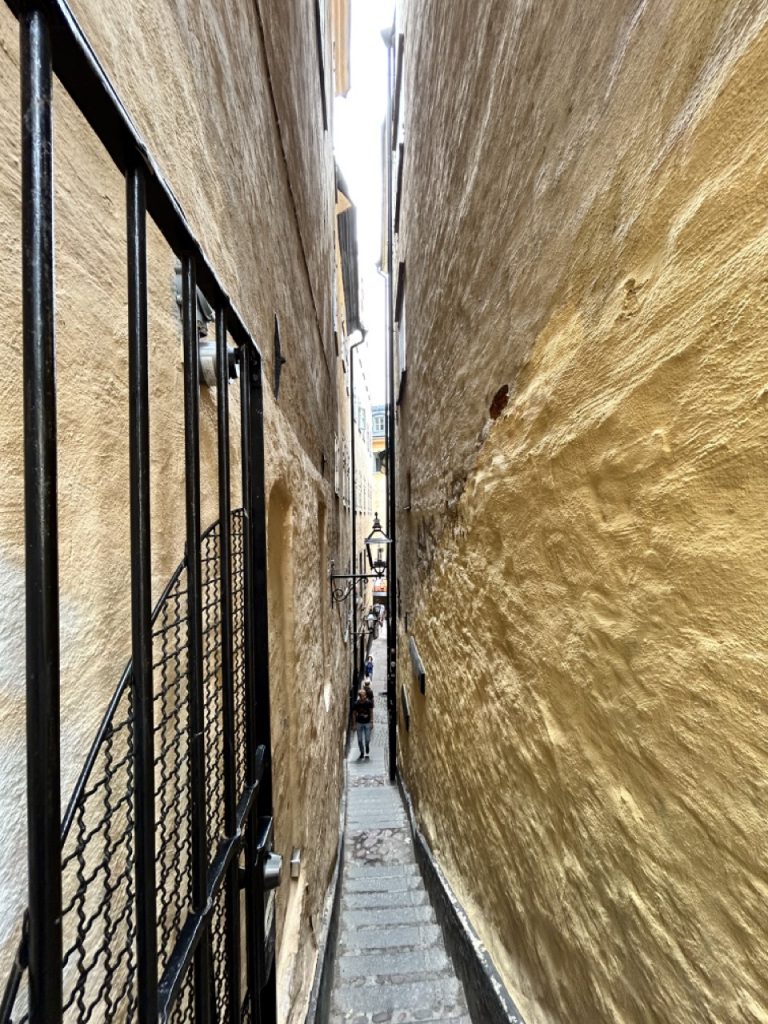
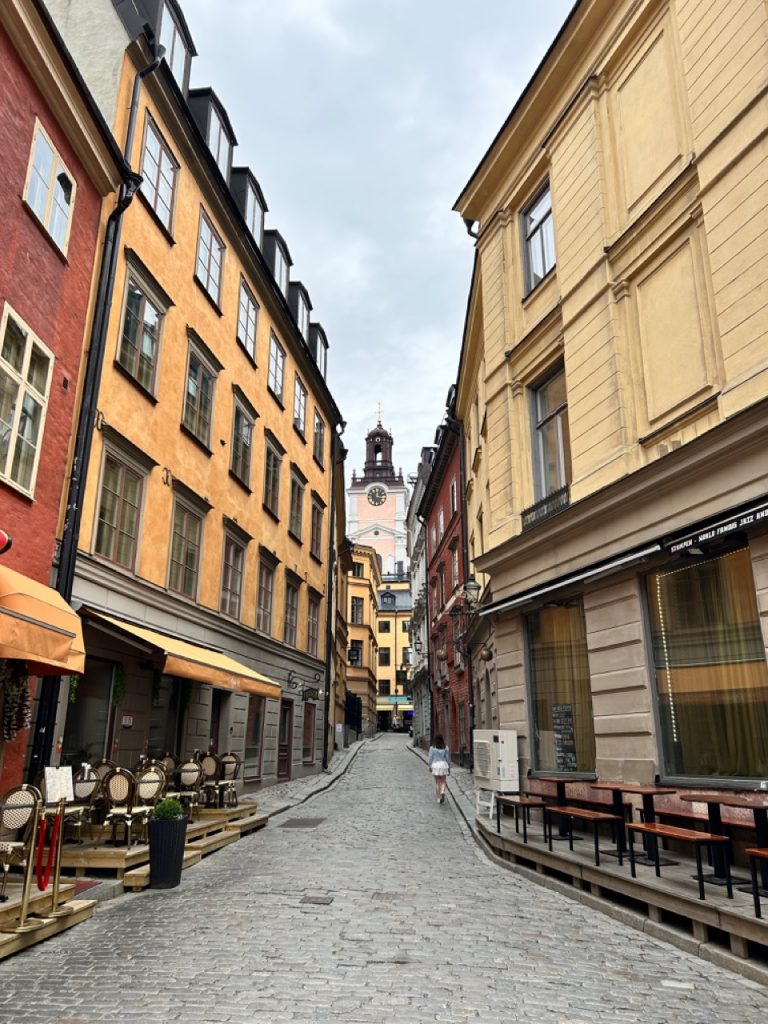
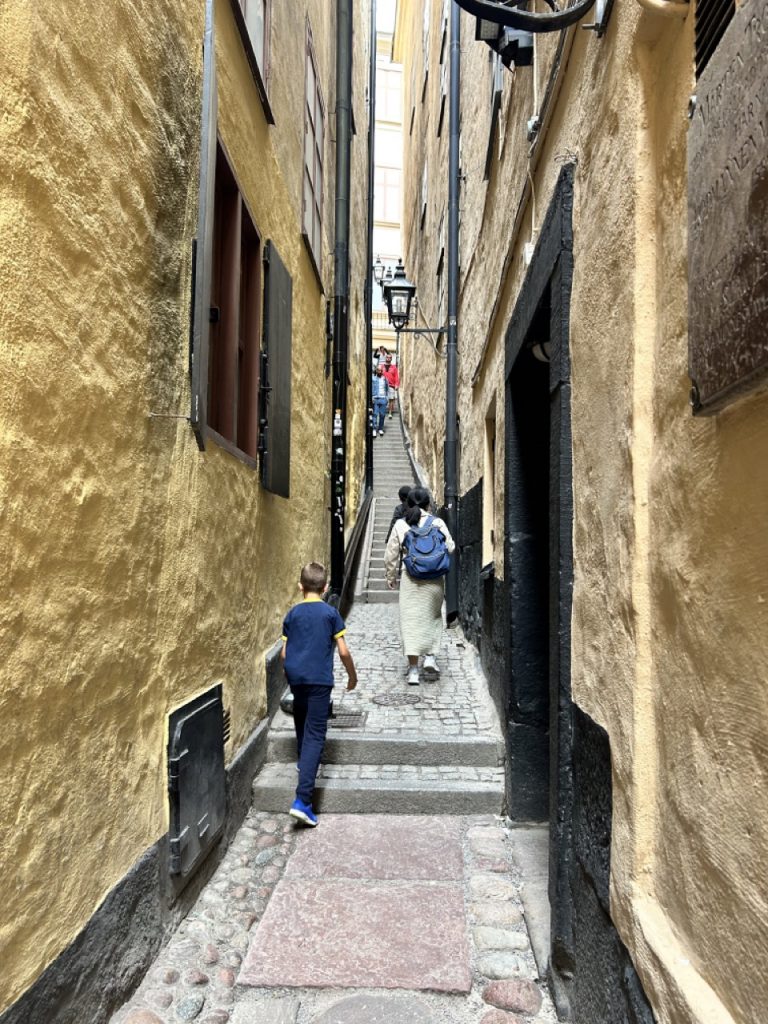
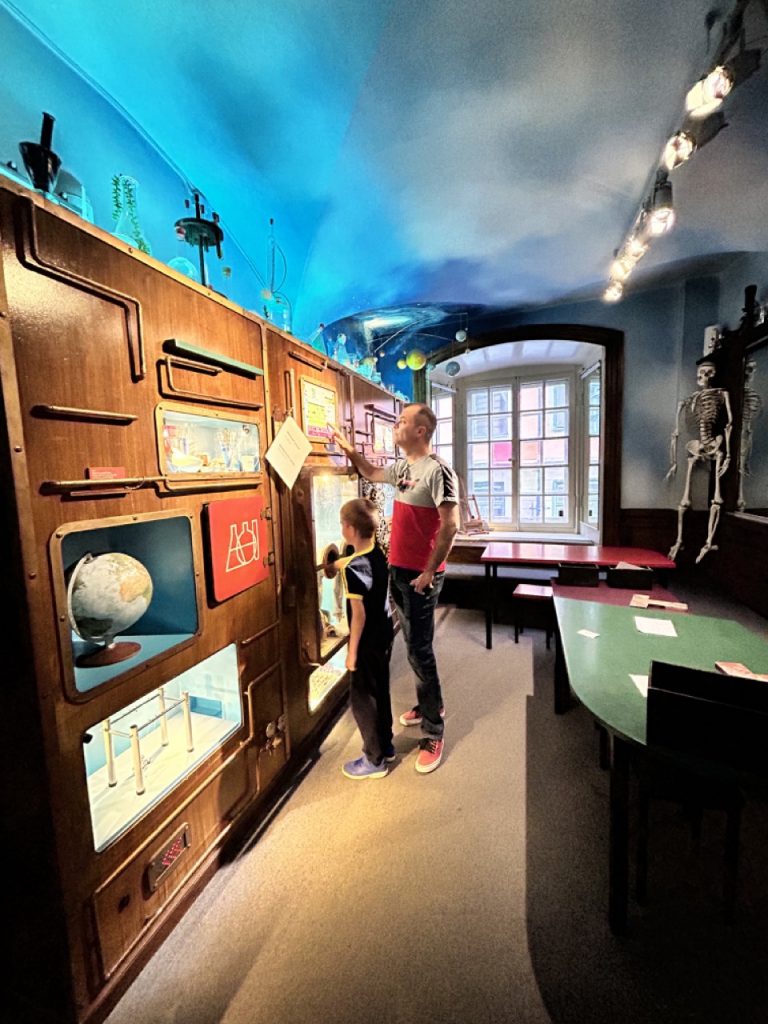
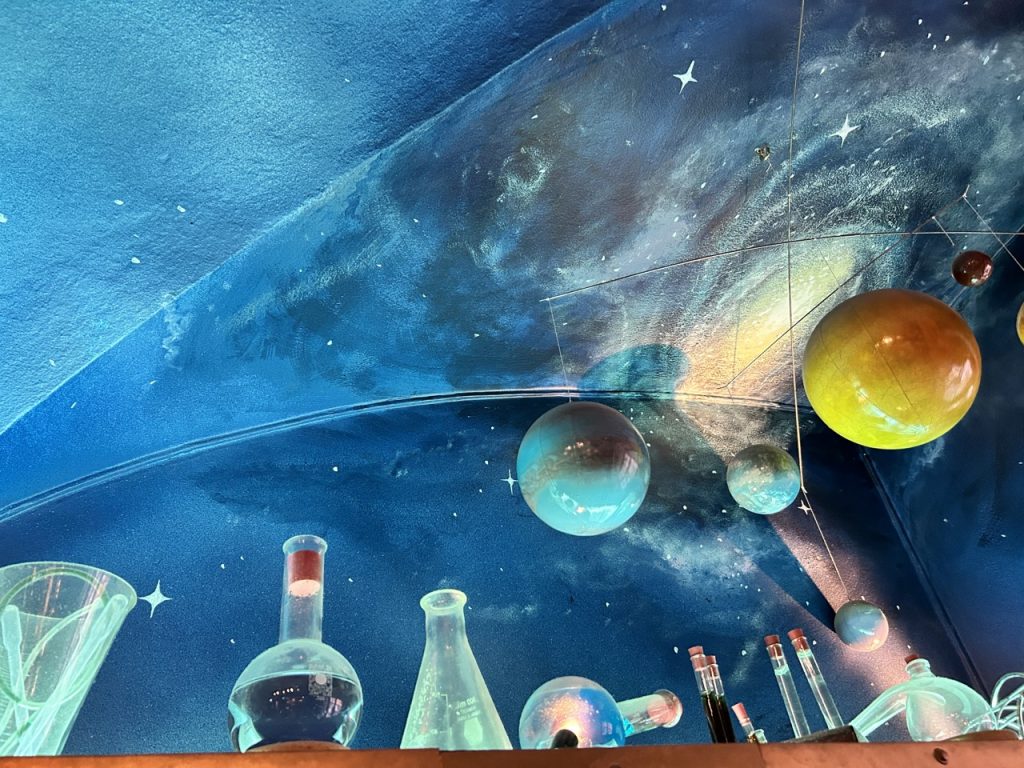
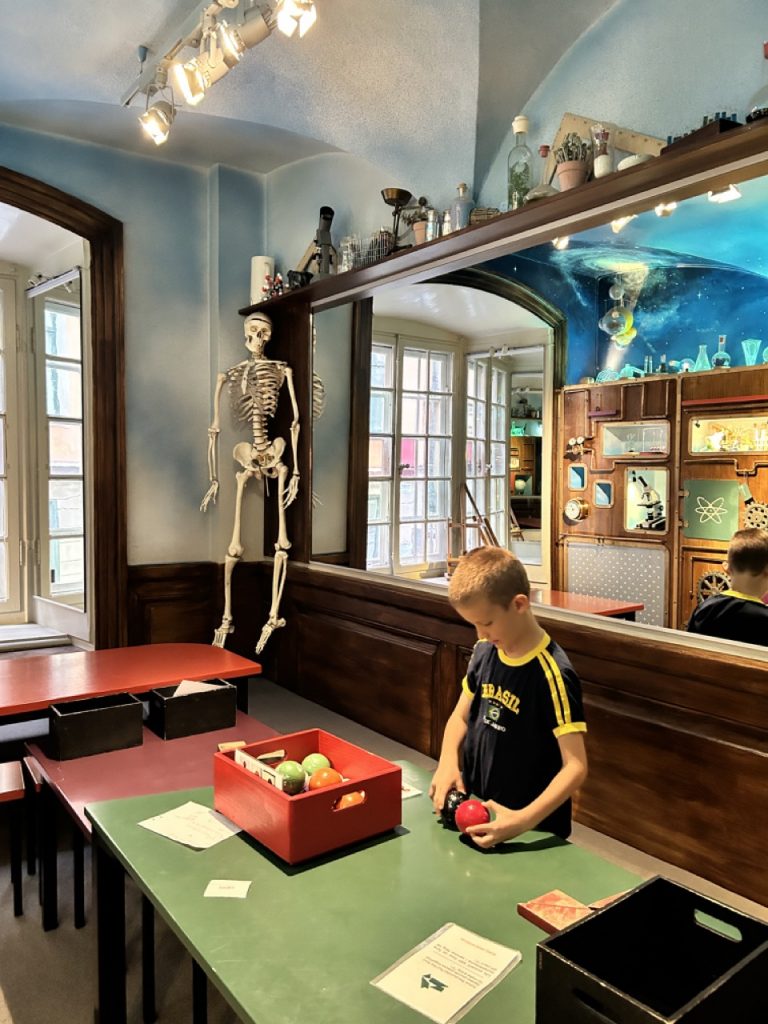
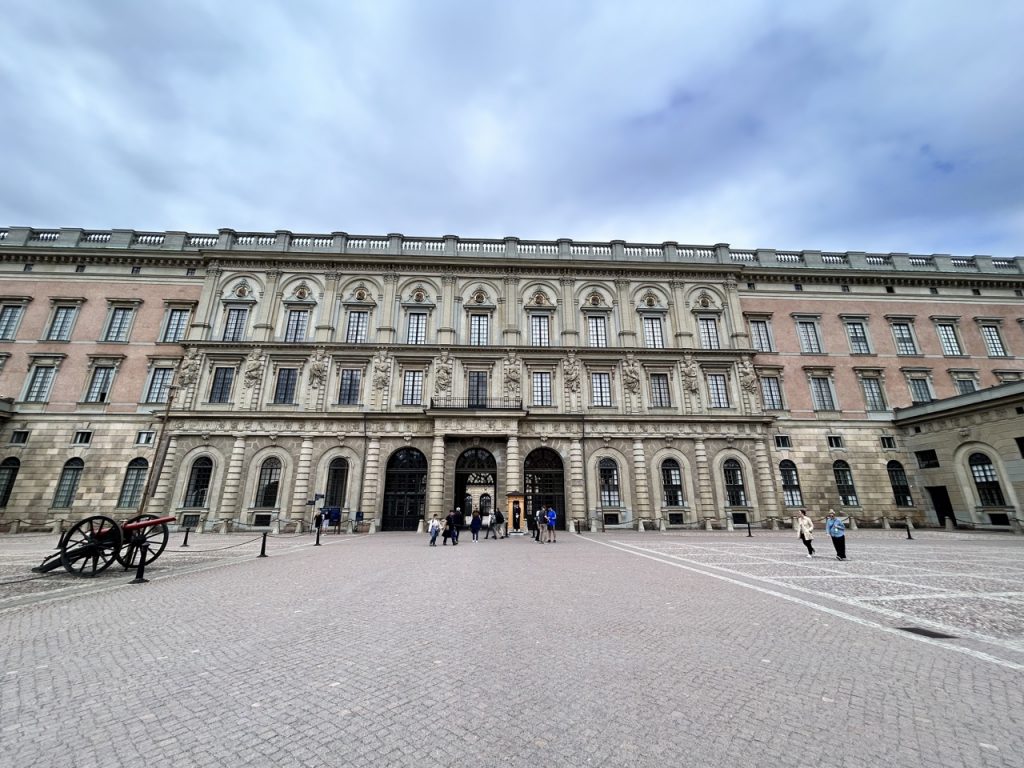
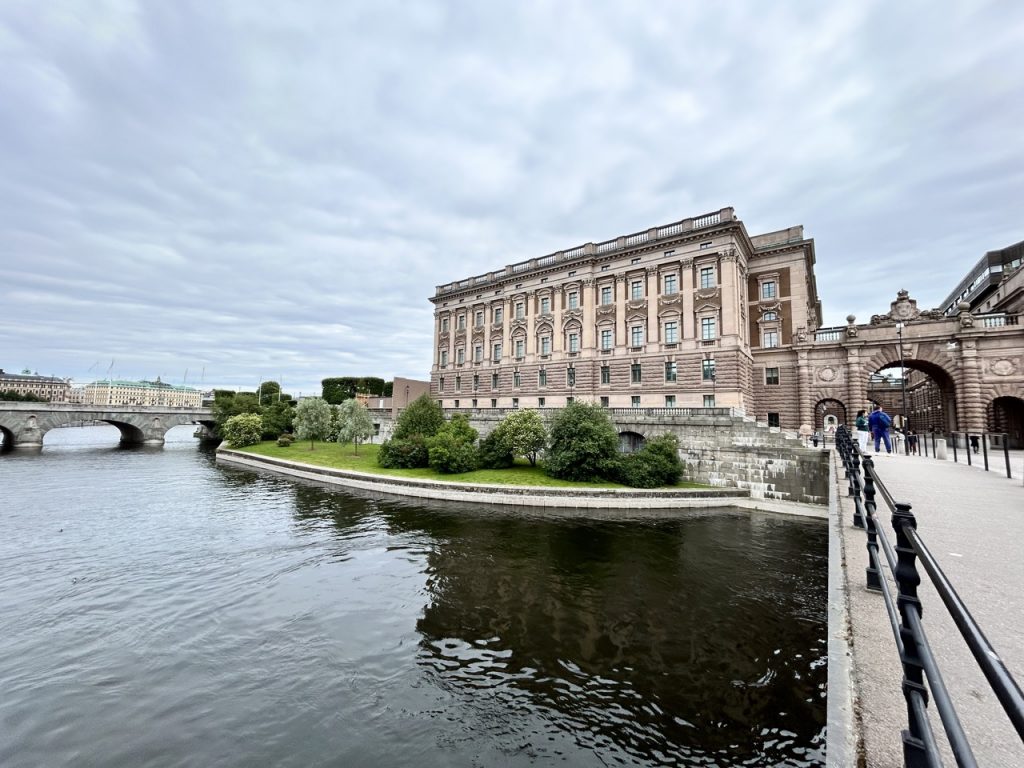
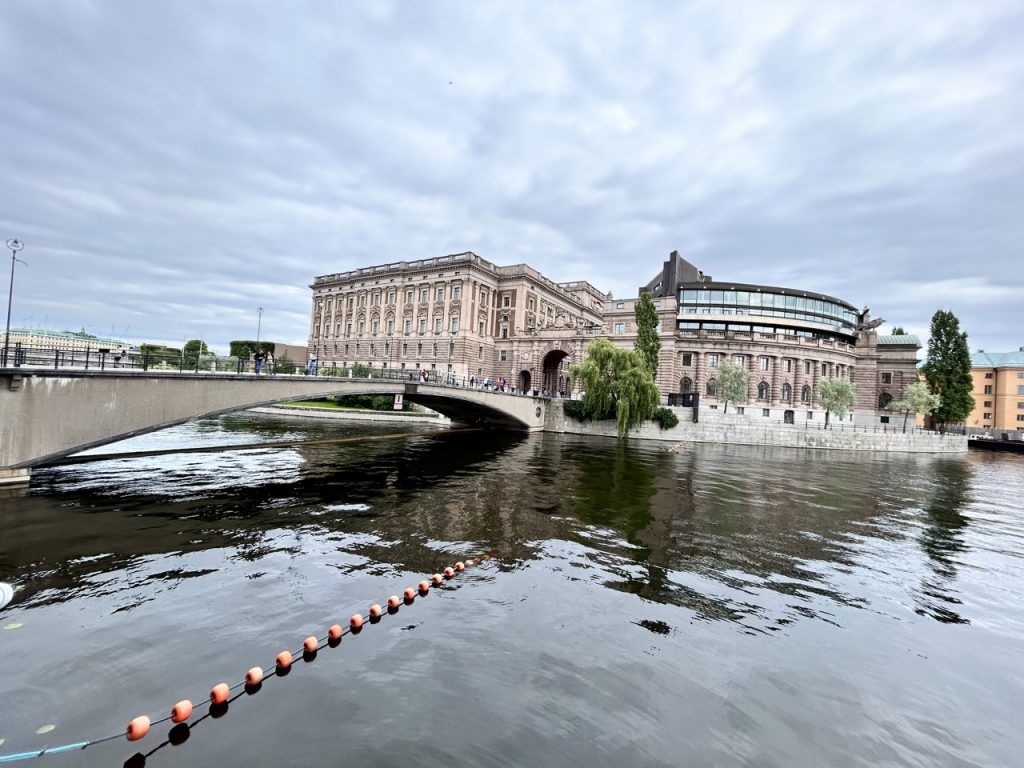
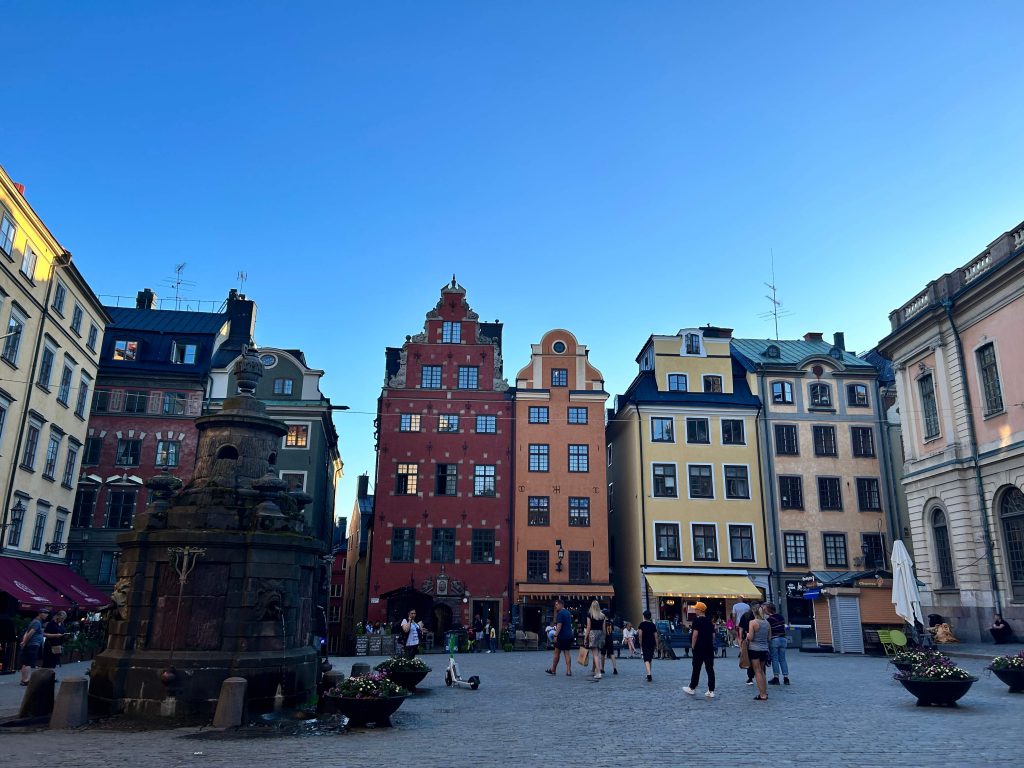
Day 2. For more than 4 years we mainly focused to visit aquariums and zoos and included plagrounds in our itineraries to keep Eric entertainted. But things have gradually changed over the past 2 years. As Eric grew up, we started exploring all sorts of museums, from classical art (such as the Picaso museum in Malaga), digital immersive art (i.e Team Lab Plantes in Tokyo) to science and technology museums. Stockholm is nothing but short in its museums list and kids will love them. On our second day in Stockholm we chose to visit the Museum of Natural History and catch a show at the Cosmonova. To get to the museum, we took the red metro line 14 and made two quick stop at Stadium (or Stadion) and Tekniska högskolan stations just to admire the mural painting and displays. Then we continued our ride on line 14 and got of at the Universitet station, which is also one of the prettiest stations in Stockholm. From here, we just followed the signs towards the largest museum in Sweden. We bought our tickets on site (only cards are accepted, no cash!), but they can be bought online too: https://www.nrm.se/engelska/in-english/visit-the-museum/opening-hours-and-admission#admissionfeesandticketpurchase. We chose the combined ticket that included a visit to the museum and all its exhibitions and one show at Cosmonova, the largest dome cinema in Sweden. There are currently three different shows, but Eric chose a 45 minutes documentary on blue whales. The museum is indeed big, so we spent the entire day here and left the museum when it closed its doors at 5pm.
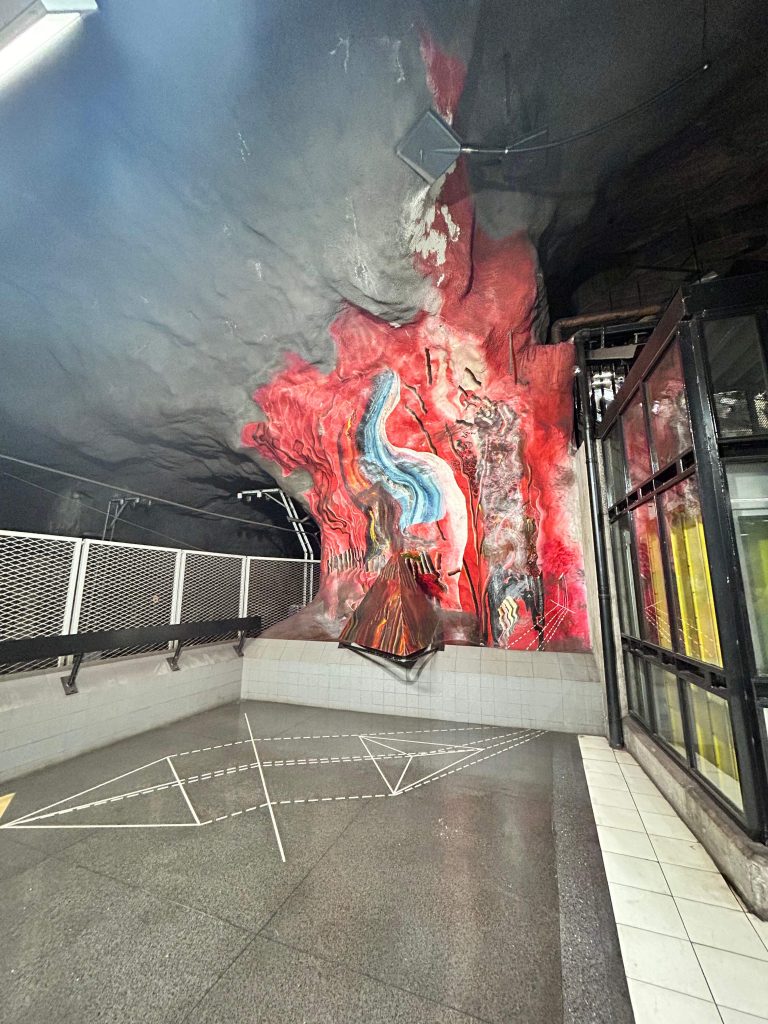
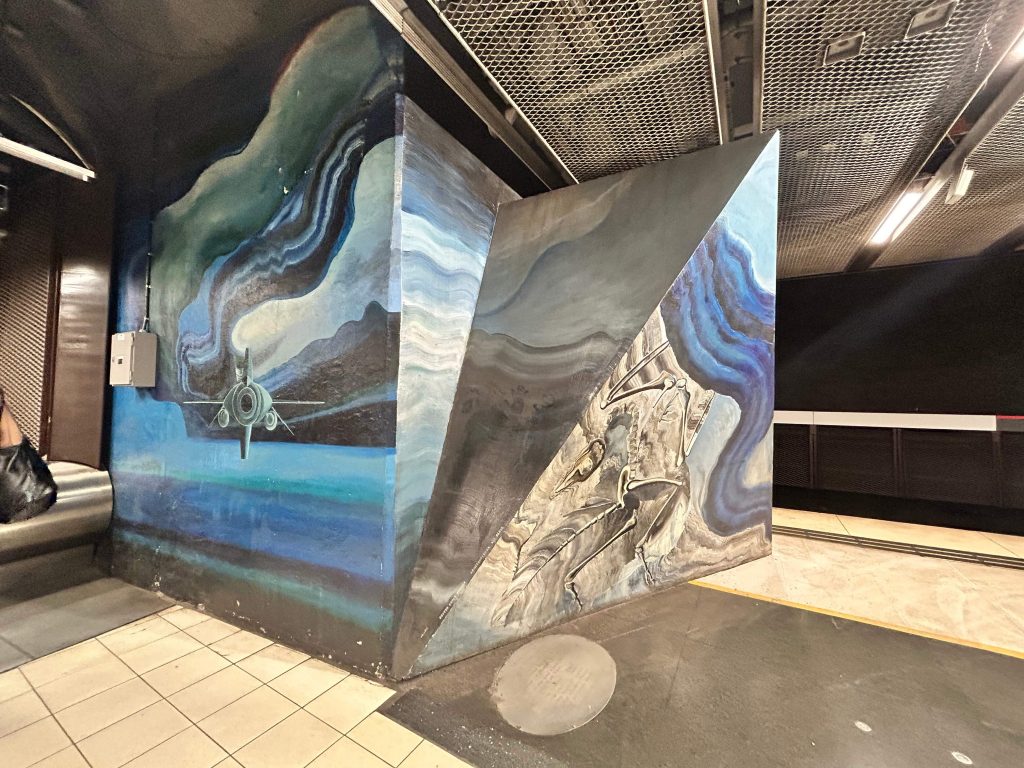
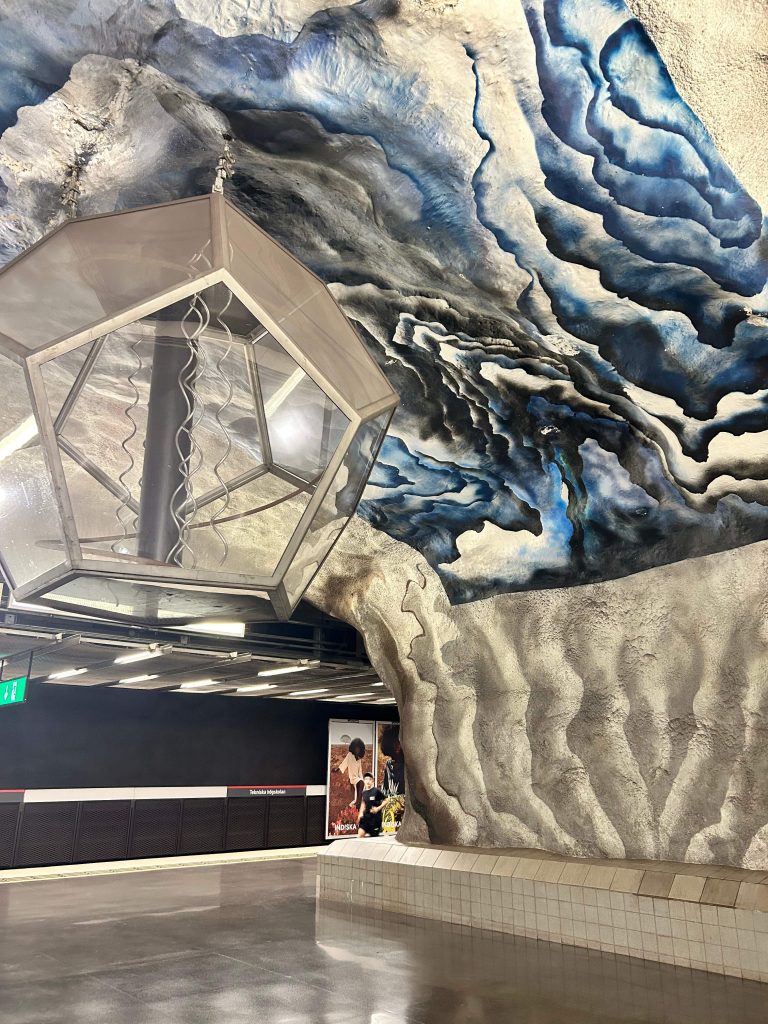
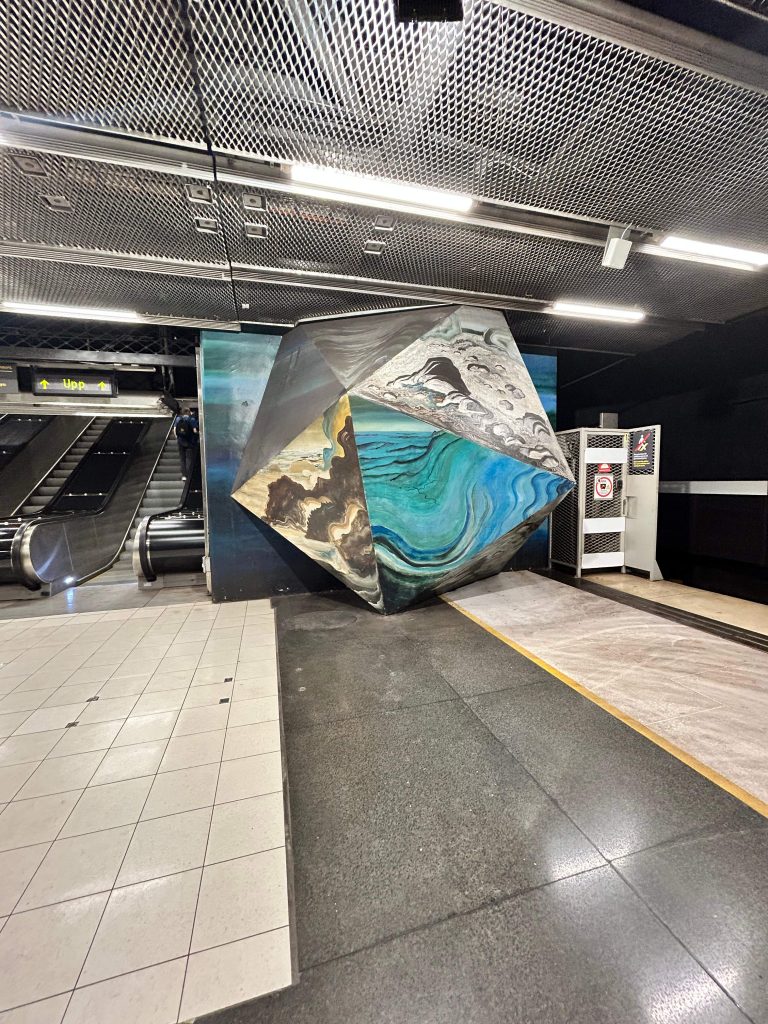
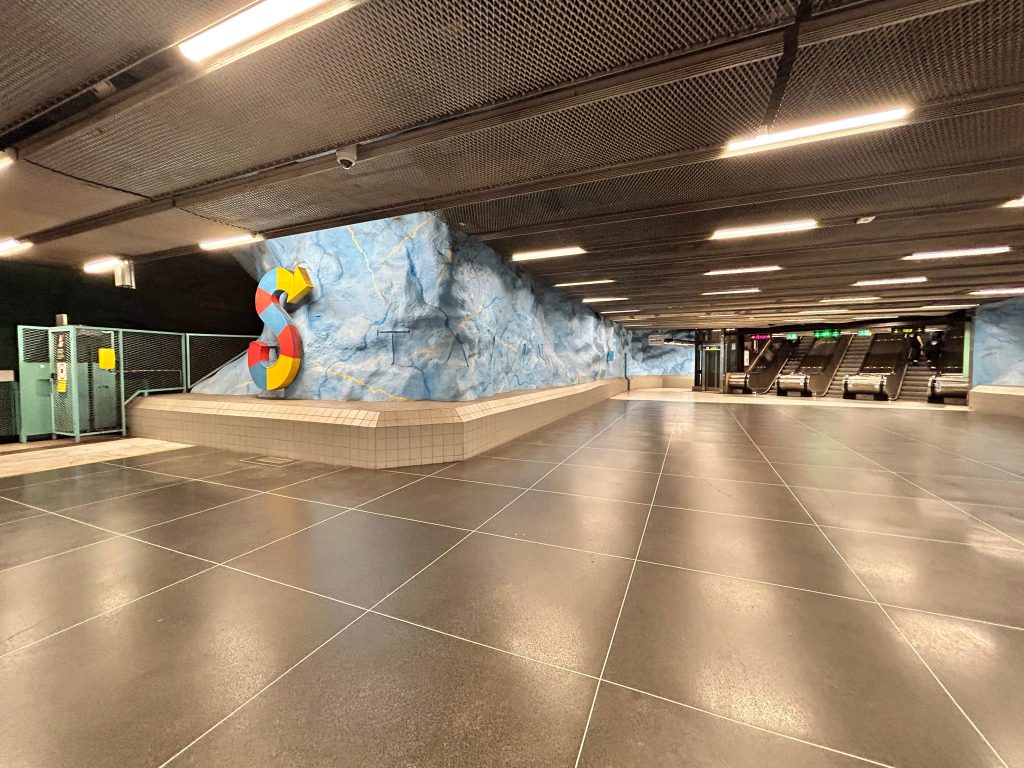

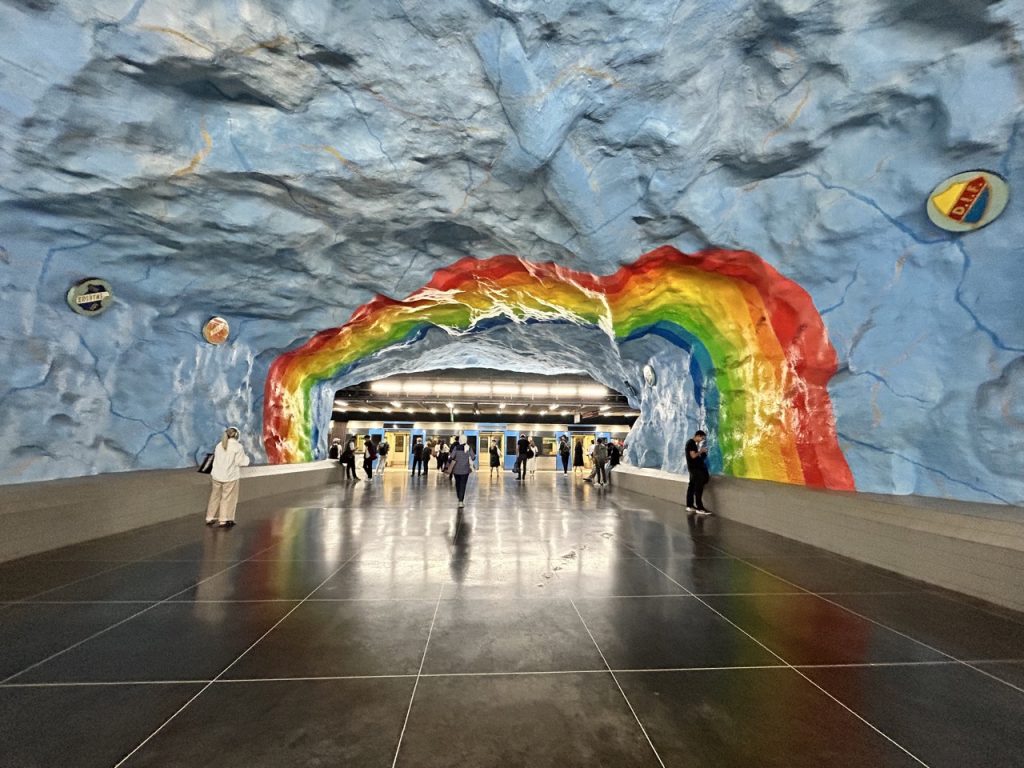
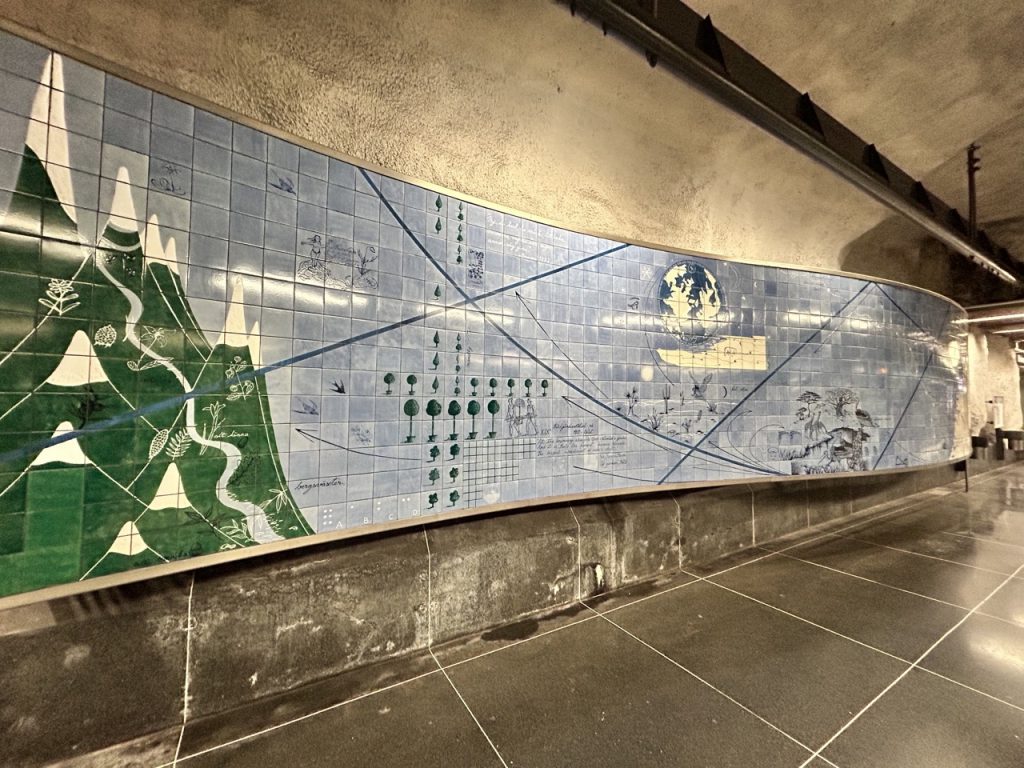
Pretty metro stations
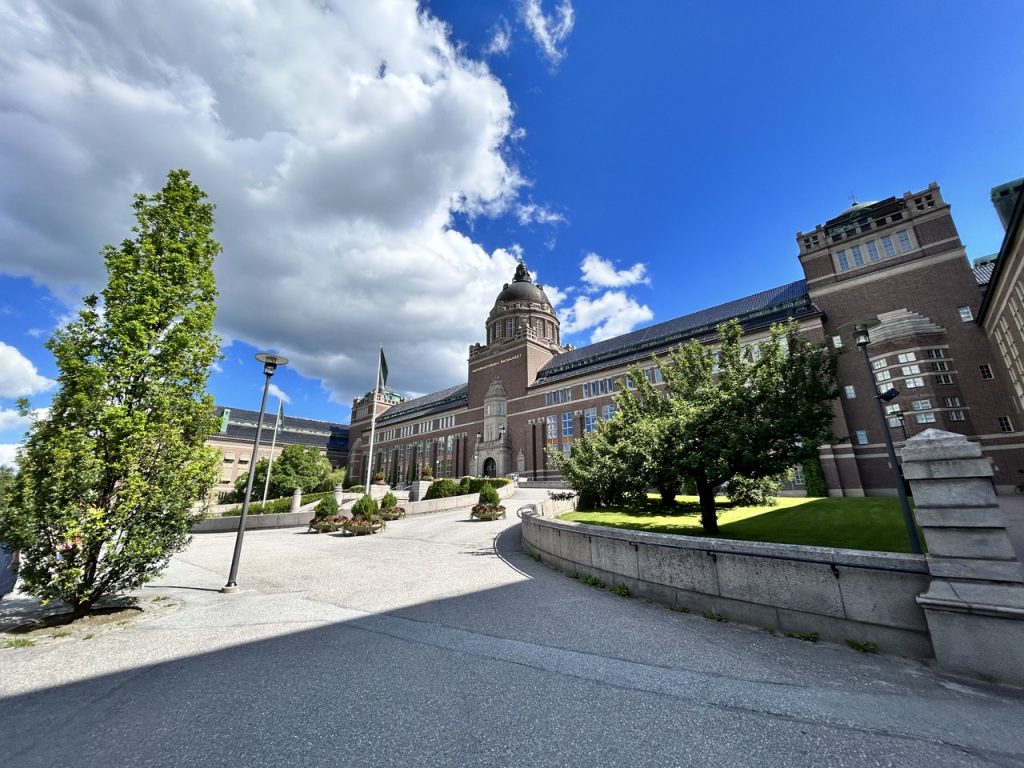
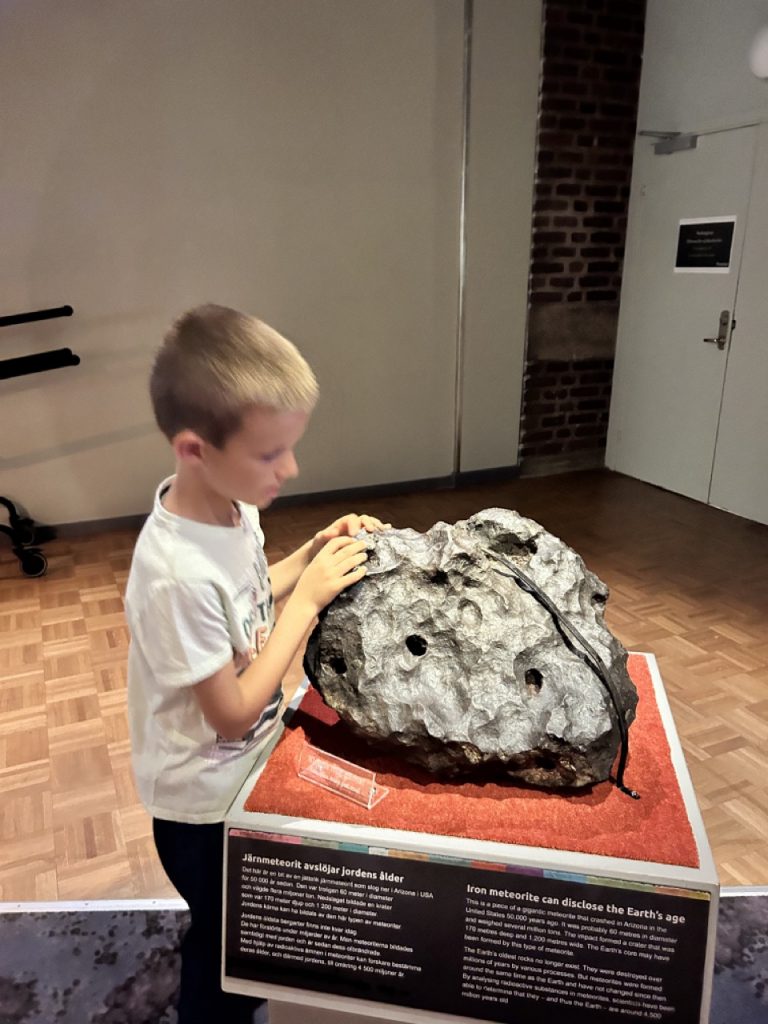
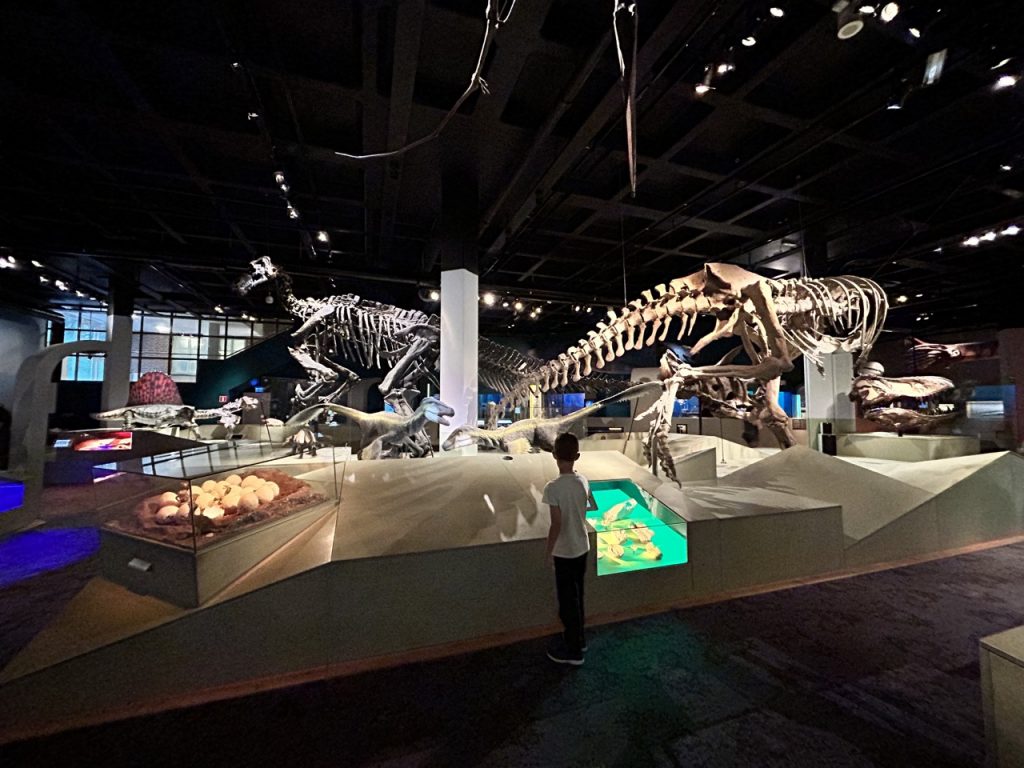
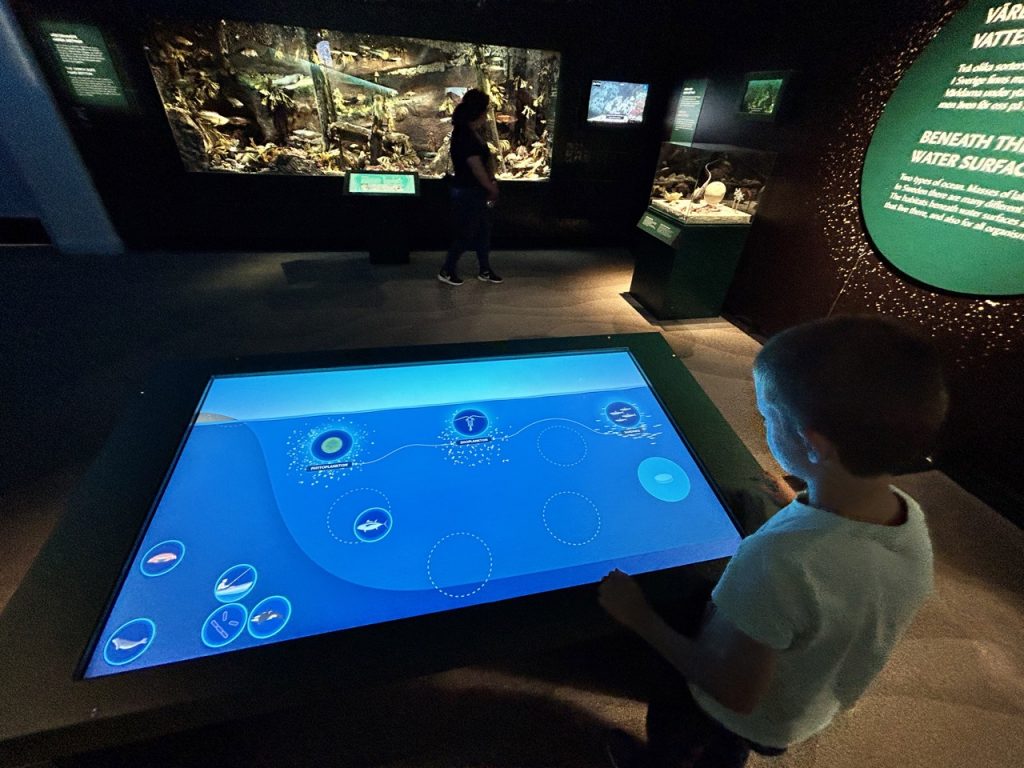
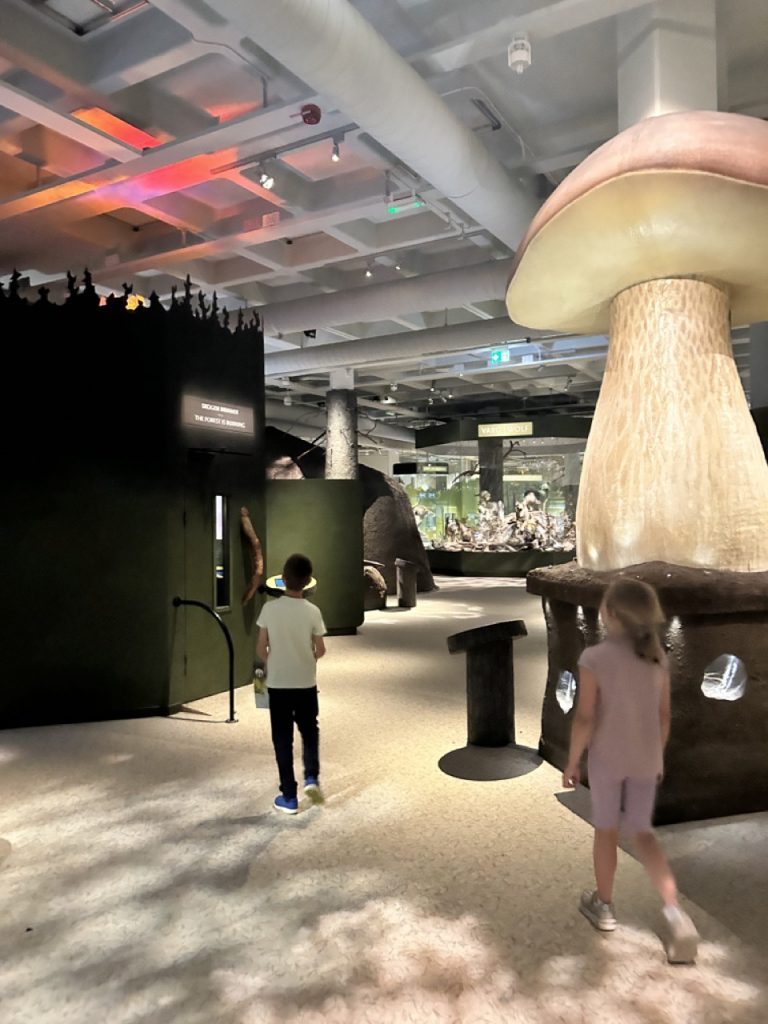
Tips:
- you can save time if you book a Cosmonova show after 5pm, that way you can spend more time in the museum.
- They have an on-site restaurant, but picnic areas are also available with microwaves for the clients
- The museum map is available online: https://www.nrm.se/engelska/in-english/visit-the-museum/map and also on site and is great to navigate and check whatever exhibitions are more appealing to you
Highlights:
- Ground level 4 (this is the entrance level) and houses the Fossil and Evolution, The Human Journey, The Polar Regions, Biodiversity, A Souvenir for Life, and Mission: Climate. Needless to say, Eric loved the Fossils part, the Human journey and the polar regions. No surprises. The exhibitions ( Fossil and Evolution, The Human Journey) follow a chronological path and it all starts with the Big Bang. There’s even a piece of metheorite that you can touch. How cool is that? All exhibitions feature interactive displays to learn more and quizes to test your knowledge.
- Ground level 5 (the upper level) features exibitions on World of water, Nature in Sweden, The Animal Human, The researching museum, Expiditions, and Treasures from the Earth’s Interior. Eric loved the first two and tested his knowledge regarding the flora and fauna of Sweden with the interactive quiz displays. Sadly, we had no time to see the other exhibitions as the museum was already closind and had to make our way to the exit.
We spent the evening walking around Strandvagen lined with boats transformed into bars and restaurants.

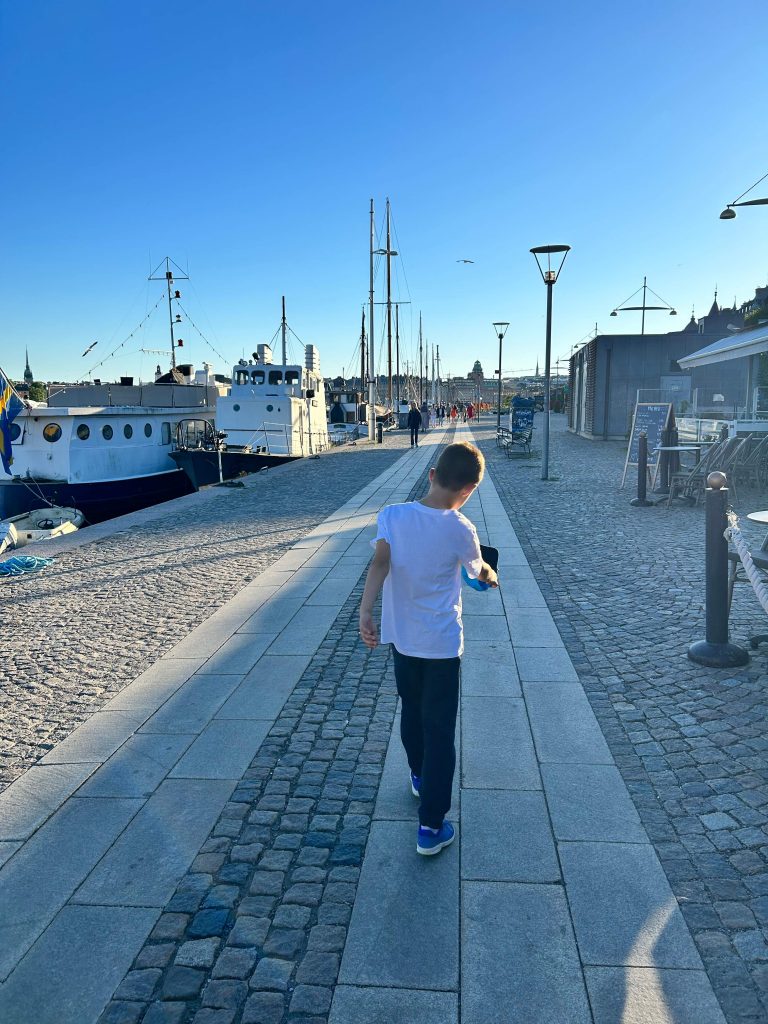
Day 3. It’s official! Stockholm has become the visit-one-museum-per-day holiday. Today we spent the entire day (8h) inside the Museum of Technology. To get here we took bus 69 from the central train station (there are signs that point you in the bus station direction). The museum is located in the Djurgarden park, so ideally it is best combined with a stroll thorugh the park. The museum is huge and very interactive. Not to mention that they have a dome-cinema as well, the Wisdome, with short 3D films.
Tips:
- Shows at Wisdome are eiter in Swedish or English. There are no headphones for translations if you don’t know Swedish, so be careful what you choose.
- They have an on-site restaurant, but picnic areas are also available with microwaves for the clients. There’s also a small play area to keep kids entertained.
- The museum map is available online: https://www.tekniskamuseet.se/en/map/#map-floor-0.
- They have free lockers to store your stuff while visiting the museum (to the left of the main entrance)
- You can exit and return to the museum if you wish. There’s a nice playground outside the main entrance.
Highlights: to be honest, all exbitions are truly amazing, very interactive and nicely designed for learning through play.
- Floor 0 (entry floor): Zero City was super fun to learn about climate change and all these new inventions designed to reduce carbon emission and to protect the enviroment. Super interactive: pedal to make energy, dance to plant trees on top of buildings, navigate using wind and different boats to name just a few. Megamind is probably where we spent the most time: paint with your eyes, math quizes, use AI to build stuff, choose music with your thoughts, focus games and many many more. Wisdome entance is on this floor. The Forest is a new exhibition where we learnt about projects in Sweden that research the use of nature to produce soft fabrics (out of wood), to replace artifical grass on football fields, transparent wood and many more.
- Floor -1: Play and learn is a space for younger kids with several games. Eric loved the asteroid mining game that educates on future goals for asteroid mining. The Mining exhibition is the oldest one and it literally simulates a mining tunnel. Featuring all sorts of interactive displays and games that educate upon the mining activities and how they are done.
- Floor 1: Hyper Human an exhibition on how technology can help human kind from prosthetic limbs to the controversial genome editing.
- Floor 2: The exhibition on computer games Play Beyond Play offering a historical perspective on how this domain has evolved. From classical computer games to todays virtual reality. It’s an entire floor dedicated to this exhibition. Can you guess the museum floor where we spent the most time?
From the Museum of Technology we walked over the bridge to the right of the museum entry into Djurgarden, an area for relaxation, hiking and enjoying nature. A residence of the royal family is located in this park, but it is now closed for visiting. The Rosendals Palace is a short walk from the Museum of Technology. Even though we knew it was closed for the public, we stopped on our way to the ferry pier Allmänna gränd. The rest of the trail goes through the woods and near a labyrinth, which was sadly cut down. We reached the ferryboat pier in roughly 45 minutes and boarded ferryboat no. 82 that took us to Gamla Stan (Slussen).
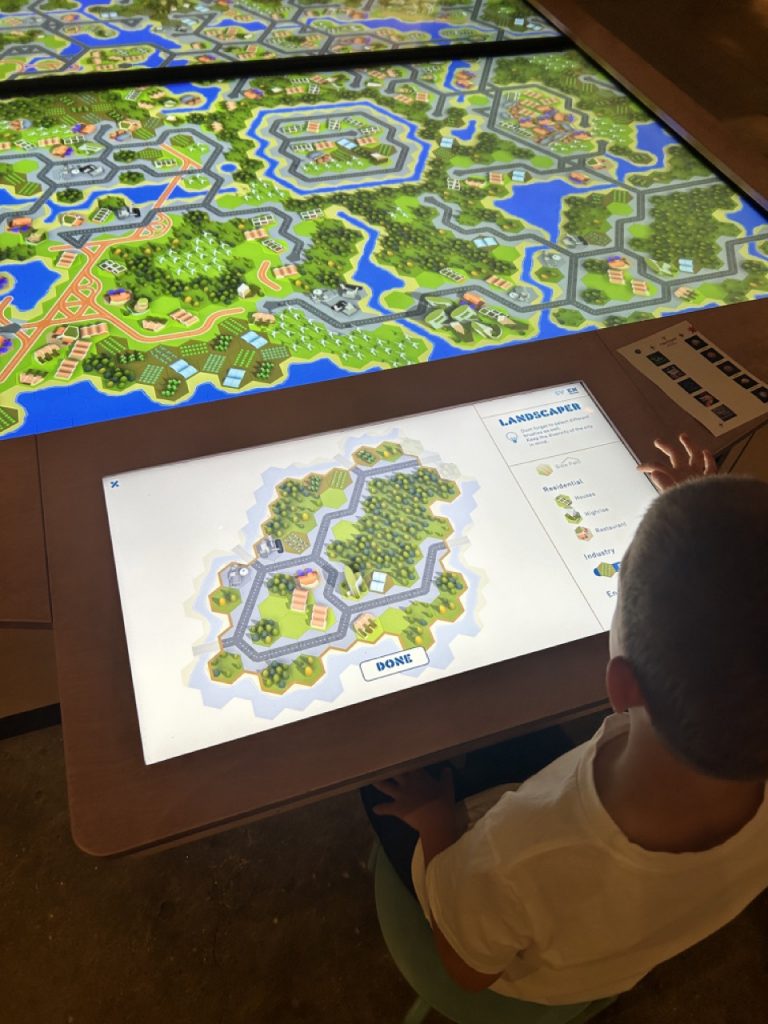
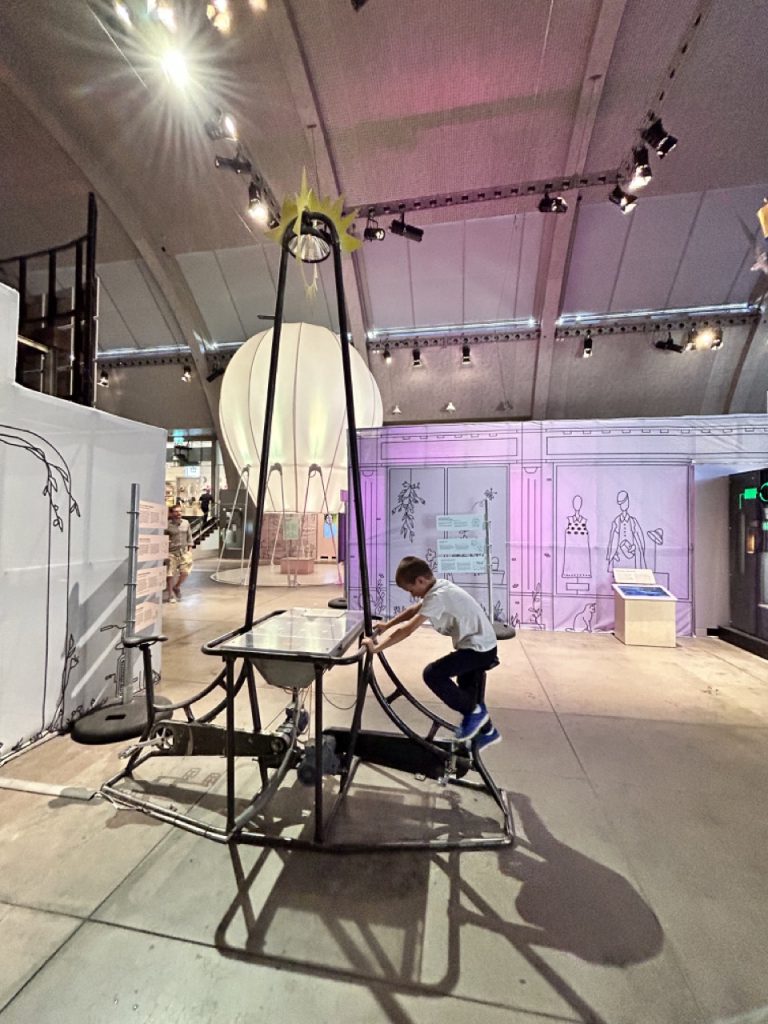
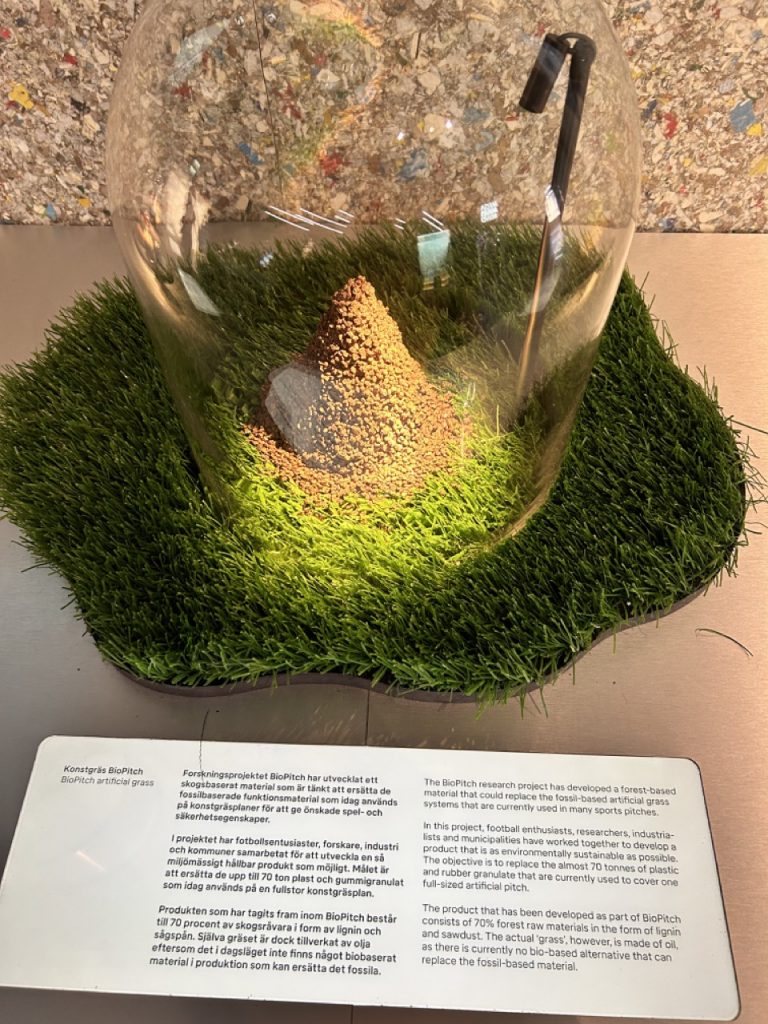
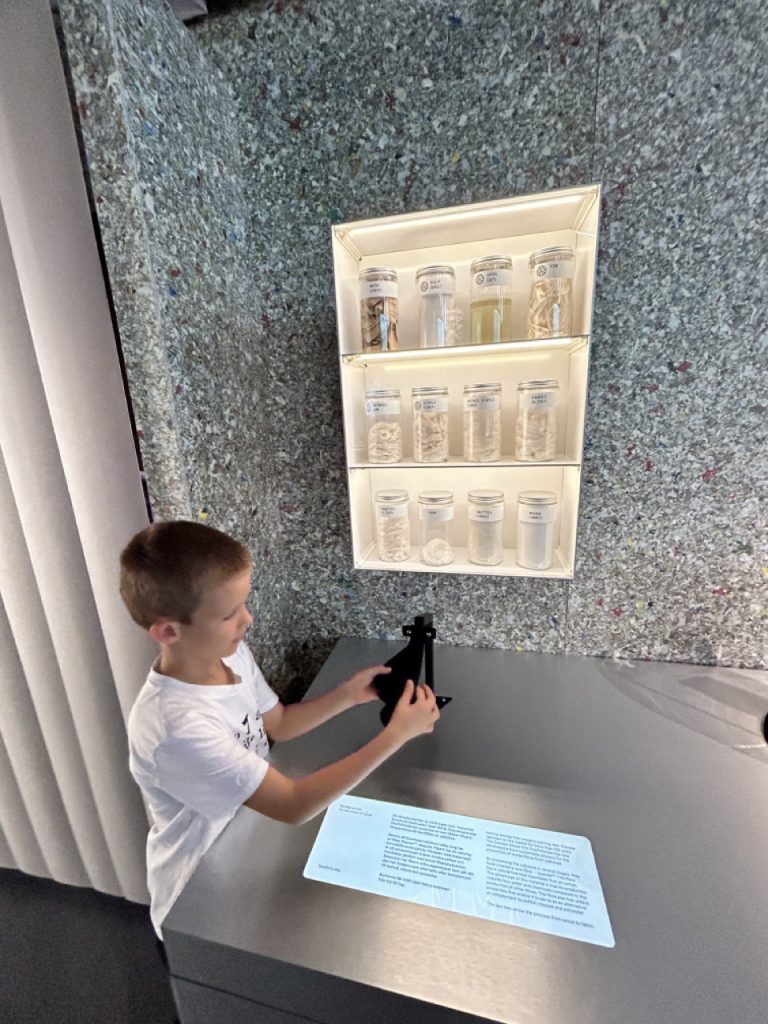
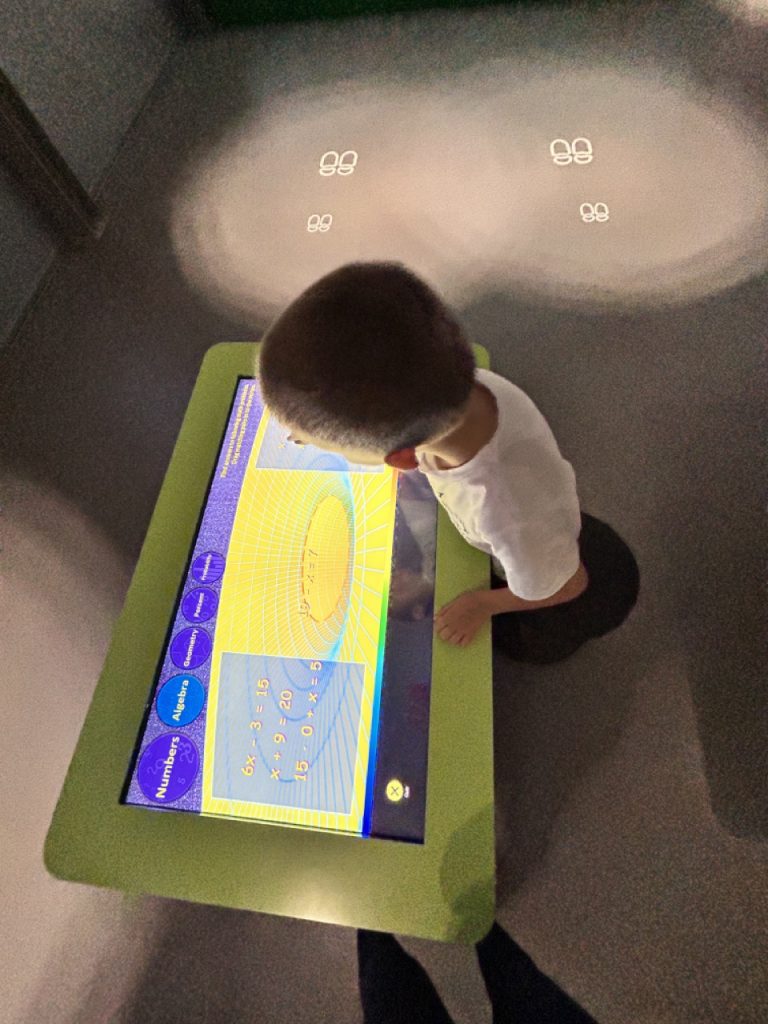
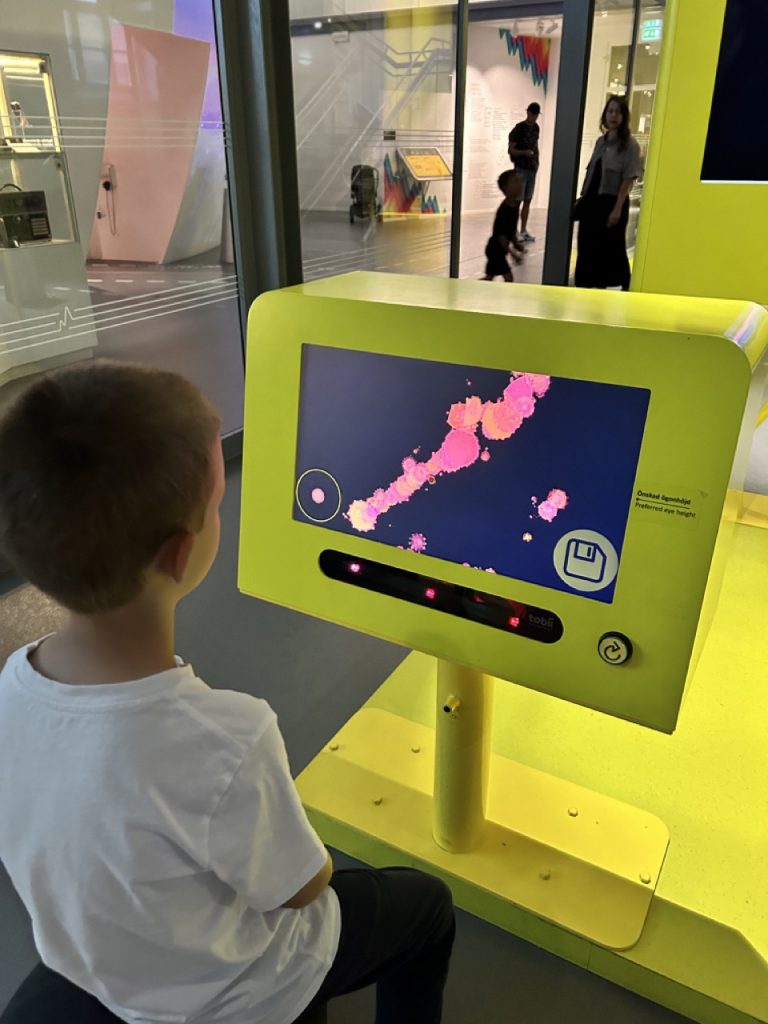
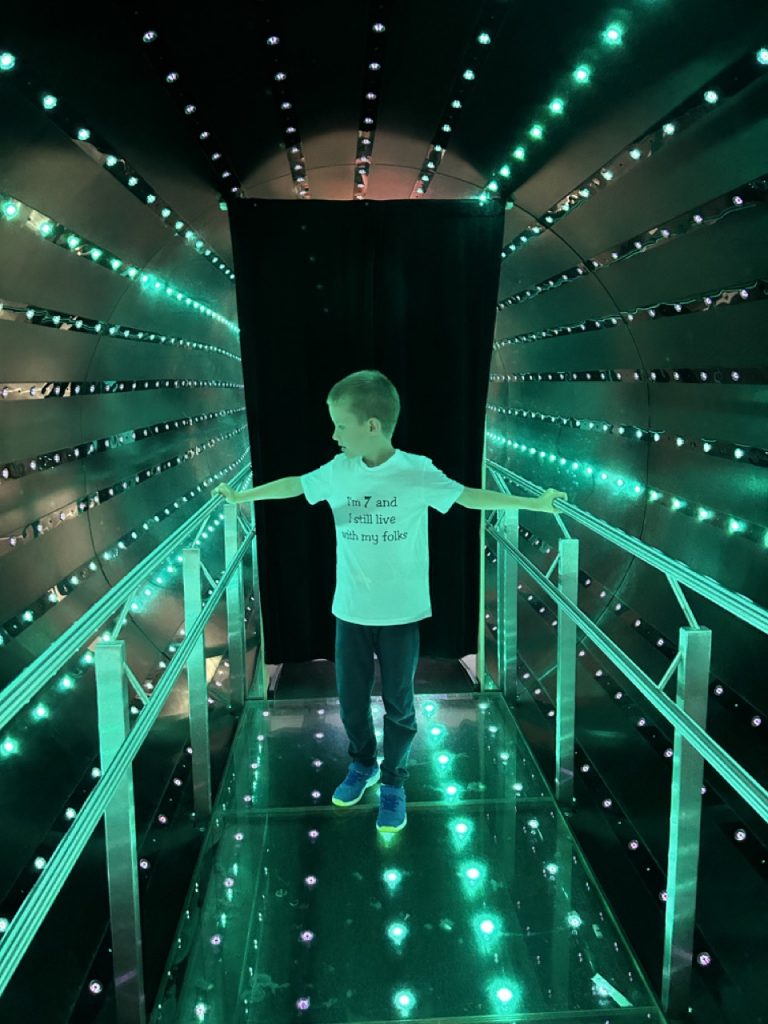
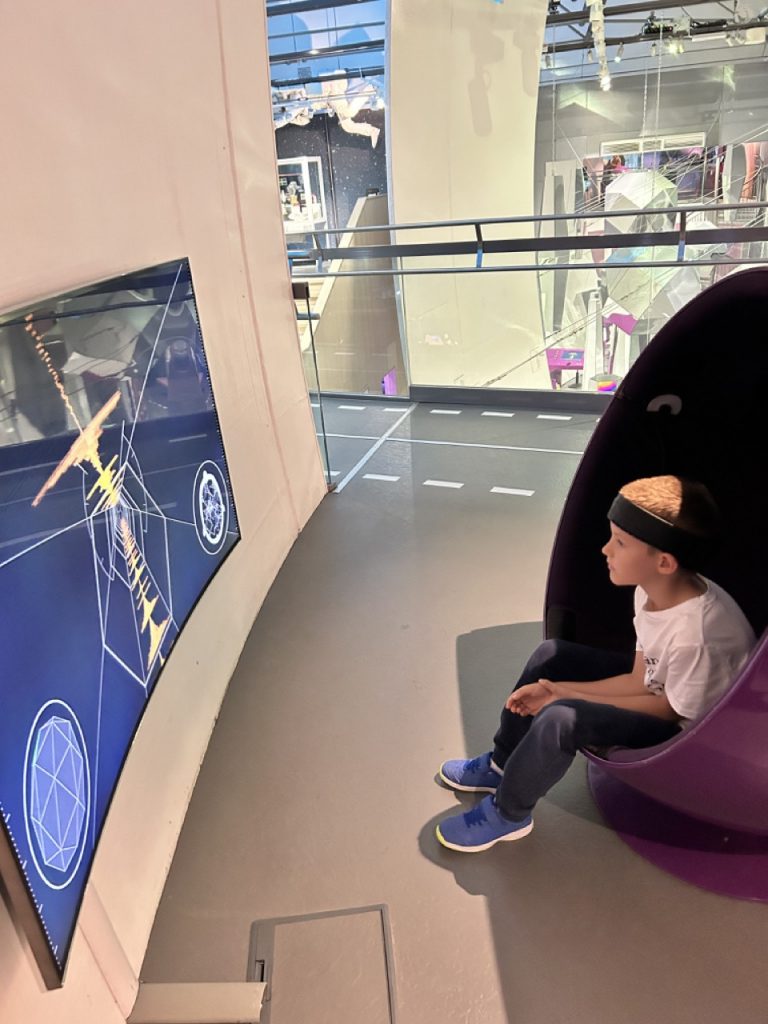
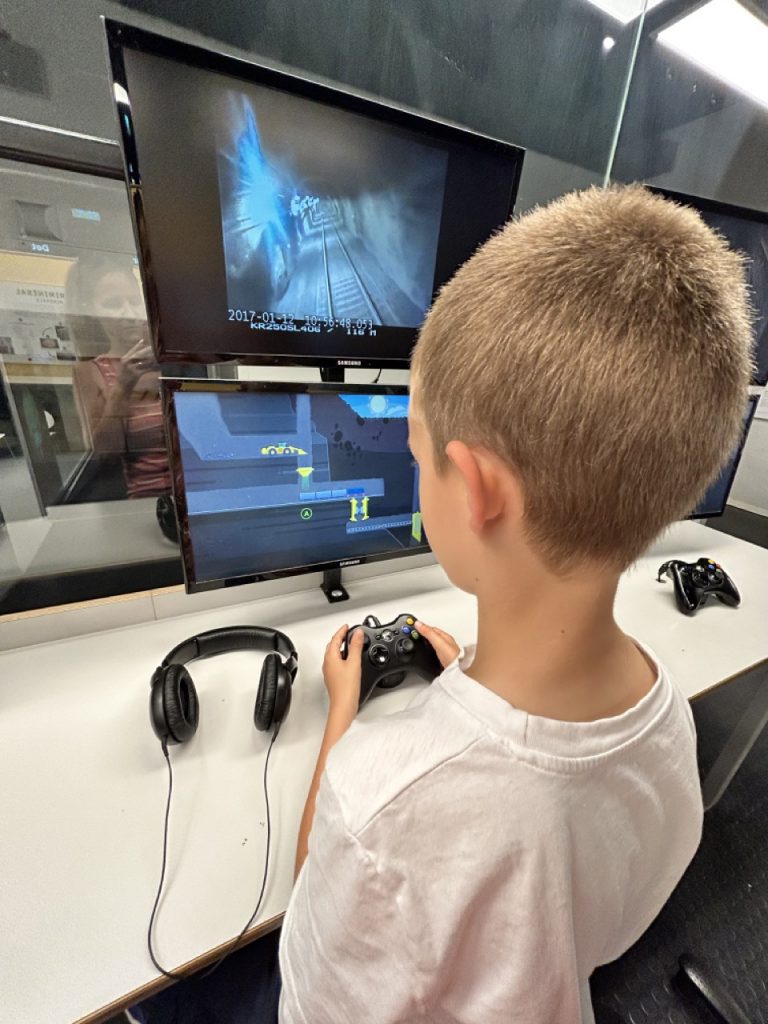
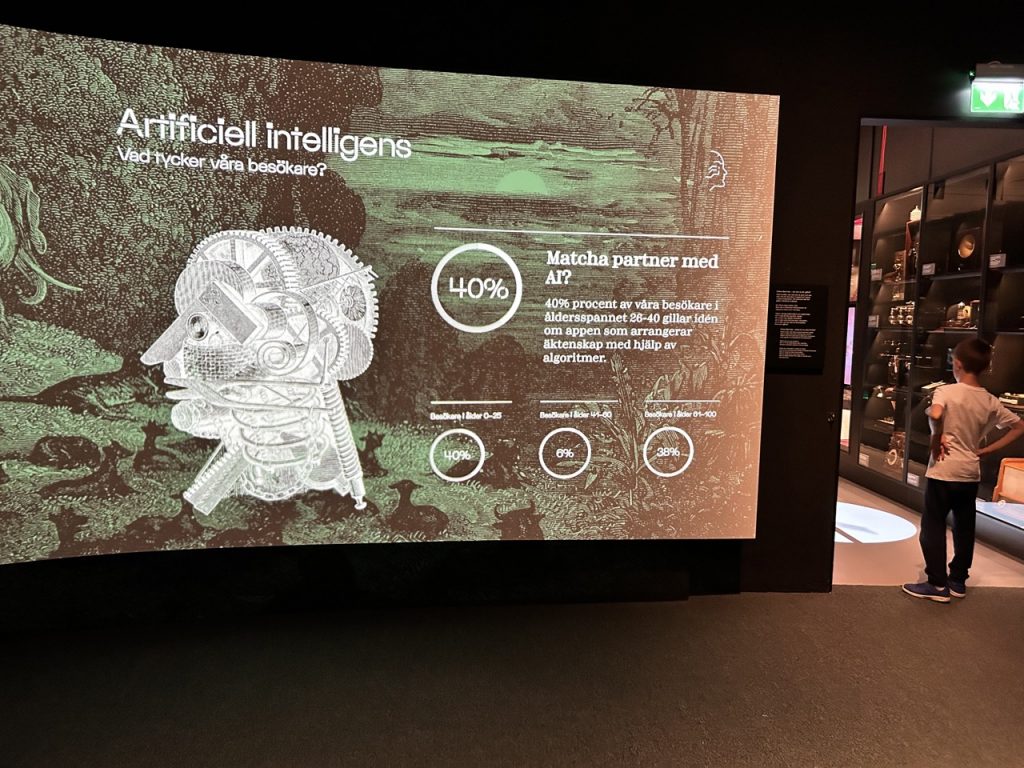
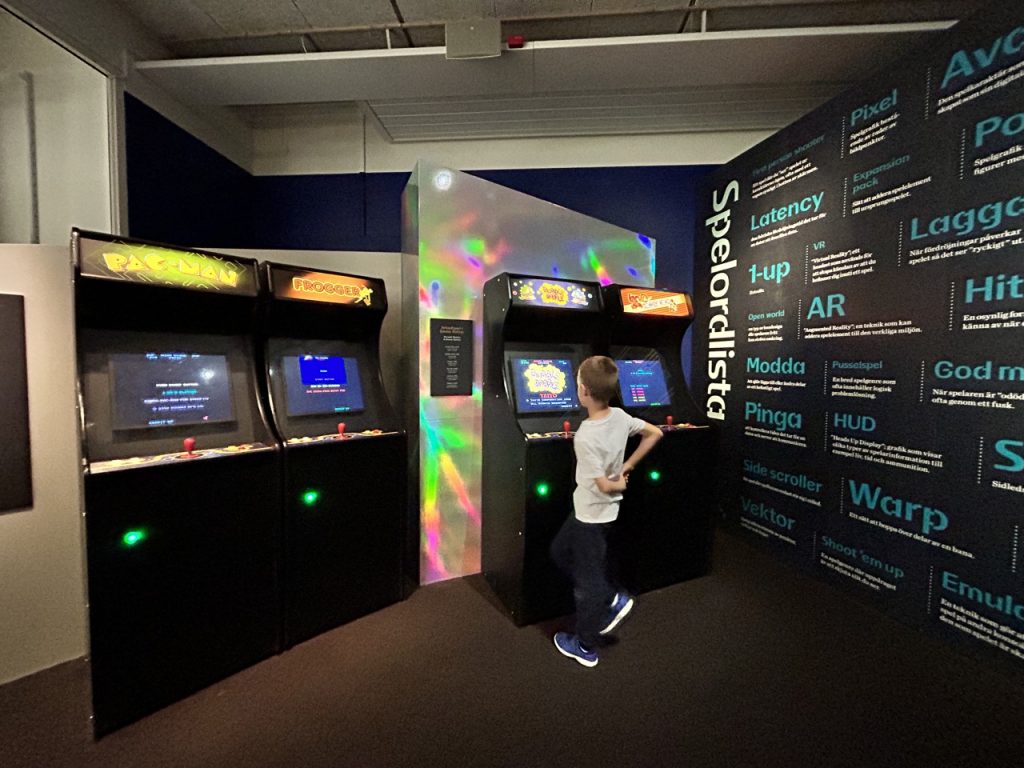
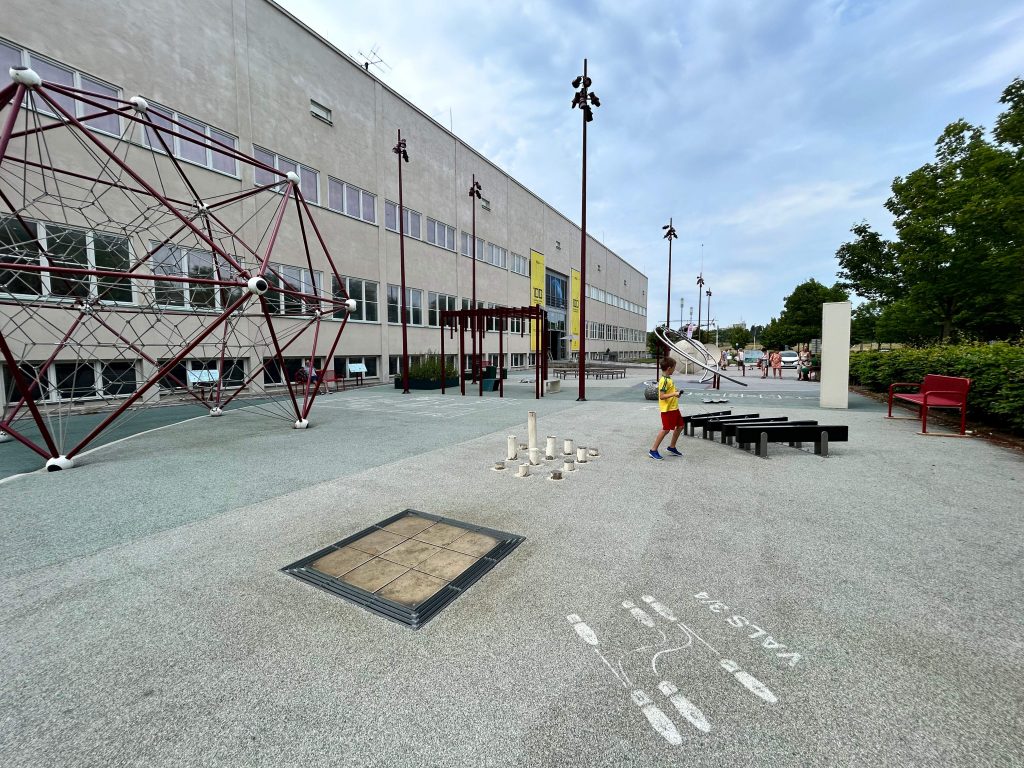
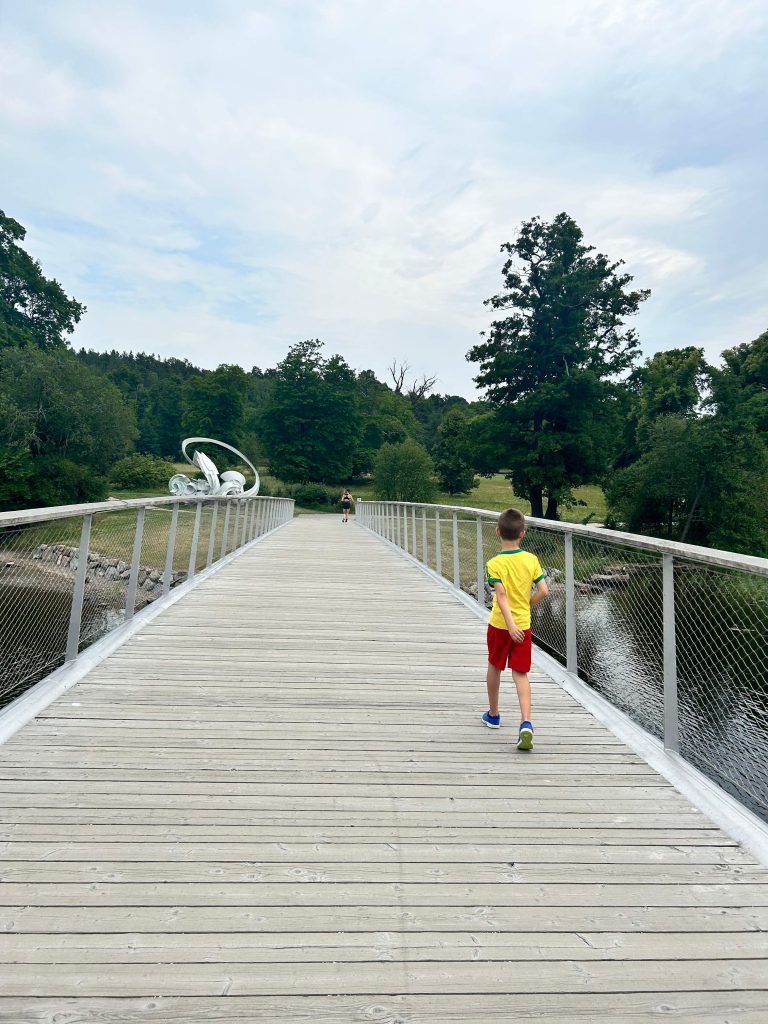
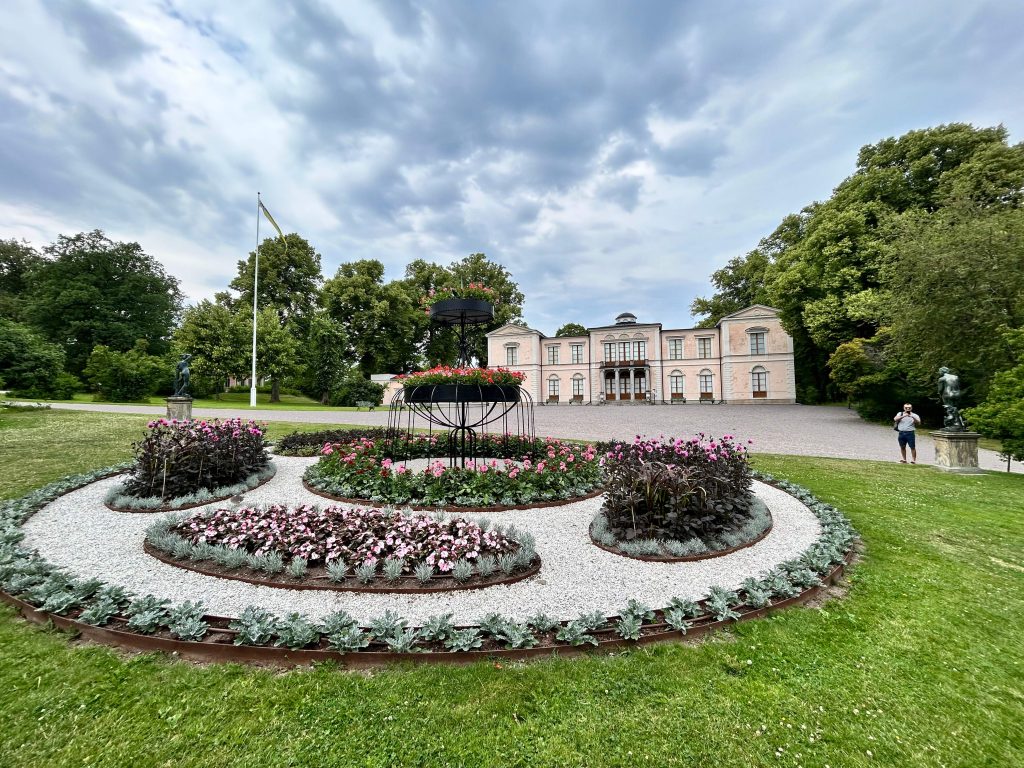
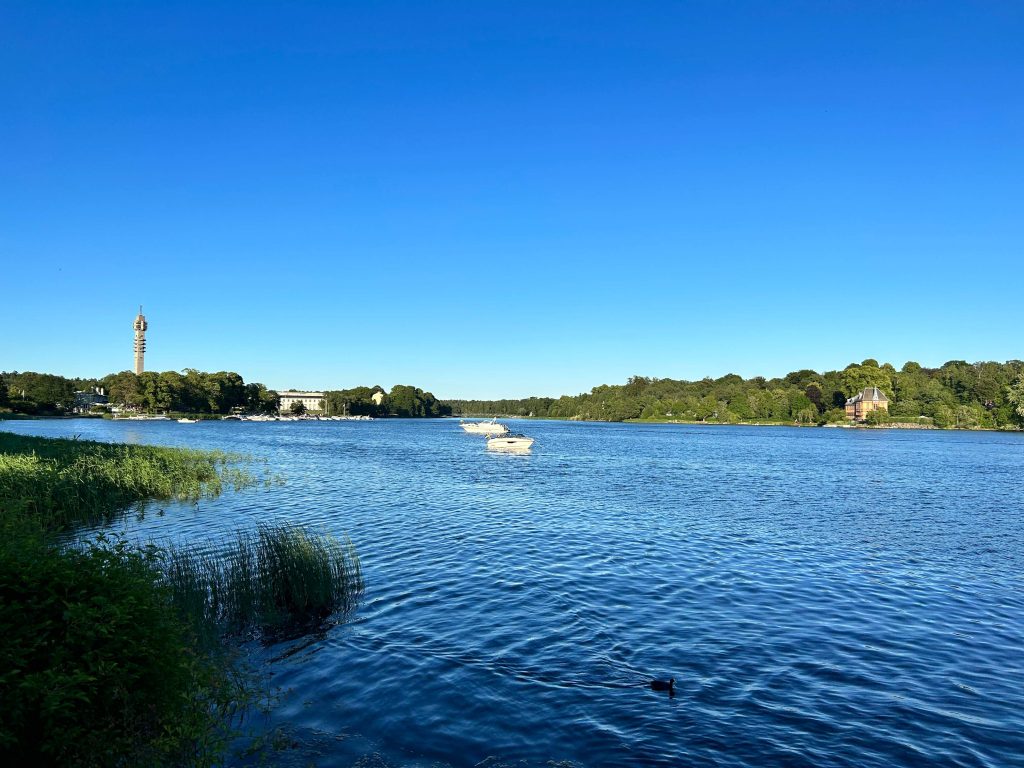
Day 4. Scansen is the oldest open air museum in the world. Although I initially thought it’s a museum featuring traditional houses from all over Sweden, it’s actually more than that. Which is why this day quickly turned into yet another day dedicated to only this museum. To get to Skansen, we first jumped on metro line 14 from T-centralen to Kungsträdgården Station just to see it with our own eyes. And I’m glad we did, as it was one of the best I’ve seen in Stockholm. From here, we walked around the royal park of Kungsträdgården and then headed towards the Nybroplan tram station from where we took a pretty old fashioned tram (line 7) and got off at Skansen station, just across the actual museum entrance. We bougth our tickest on site, but it is obviously possible to buy them online here: https://biljett.skansen.se. Skansen, as I already mentioned, it’s not just about traditional farm or manor houses. It’s also home to the Blatic Sea Science Center, which is located to the right of the entrance and it is included in the standard ticket. Unlike the aquarium, which requires a supplementary fee. The Baltic Sea Center focuses on the formation of this relatively new sea, has some fish tanks and a few interactive stations. Sadly, some where only in Swedish. As with almost any museums nowadays, it includes a large exhibition regarding environmental problems and solutions. From here we walked towards the zoo, where the Nordic animals were and on our way we visited some of the traditional houses. It was super nice as the staff was dressed in medieval clothing and offered all sorts of stories and info regarding the houses and the way people lived back in the days. Skansen provides also informative talks about the animals in the zoo and the schedule of the talks is available at the entrance. The zoo is home to the wolverine, elks and reindeers, amongst others. I’m mentioning these here as Eric was interested in seeing these first and foremost. We also got to see a Sami traditional hut and talked to one of the staff regarding the Sami people and culture. There’s a nice playground and a picnic area right next to the kids’ zoo, which is an indoor area. Several workshops are available and demonstrations in the town quarter, to the left of the main entrance. Eric loved the glass making performance, where we spent at least half an hour, and the engineering/mechanics workshop. There are several shows happening inside Skansen and the calendar is available online: https://skansen.se/en/plan-your-visit/opening-hours-and-prices/.
We spent the entire day in Skansen and left when it was closing at 6 pm. We returned to the city center using the same tram line 7.
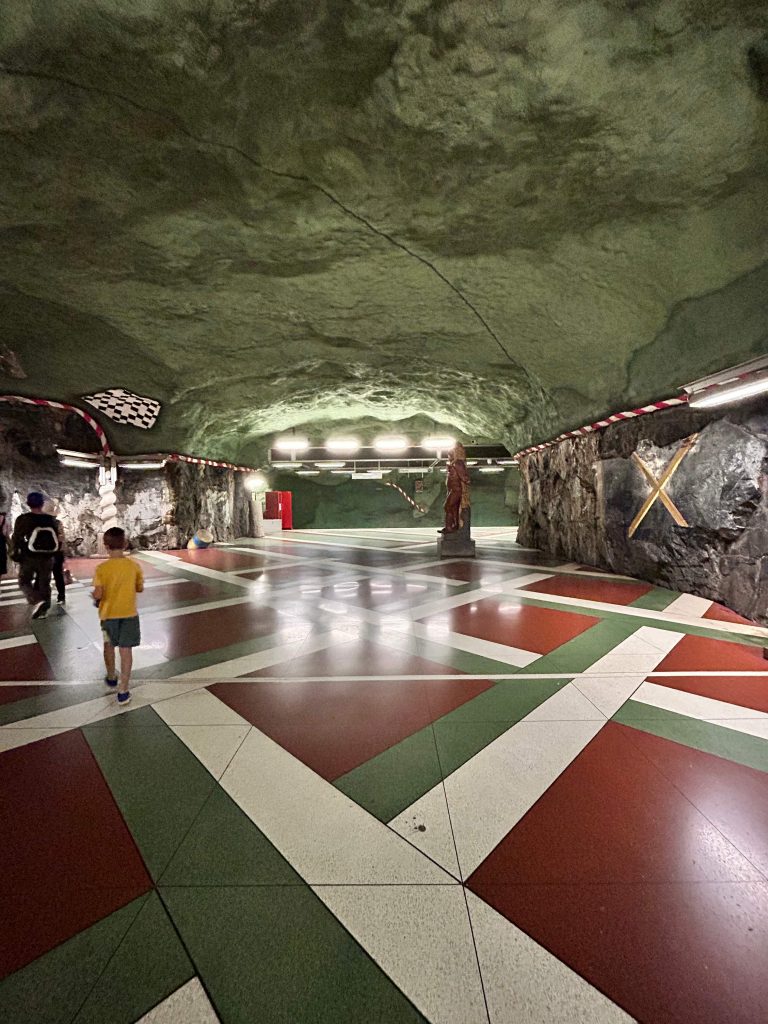

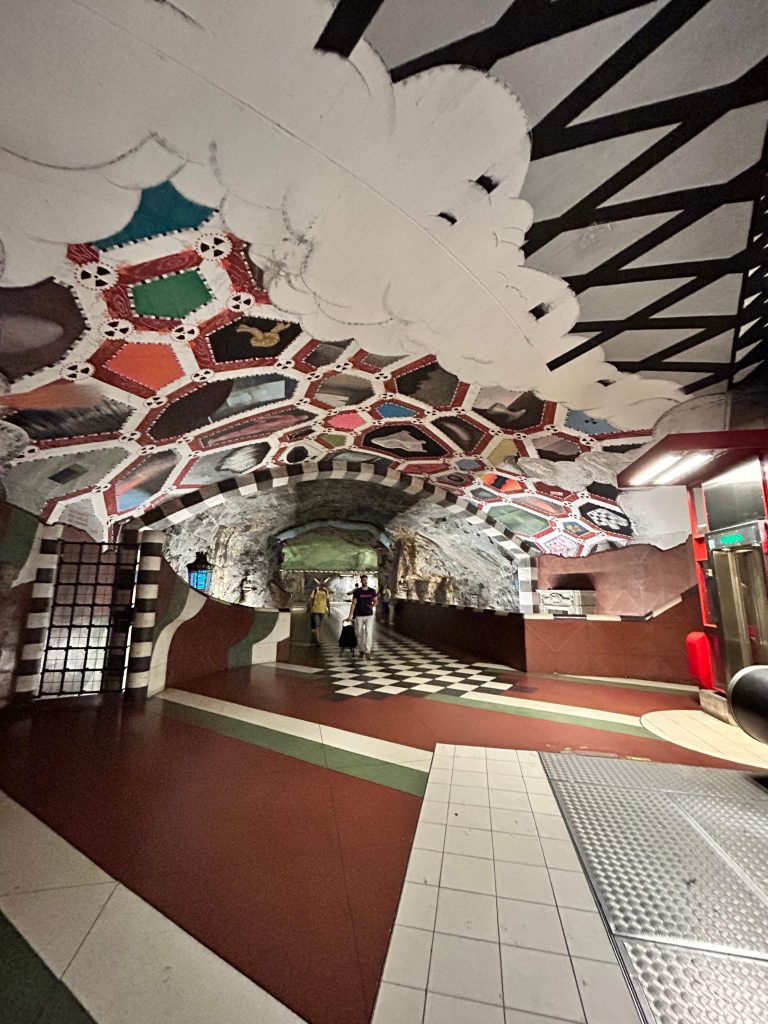
Kungsträdgården Station
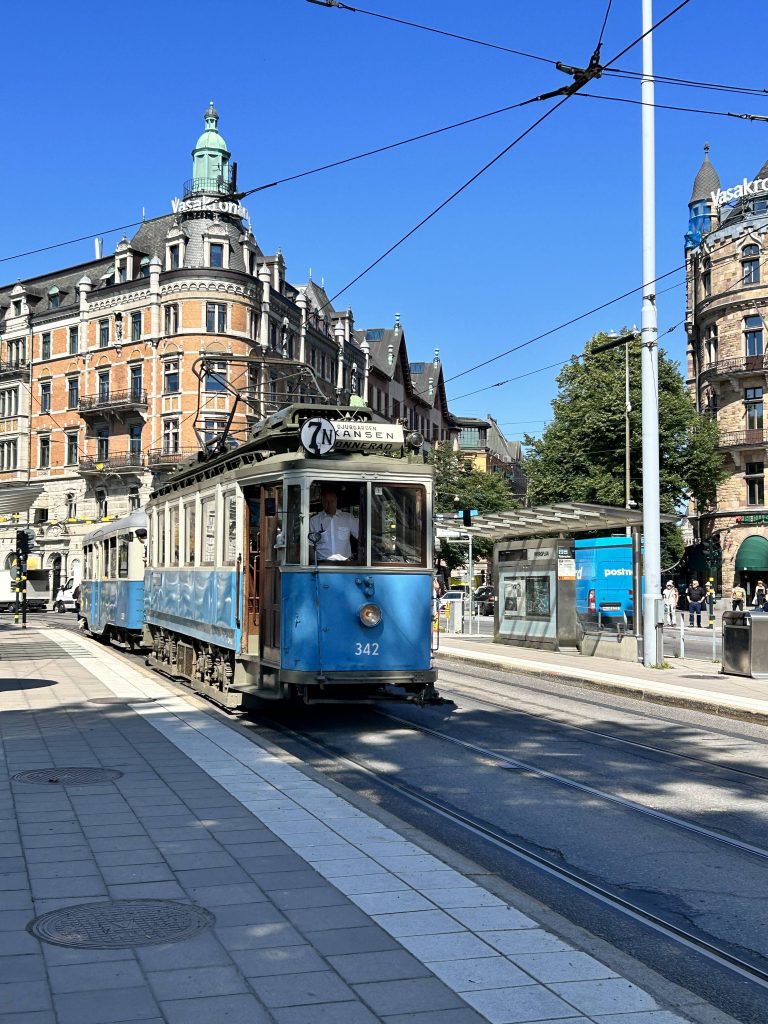
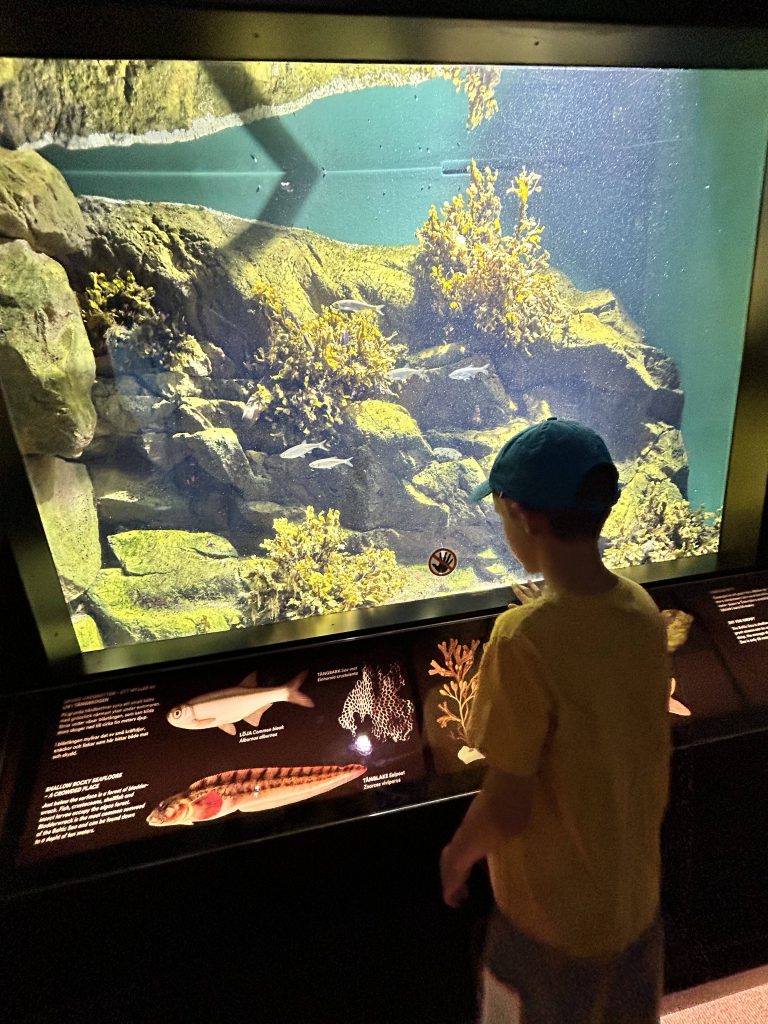
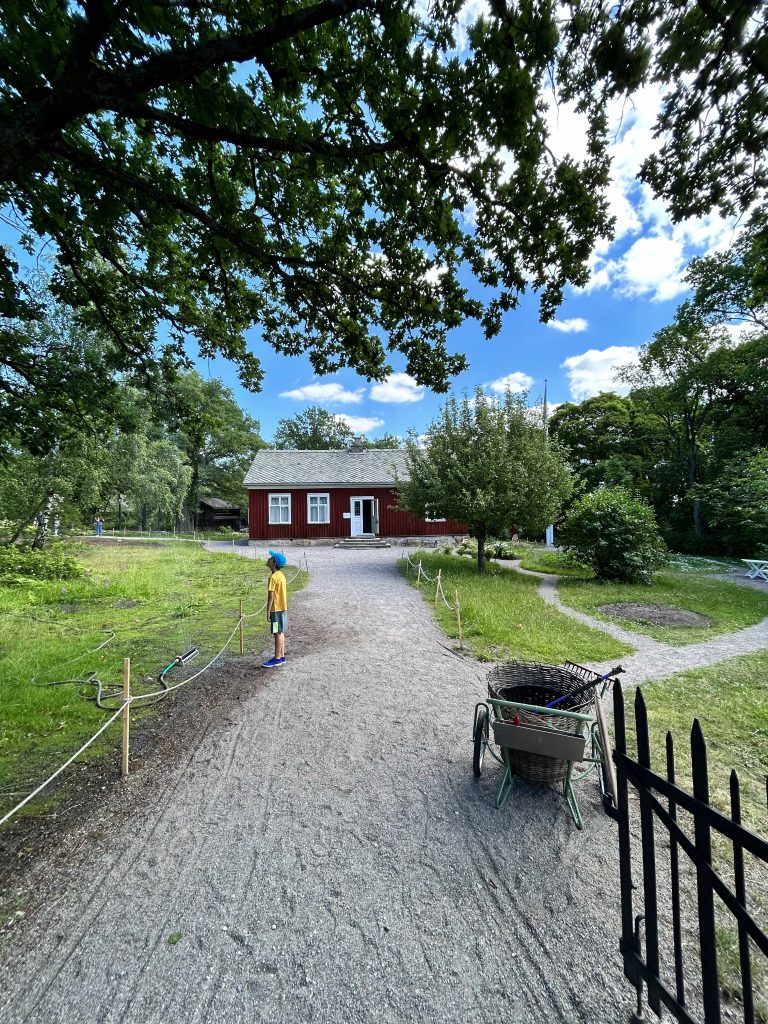
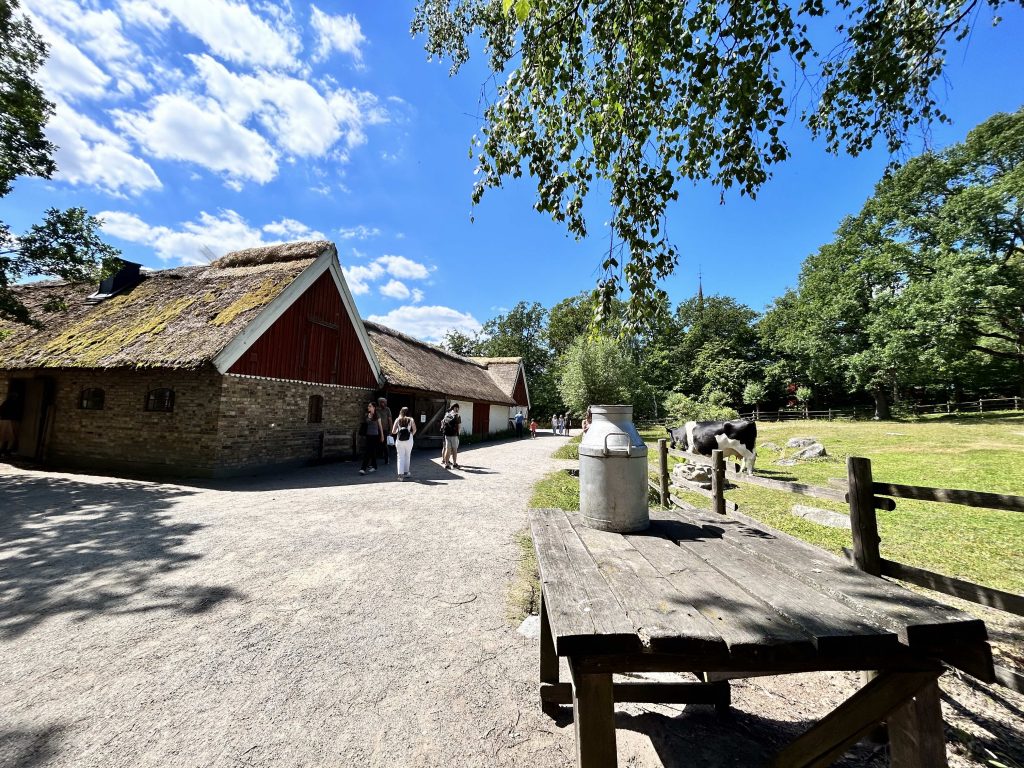
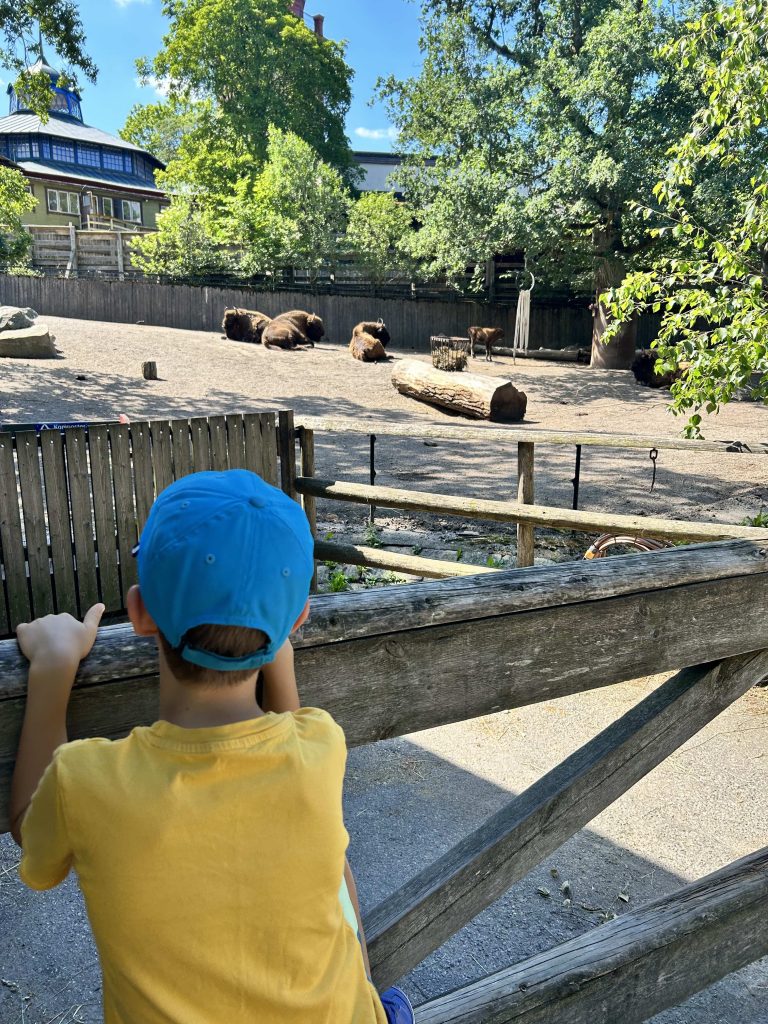
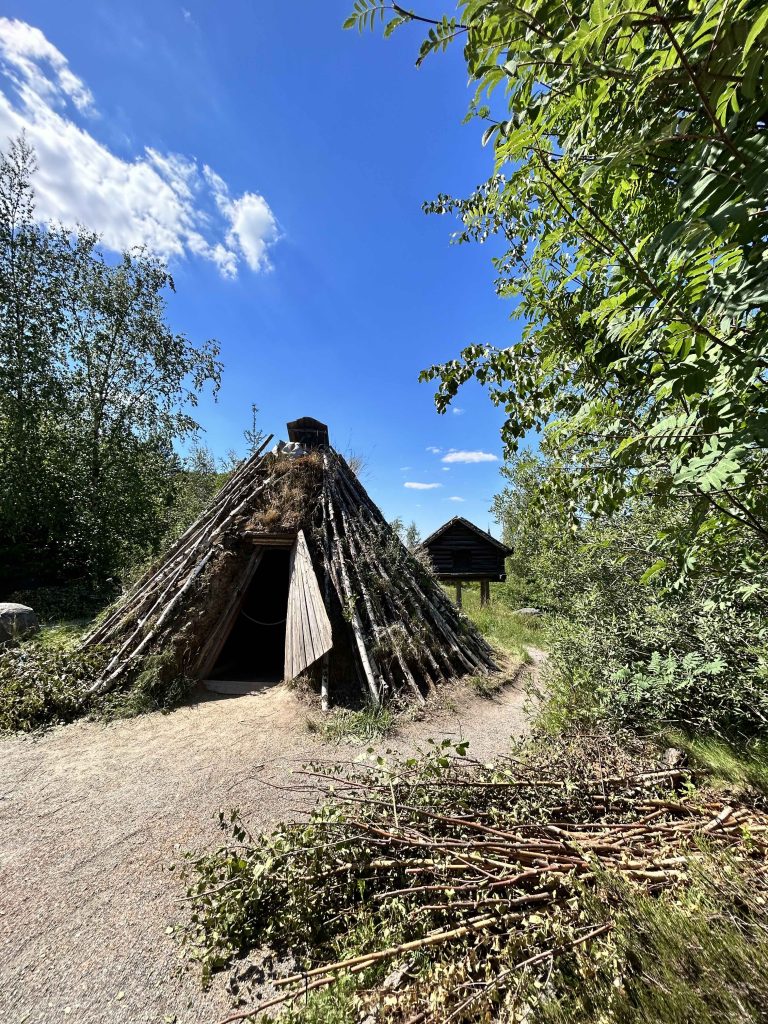
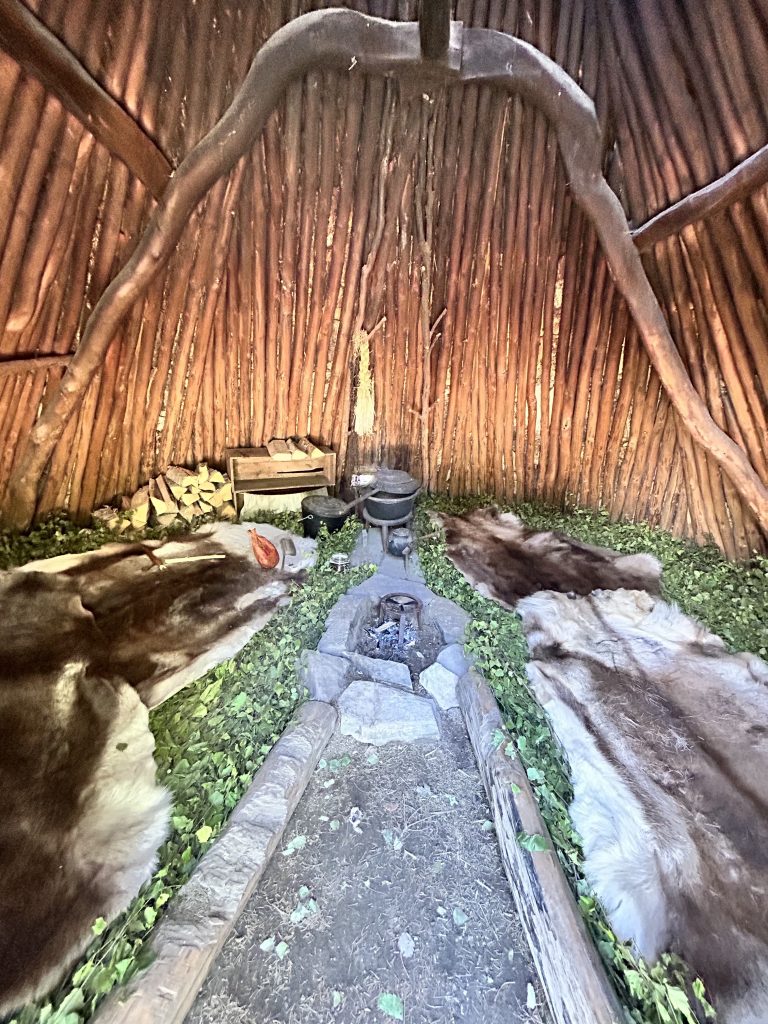
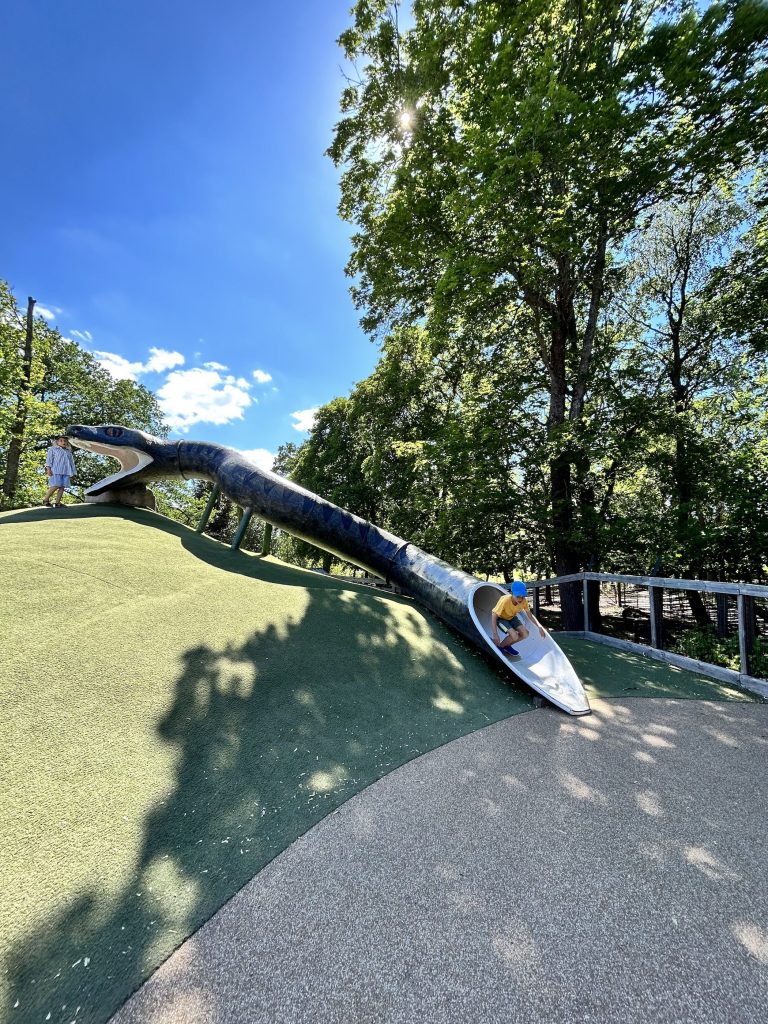
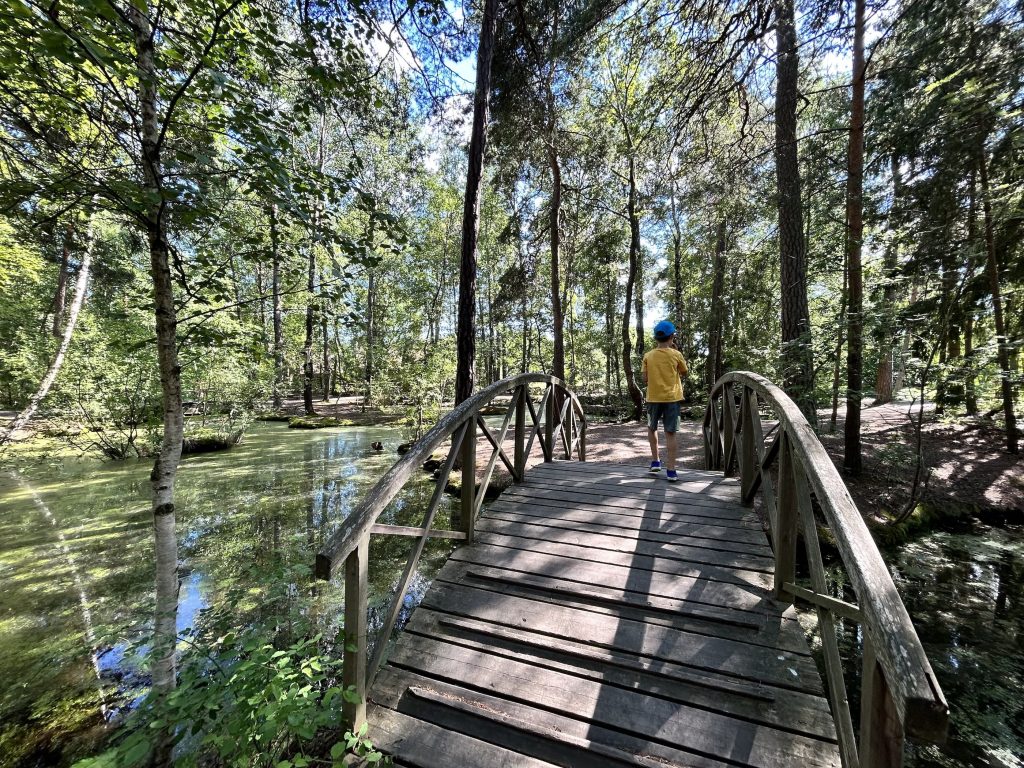
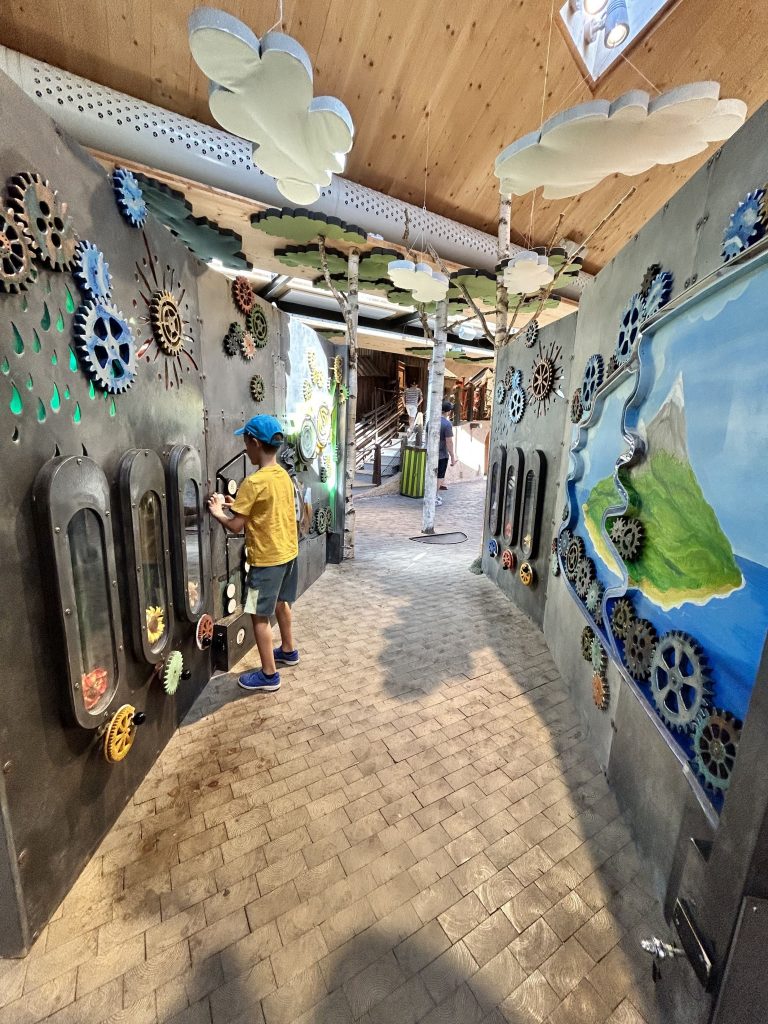
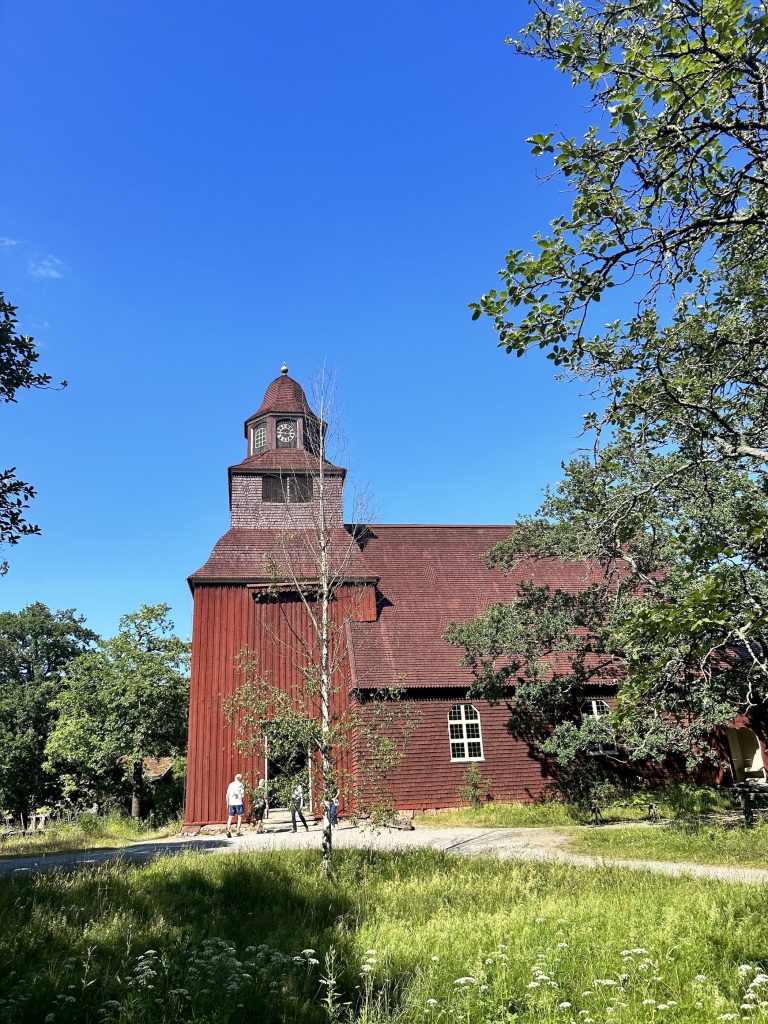
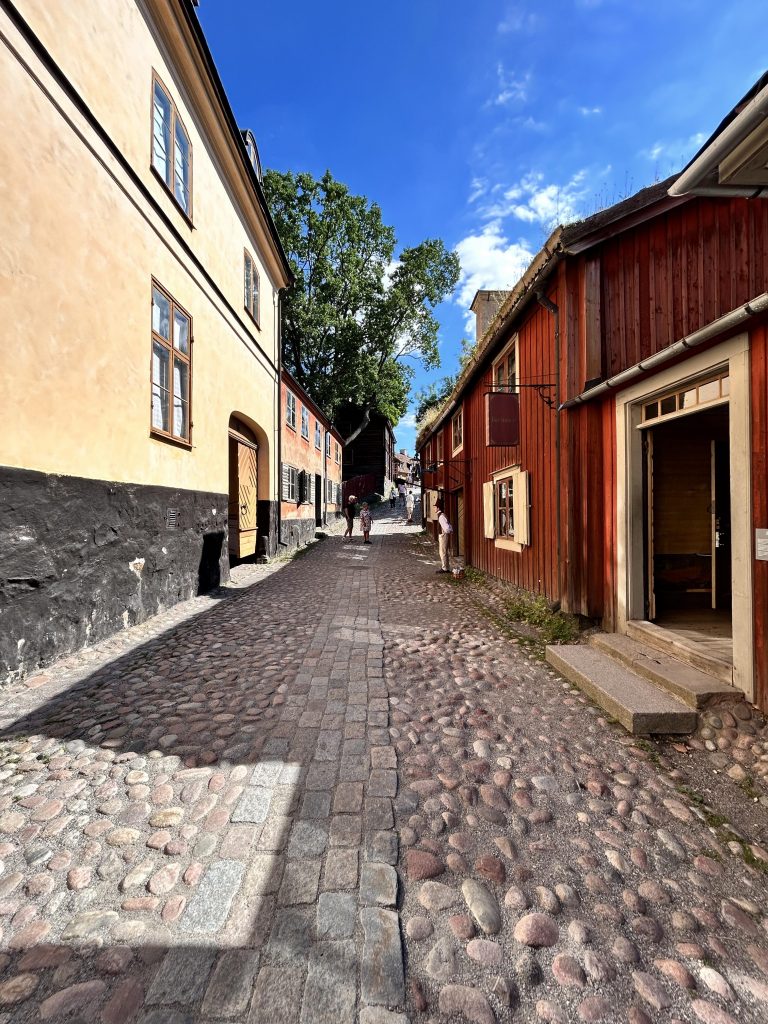
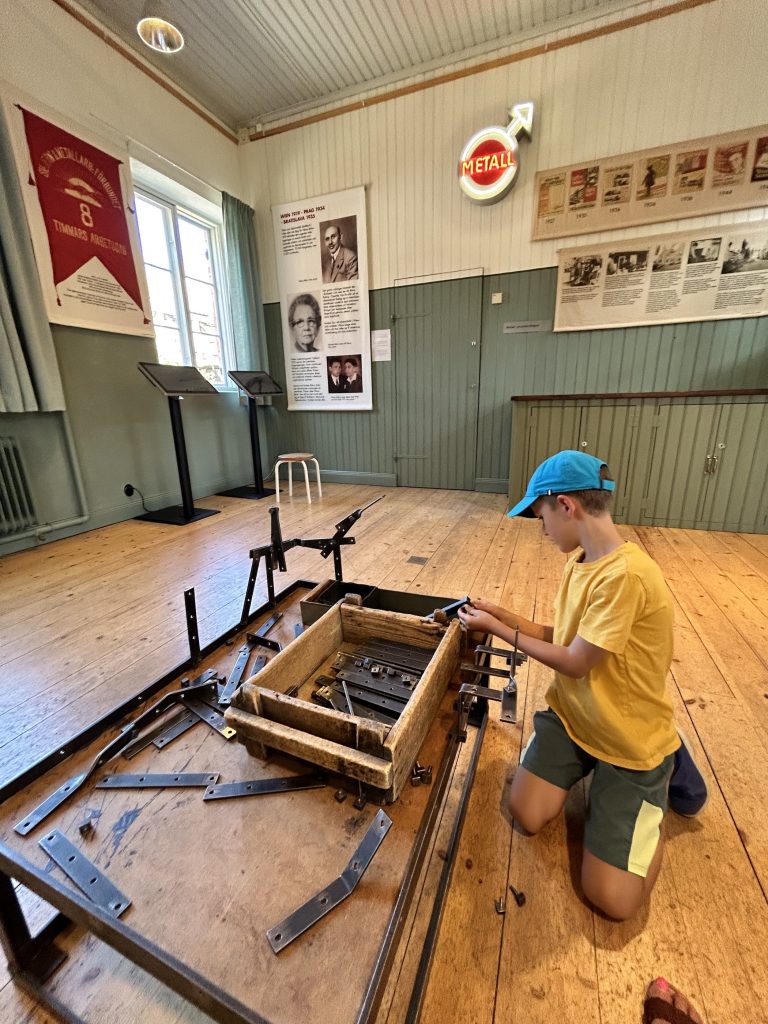
Skansen
Day 5. After three days where we barely had time to visit one museum/day, it was finally time to speed things up with the smaller museums next to Skansen.
Our first stop: Vasa Museum, home to a boat (a huge one, yes! But still a boat!) that sparked so much attention and interest. Truth be told, it was poorly designed, but beautifully designed at the same time . The Vasa museum is the current location of the ship that sank more than 300 years ago on its maiden voyage. Built to seed fear into the hearts of the enemies and out of a king’s desire to rule the Baltic sea, the ship is a sight to behold. The museum uses dark and light in a clever way to enhance the majestic features of the ship. The video shown inside the museum’s theater describes the historical events that lead to the finding and recuperating of the ship. There’s a family trail (ask at the info kiosk on the right after you enter the museum), which was super fun to follow and covered the main things to see and learn regarding why the ship sank, how they tried and failed to bring it back to dock, how its location on the sea floor was forgotten and how it was eventually discovered and restored to be housed in its very own museum. The best view of the boat is from the top floor of the museum. There’s also a small playroom with interactive displays meant for steering, raising the anchor or using wind to propel the boat forward. There’s also a Lego exhibit on the left before exiting the museum, with a play area, as well, which we thankfully did not see. Otherwise, this would have been the fourth museum in Stockholm where we spent an entire day
. Tickets can be bought on site (card only) or online: https://www.vasamuseet.se/. Kids younger than 18 years old are admitted free.
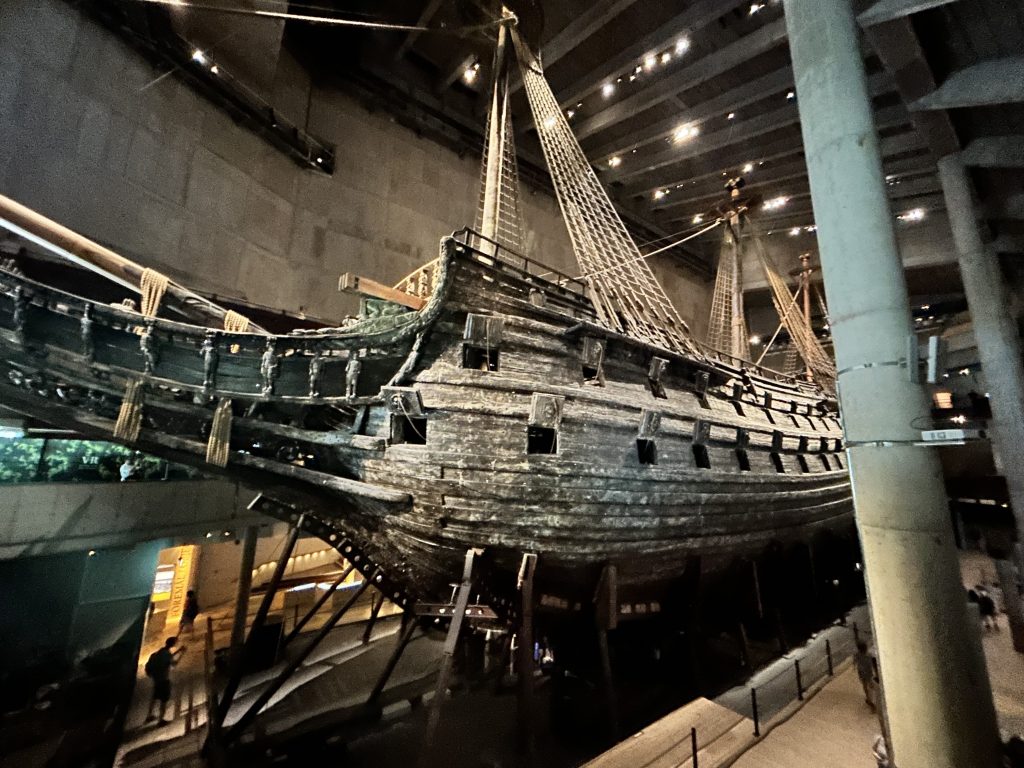

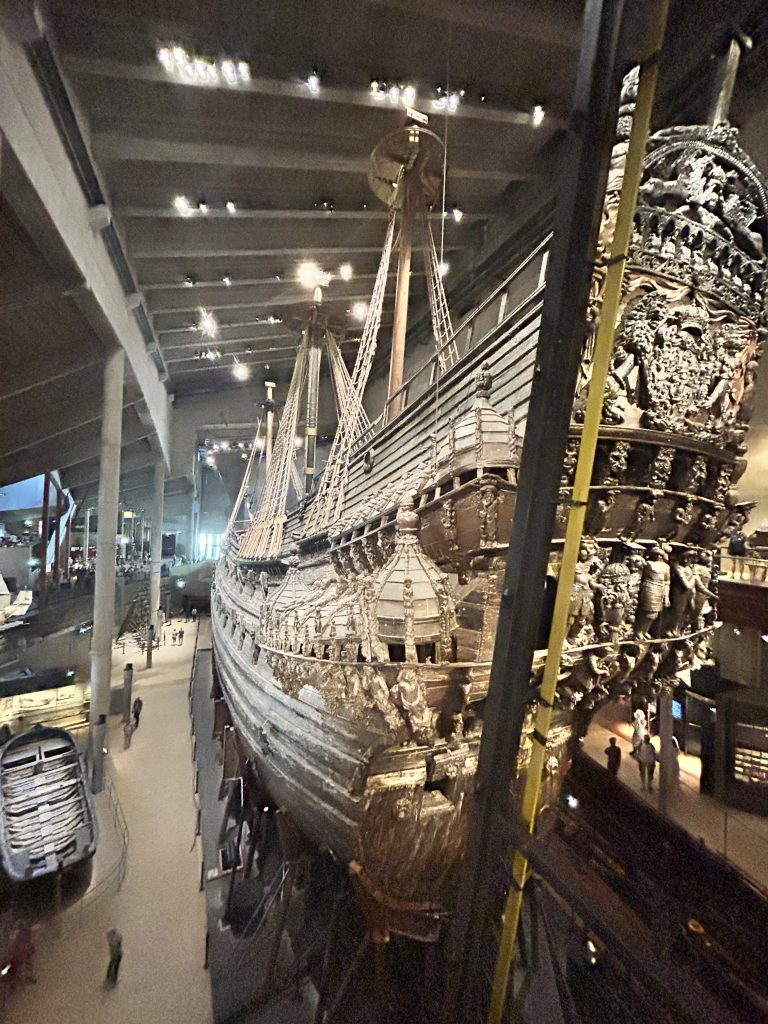
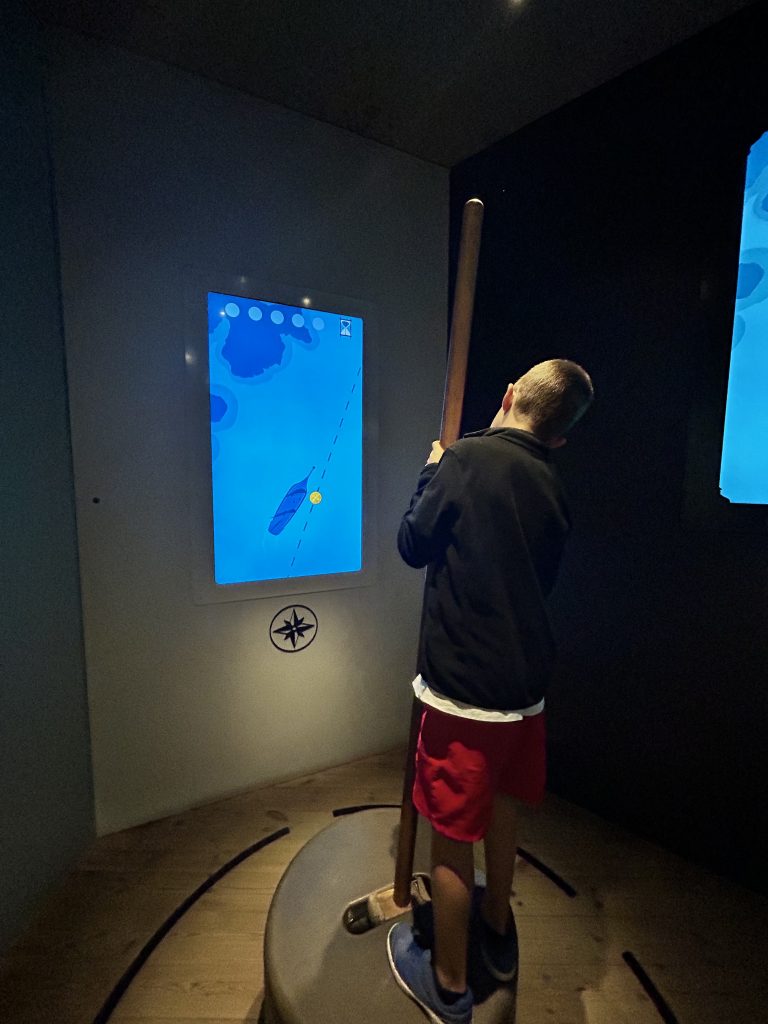
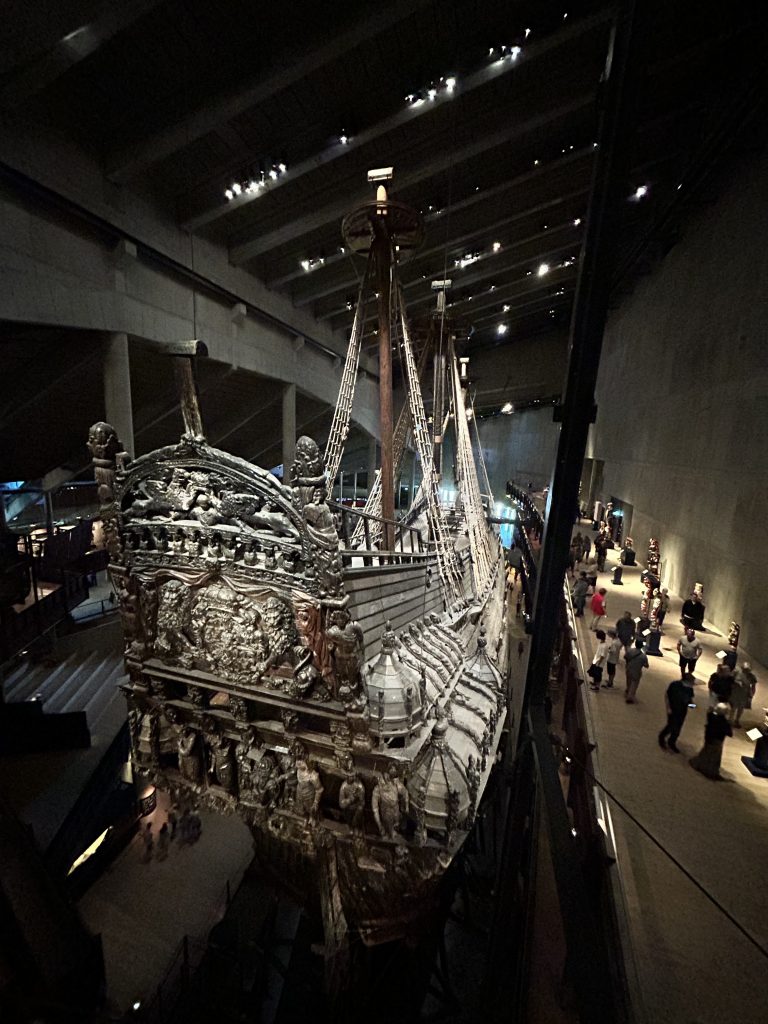
To get here we took tram line 7 from T-Centralen to Nordiska museet/Vasamuseet station and then we walked for 5 minutes to reach the museum entrance. It can be very crowded. We visited during the weekday and it was still packed with people. Best to book ahead to avoid queing for tickets. Luckily, we only had to wait for about 5 minutes to get our tickets as we arrived early in the morning.
From the Vasa museum, the literature/children museum Junibacken is a stone throw away. The museum is definitely a must for the Pippi Longstocking fans, with a theater, a train and a playhouse. Eric refused to go…so we ended up visiting another museum that proudly stood at the top of my list of Stockholm attractions: the ABBA museum, a place for memorabilia and fun facts about the band, with a silent disco, karaoke booths, mixing stations and interactive quizes. While it may not be for everyone, the ABBA museum is a mecca for ABBA fans. We bought our tickets at the entrance, but also possible to buy them online here: https://abbathemuseum.com/en/.
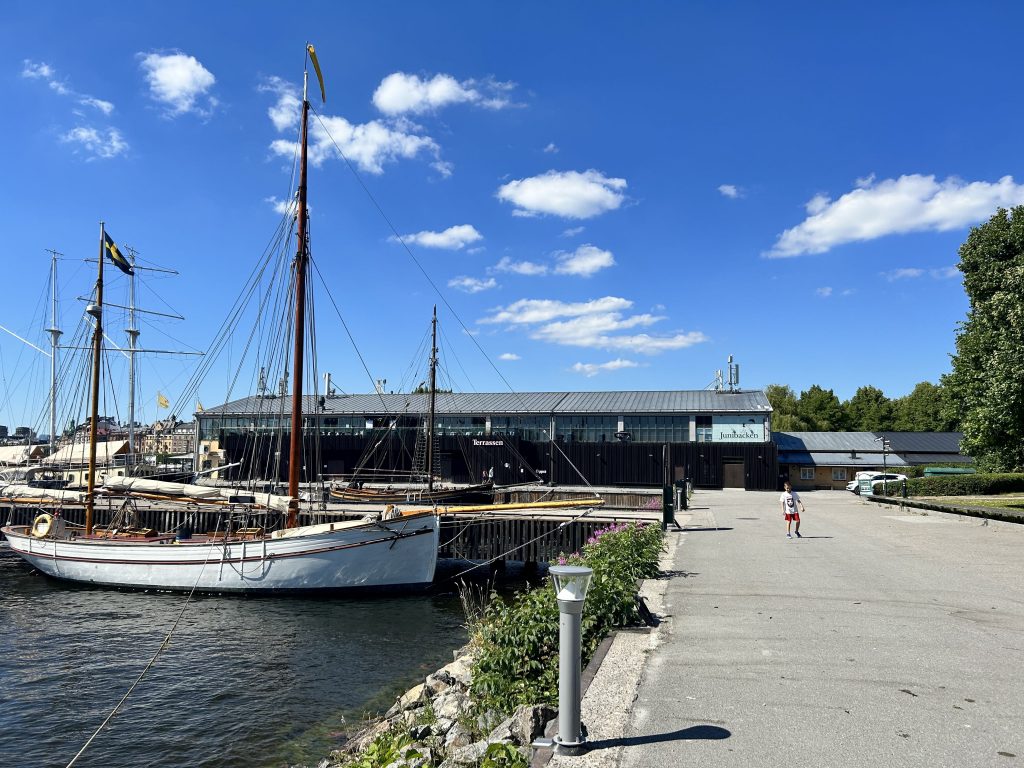
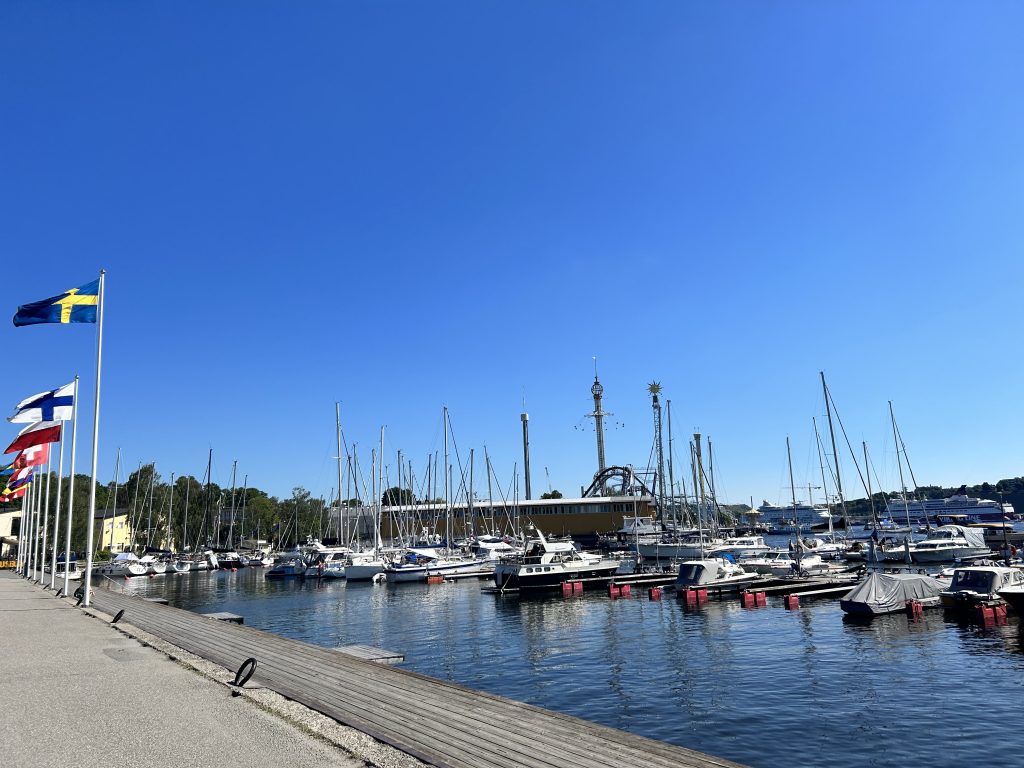
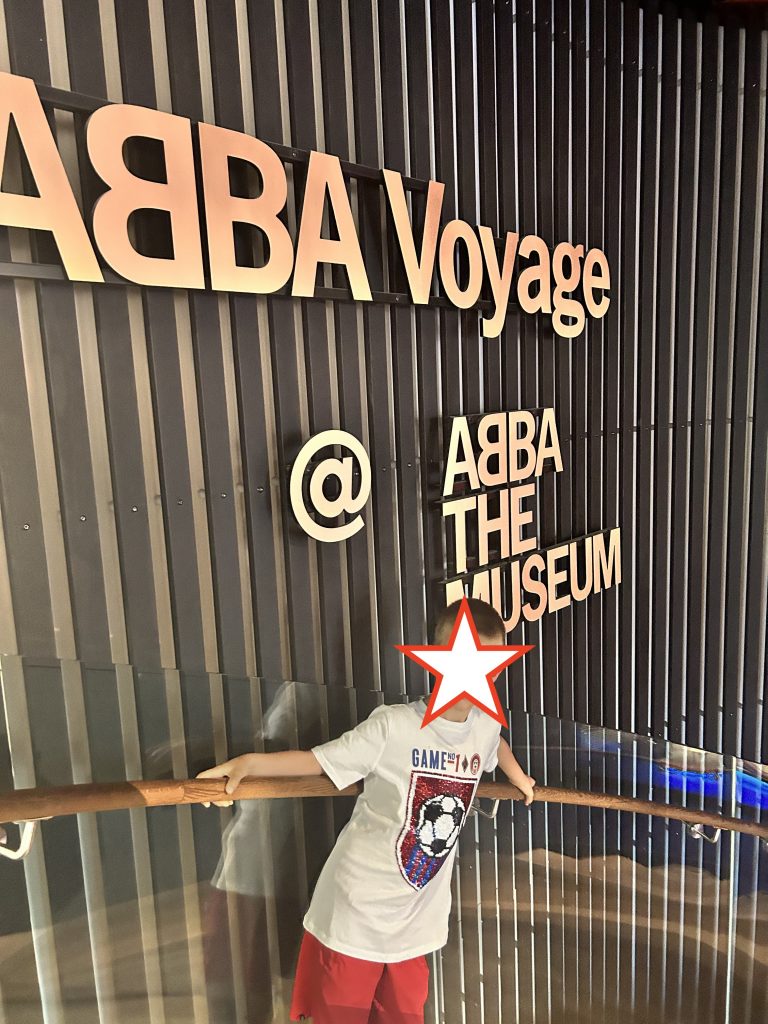

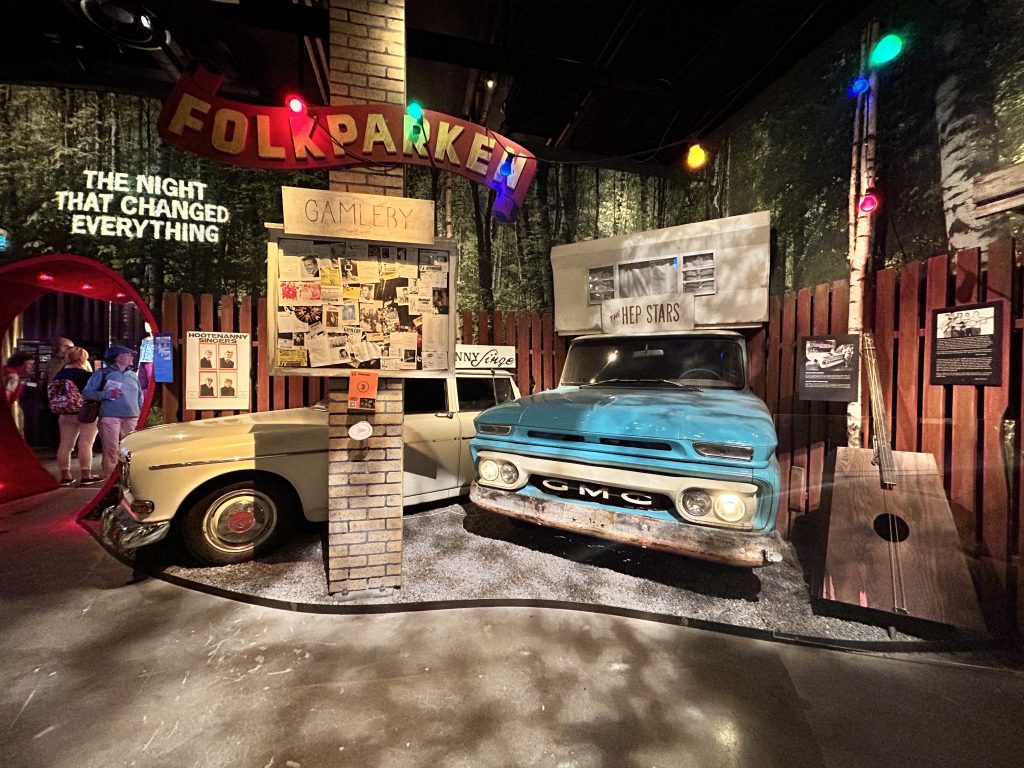

Other nice museums located nearby are: the Vikying museum (we’ve done this before in Denmark), the Nordiska museet, Spirits museum, Museum of Wrecks or the Maritime museum.
To get back to the city center, we took the ferry from the Allmänna gränd station, located between ABBA museum and the Grond Lund amusement park. The ferry ride from Allmänna gränd to Slussen takes about 10 minutes. While on the ferry, we marveled at the daredevils going on the adrenaline rides in Grona Lund. The next stop was close to Kastellet and Toy Museum, on a small green island, before reaching Slussen on Gamla Stan. The ferryboats are a great way to visit the Stockholm archipelago, especially ferryboat Line 83 departing from Stromkajen in Stockholm and going all the way out to the charming town of Vaxholm (for a roughly 1h boat trip).
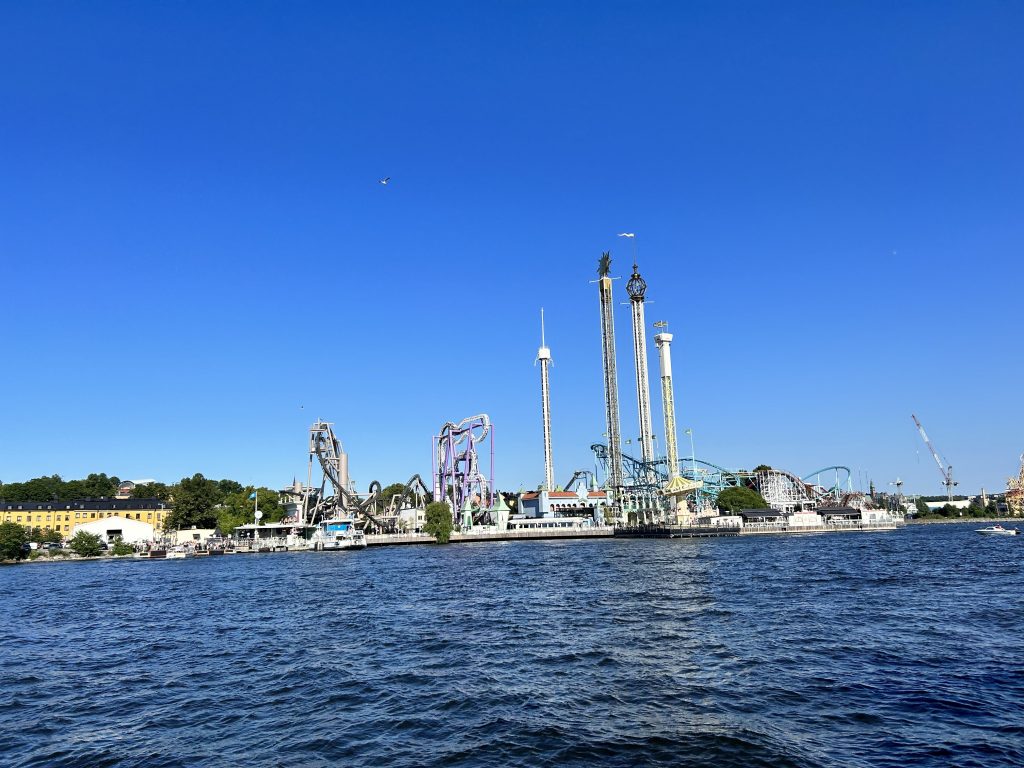
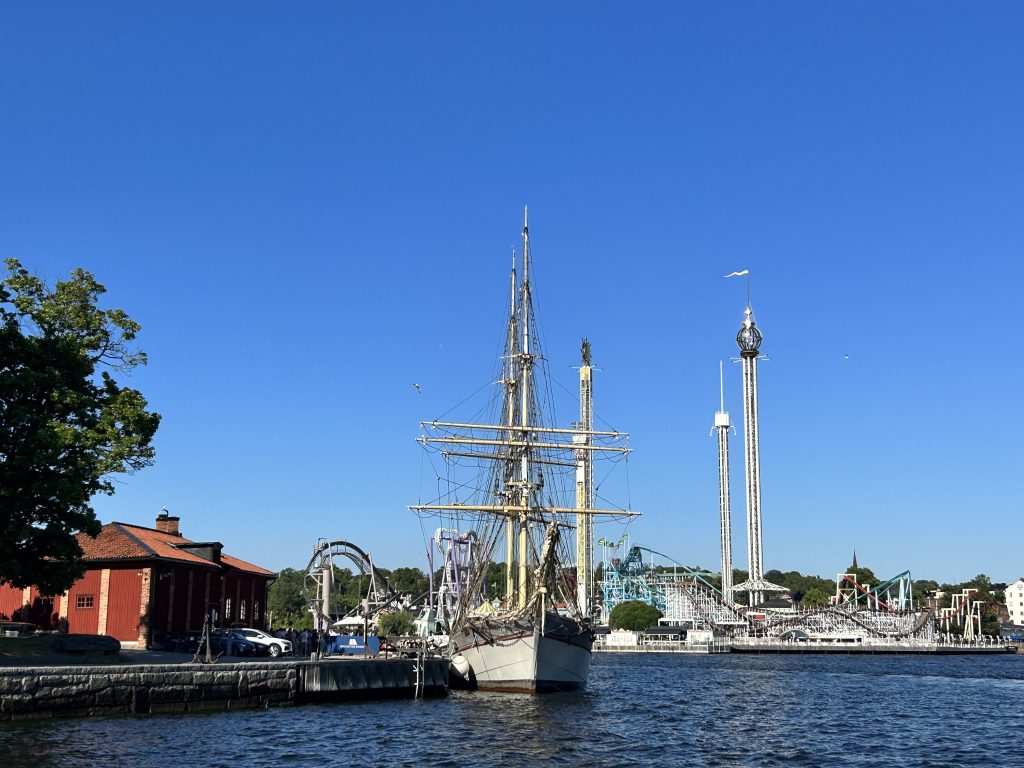
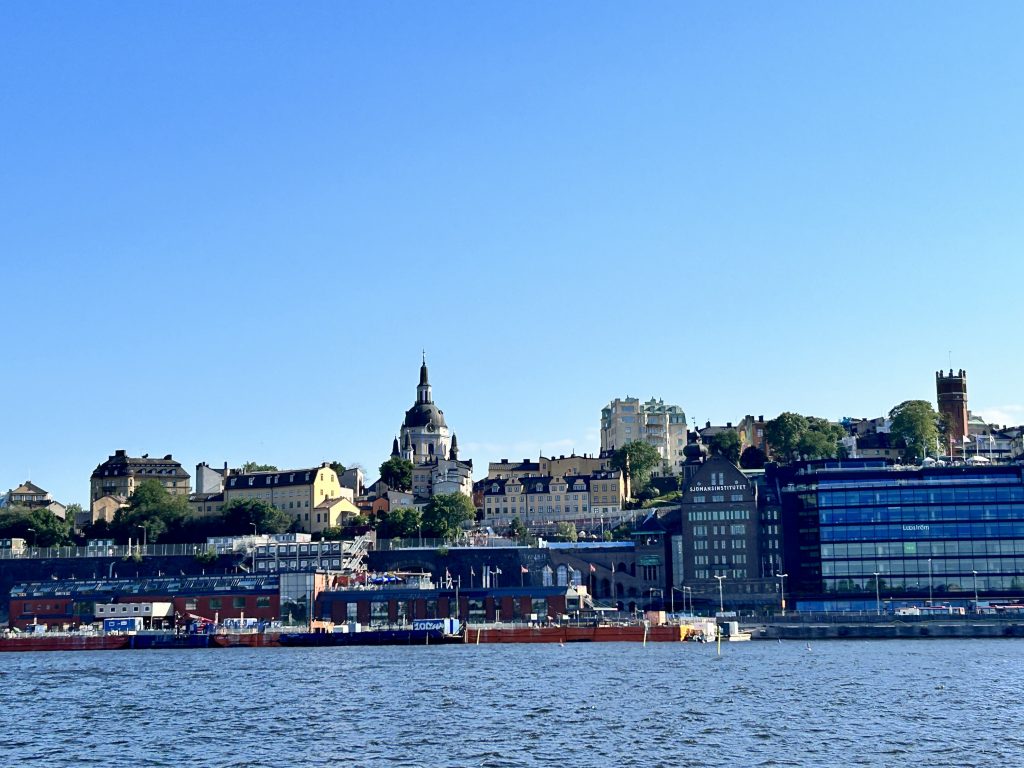
From Slussen we walked towards the Polkagris store (find it here: https://maps.app.goo.gl/RnuymVxS2jzQKhBx7). Polkagris is the famous Swedish stick candy. Originally white and red in a peppermint flavour, it is now manufactured in all sizes, shapes and flavours. The shop in Gamla Stan sells the traditional candy and all sorts of varieties. While there, we got to sample freshly made candy and actually saw the entire manufacturing process. Fun fact. There’s an annual polkagris competition held in Gränna, Sweden. It’s actually a world championship. The longest stick candy ever made measured 287.7 metres and the heaviest was 2,158.7 kilograms . Sweden is also famous for Lakrits, a black coloured candy obtained with the extract of the roots of the liquorice plant Glycyrrhiza glabra. You can even buy lakrits flavoured ice cream in Gamla Stan. Sample it before buying to avoid any regrets.
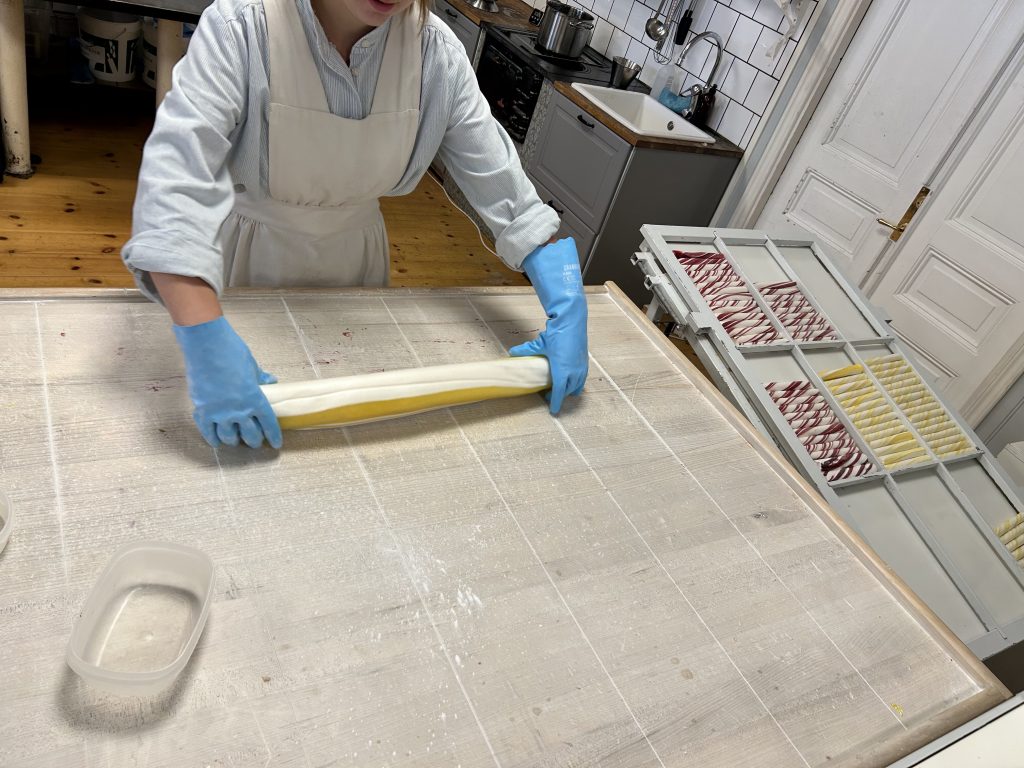
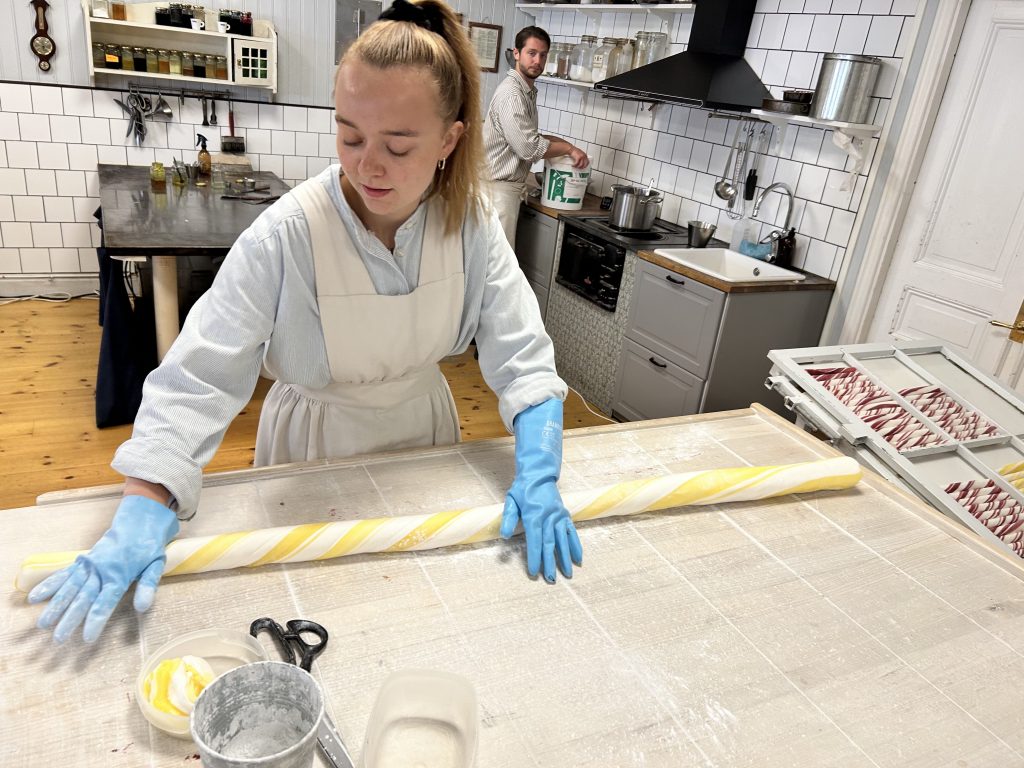

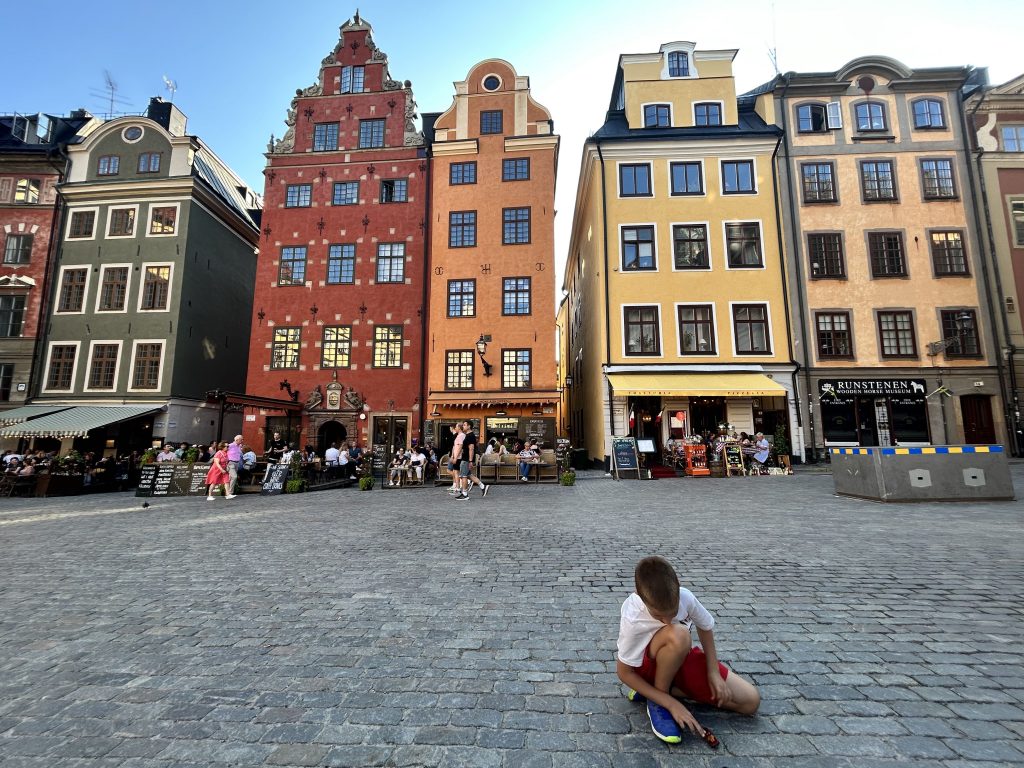
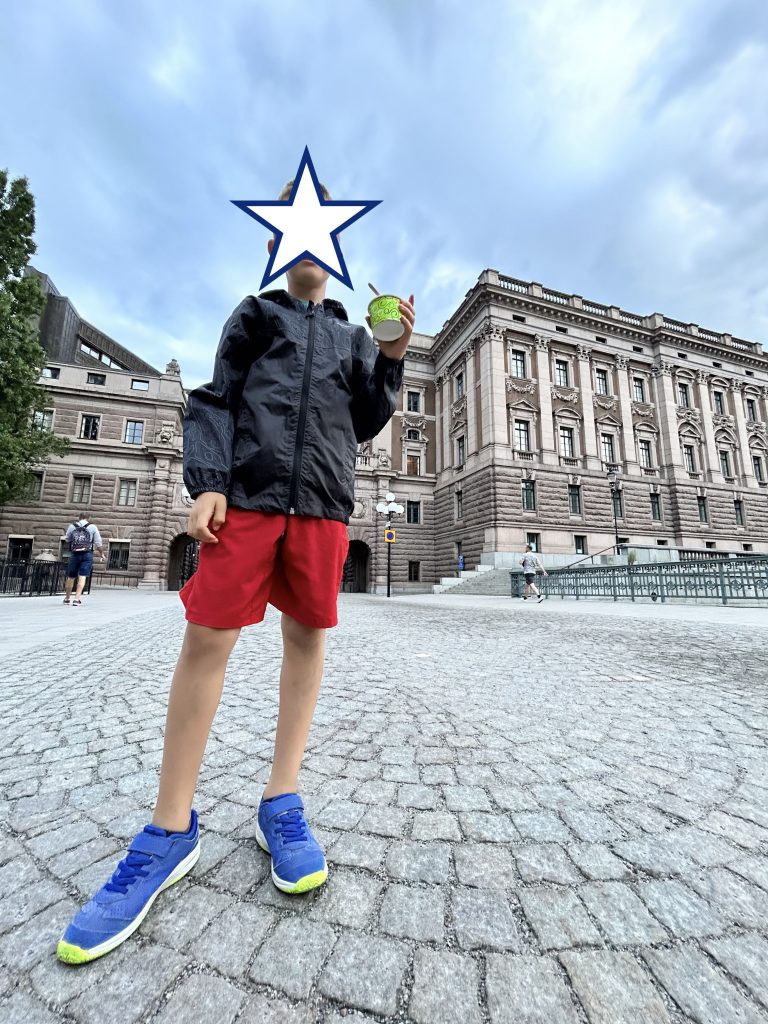
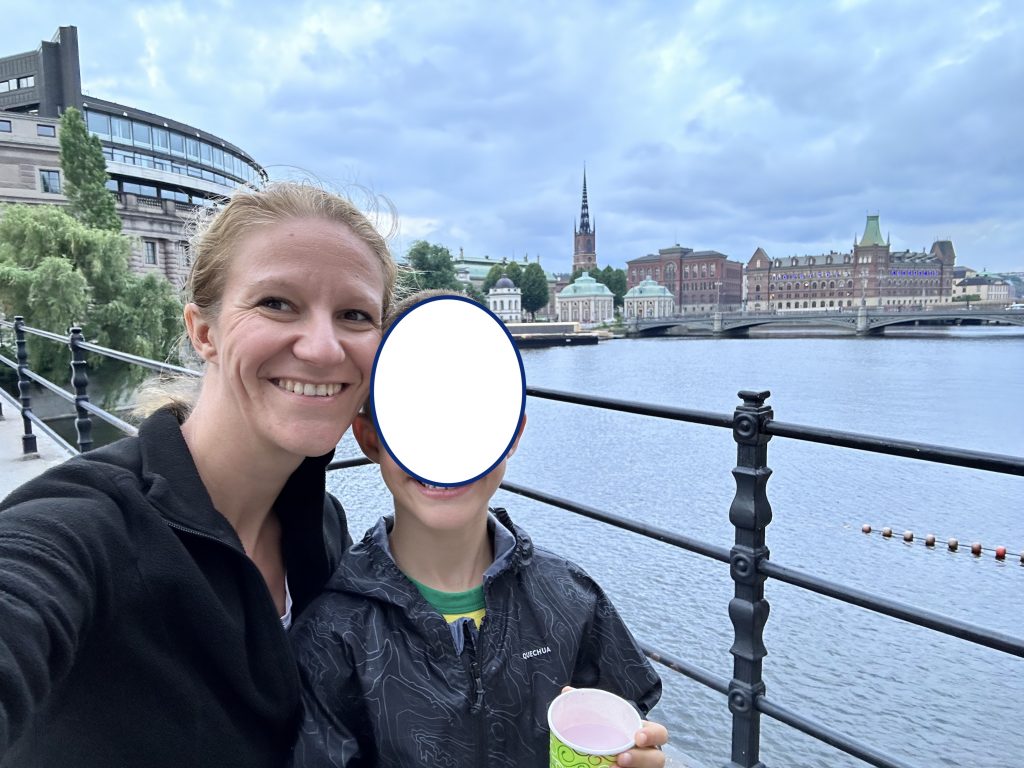
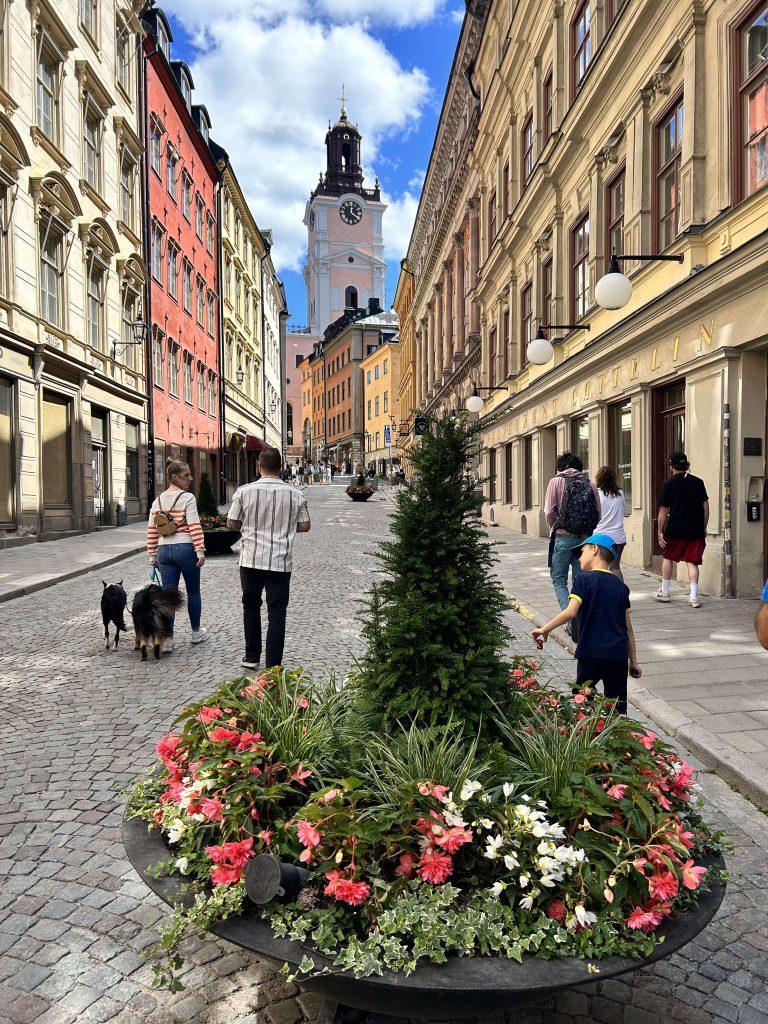
Day 6: Today we started with a ride on the metro to see the beautiful modern art of its stations. Since we travelled quite a lot to T-centralen, we’ve seen that one already. We also walked and admired the Stadion, Tekniska Högskolan and Universitet stations on line 14 when we visited the Natural History Museum. We also saw Kungsträdgården Station when we visited Skansen.
So today we boarded metro blue line 11 all the way to Akalla station. Unfortunately, the yellow colour of the tunnel were not that bright as we expected from online photos so perhaps is not really worth the trip. But, line 11 is indeed worth it for Solna Central station, a bright highly instagrammable red and green station. If you have time to see only one station, choose this one. From here we took line 11 back to Radhuset (City Hall) station, also worthwhile if you plan to see the City Hall with its tall tower. The view from the lawn immediately behind the city hall is also lovely, especially on a sunny summer day. So we just sat down and watched the Gamla Stan skyline and the kayaks.

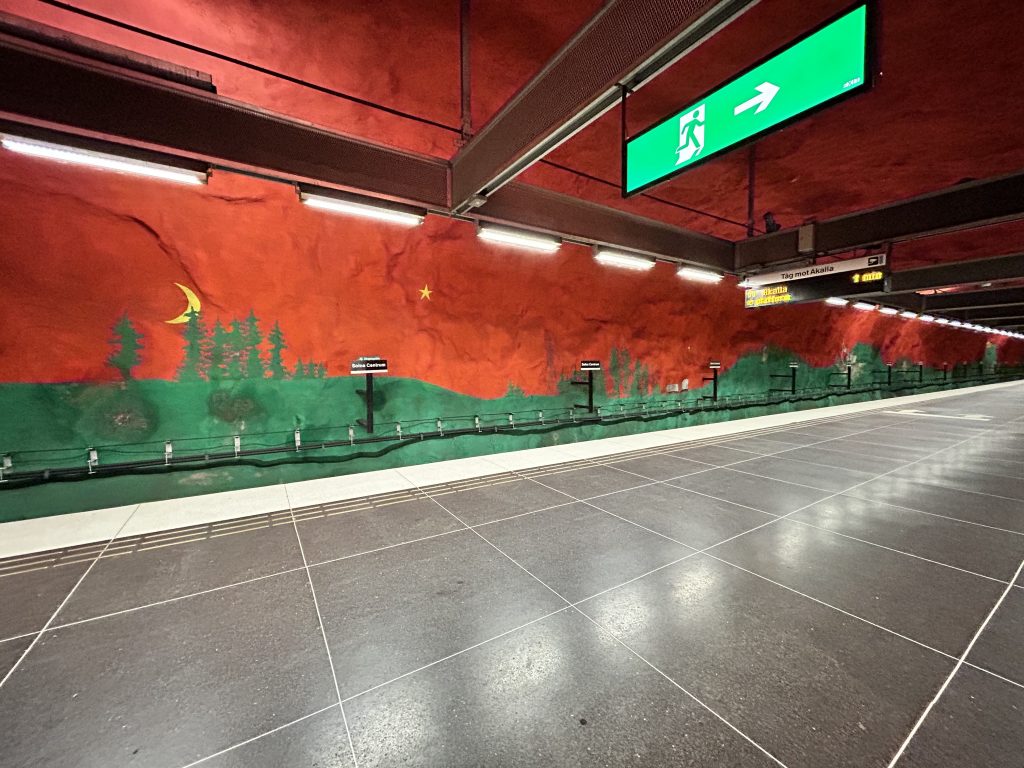
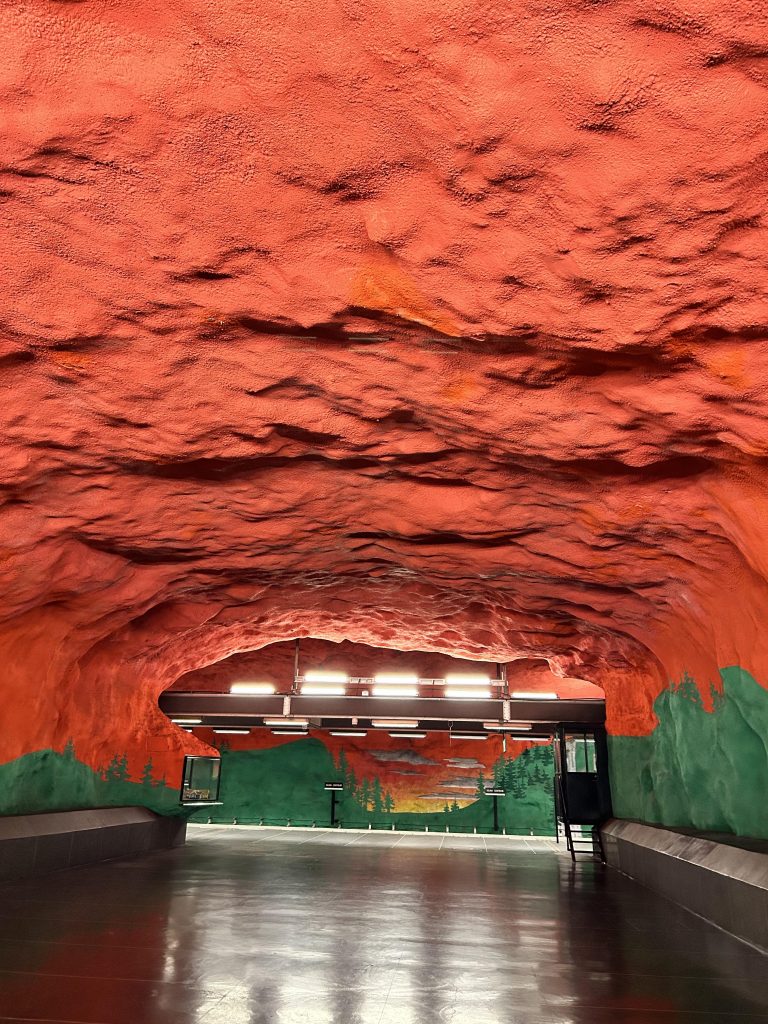

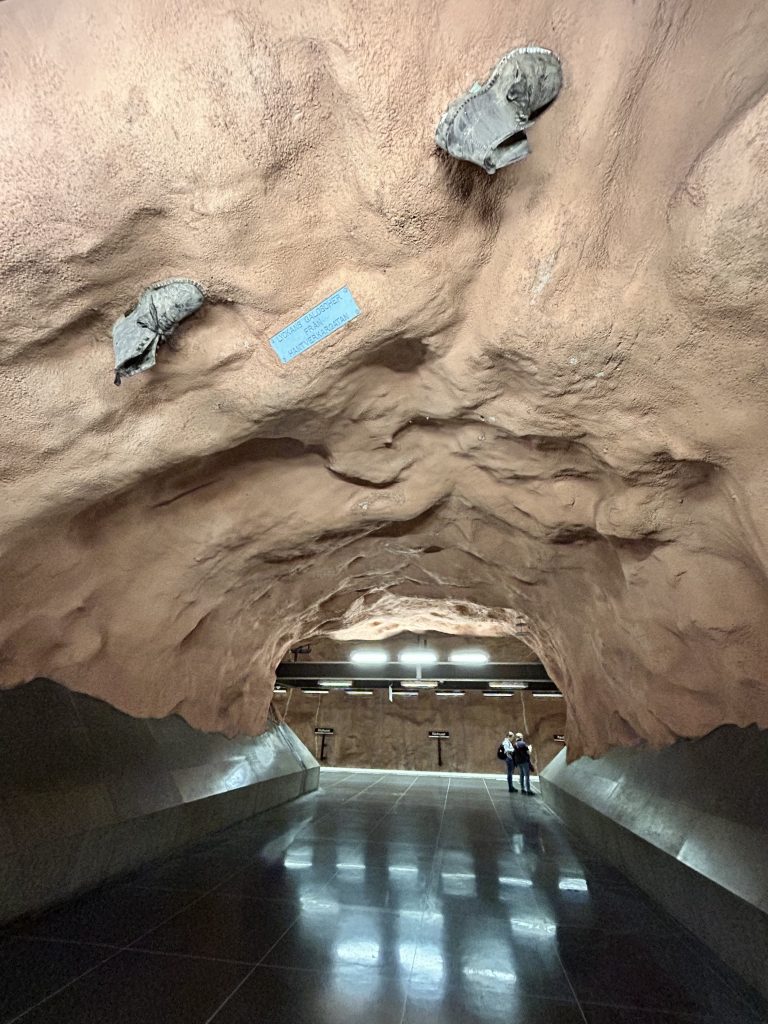
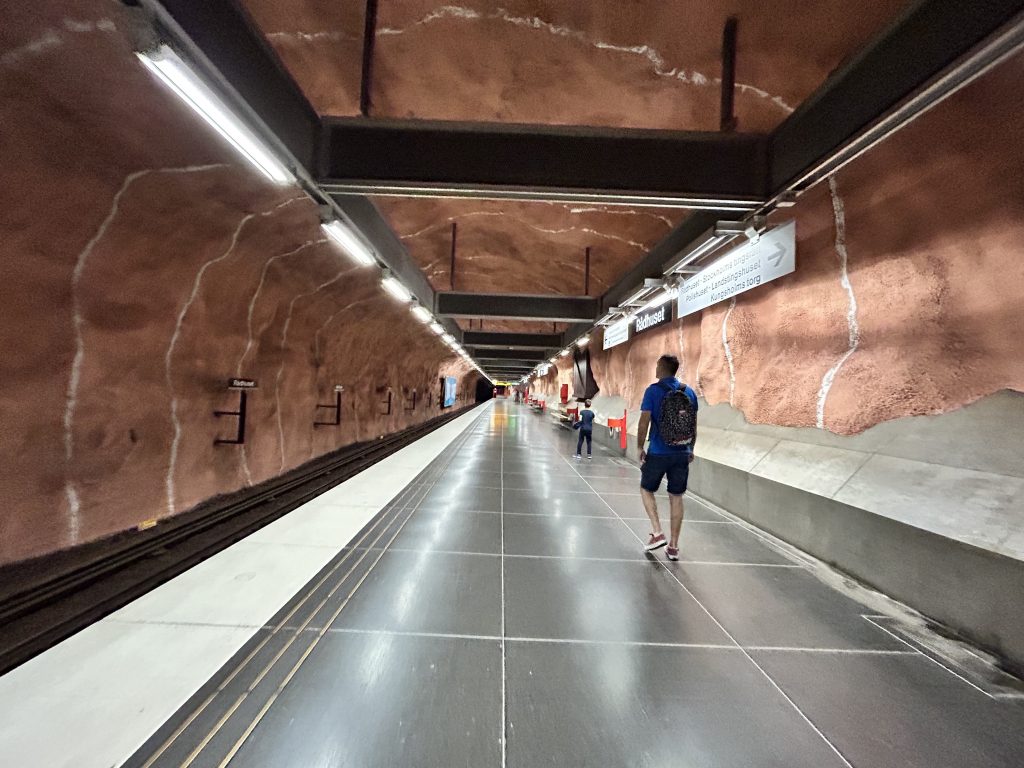

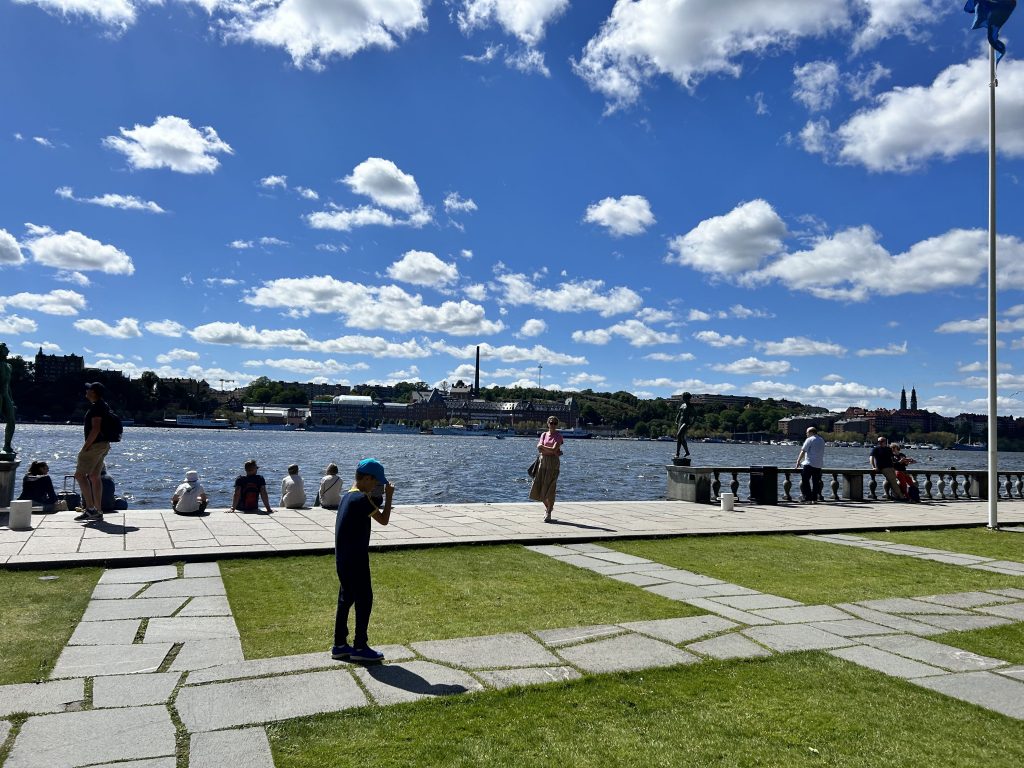
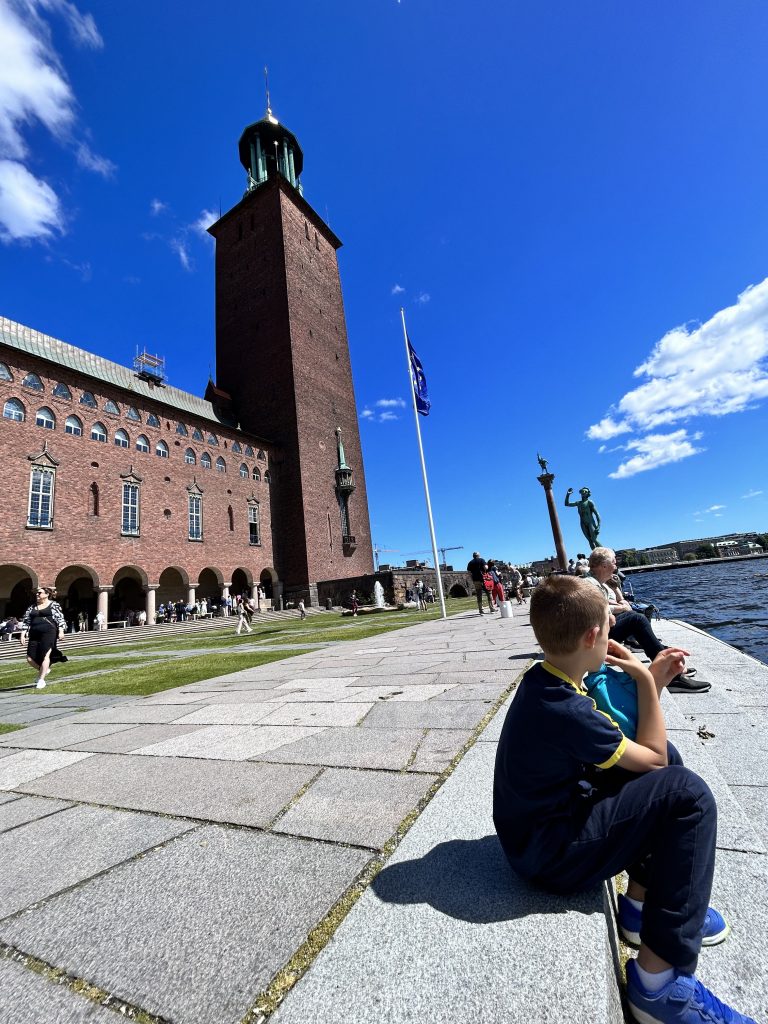
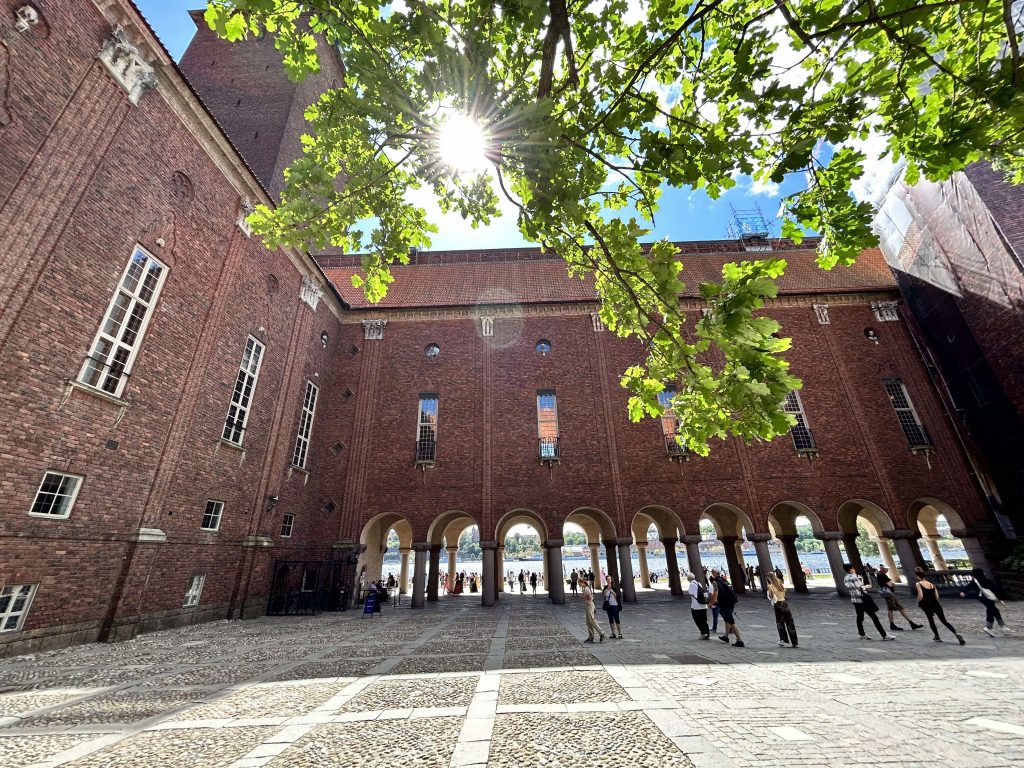
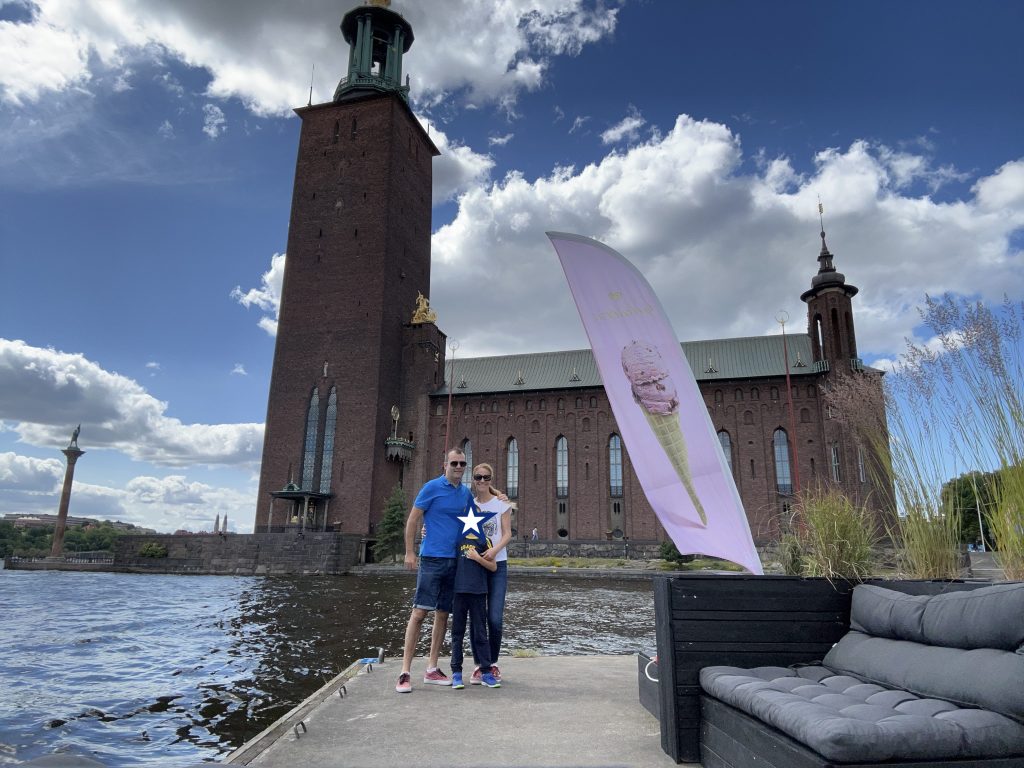
For the afternoon, we booked a lunch cruise to the UNESCO World Heritage Site of Drottingholm Palace. We chose a return trip that included also lunch on the boat to the Palace and booked our tickets the day before on this website: https://www.stromma.com/en-se/stockholm/excursions/day-trips/drottningholm-palace/. When booking, we chose the main course (4 dishes available). Deserts and drinks are extra. The salmon was ok, nothing too fancy and rather cold. The meatballs were delicious. We laso had to book our return trip. The cruise departs from Klara Mälarstrand, which was conveniently located near the City Hall. While we waited for the cruise we had some drinks on a floating dock that overlooked the big tower of the City Hall. The boat ride to the palace takes about 1h. Entry to the palace is not included in the lunch cruise, but since it was a beautiful sunny day, we actually decided to spend the time on the island walking in the beautiful parks surrounding the palace.

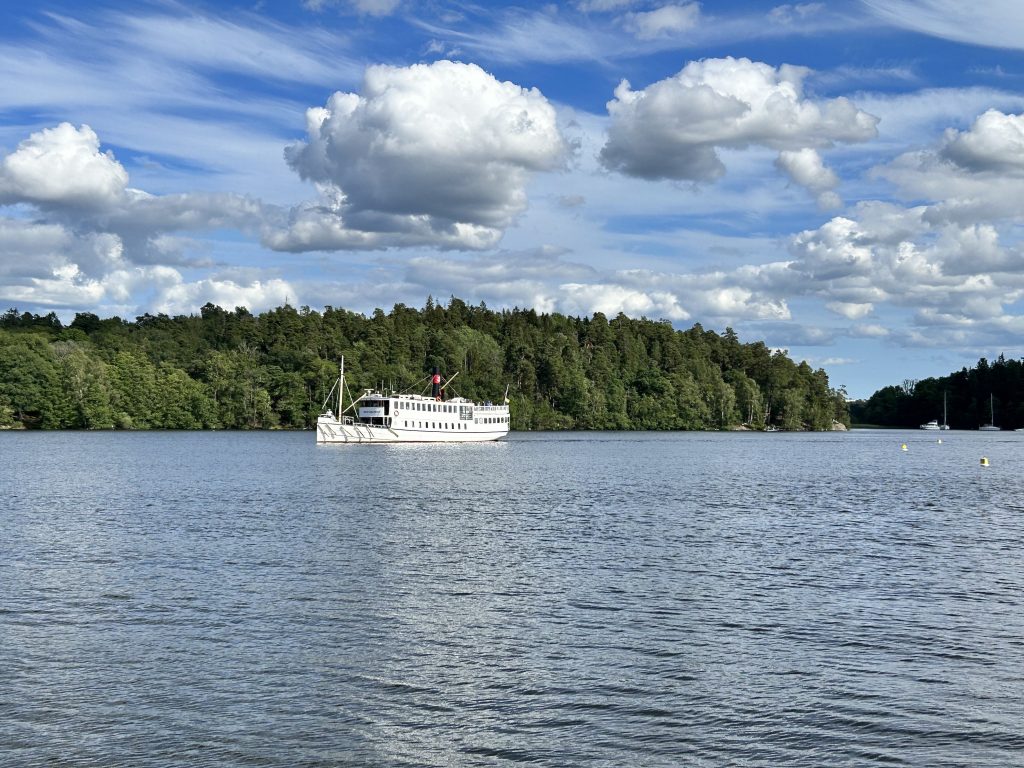
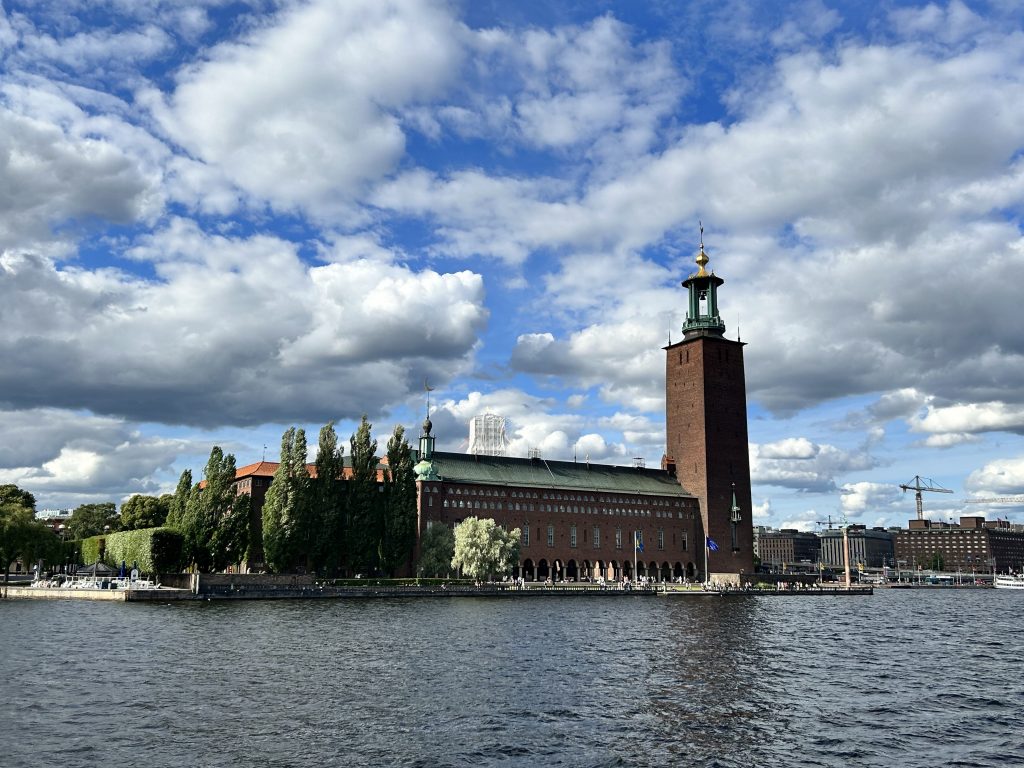
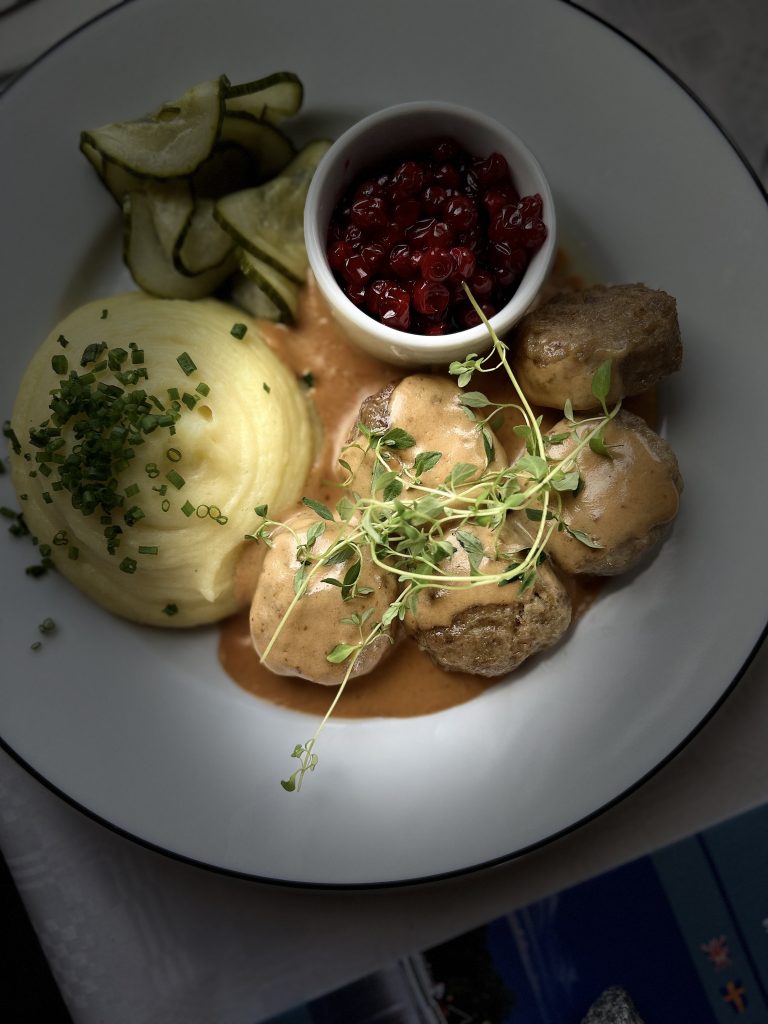
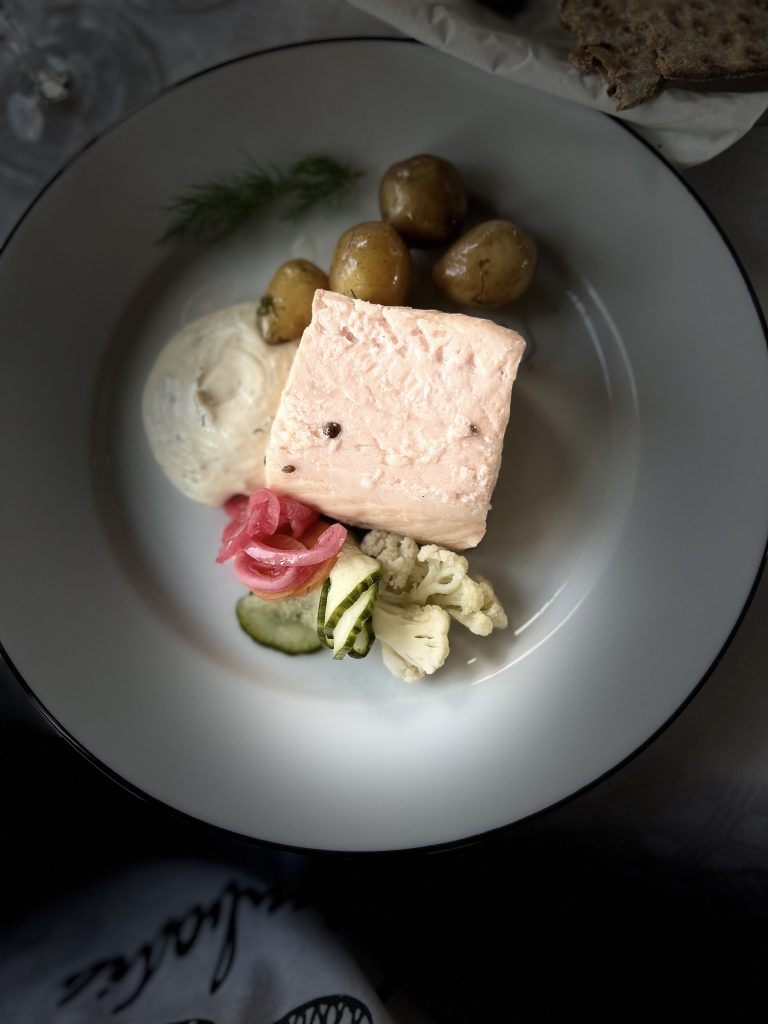
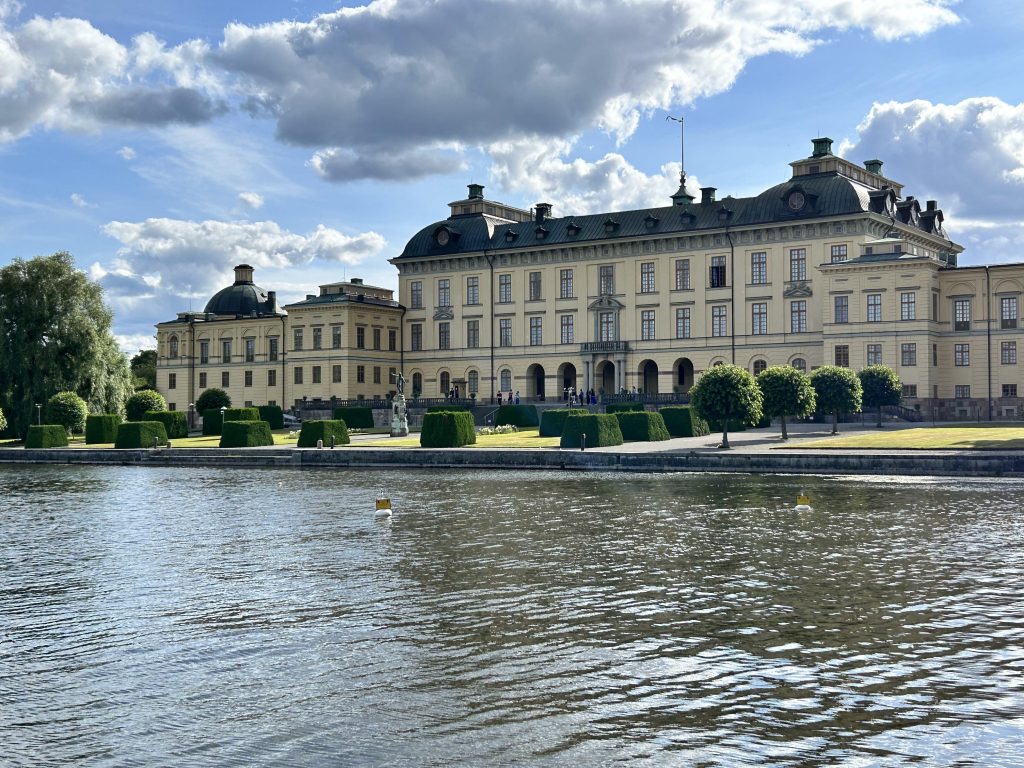
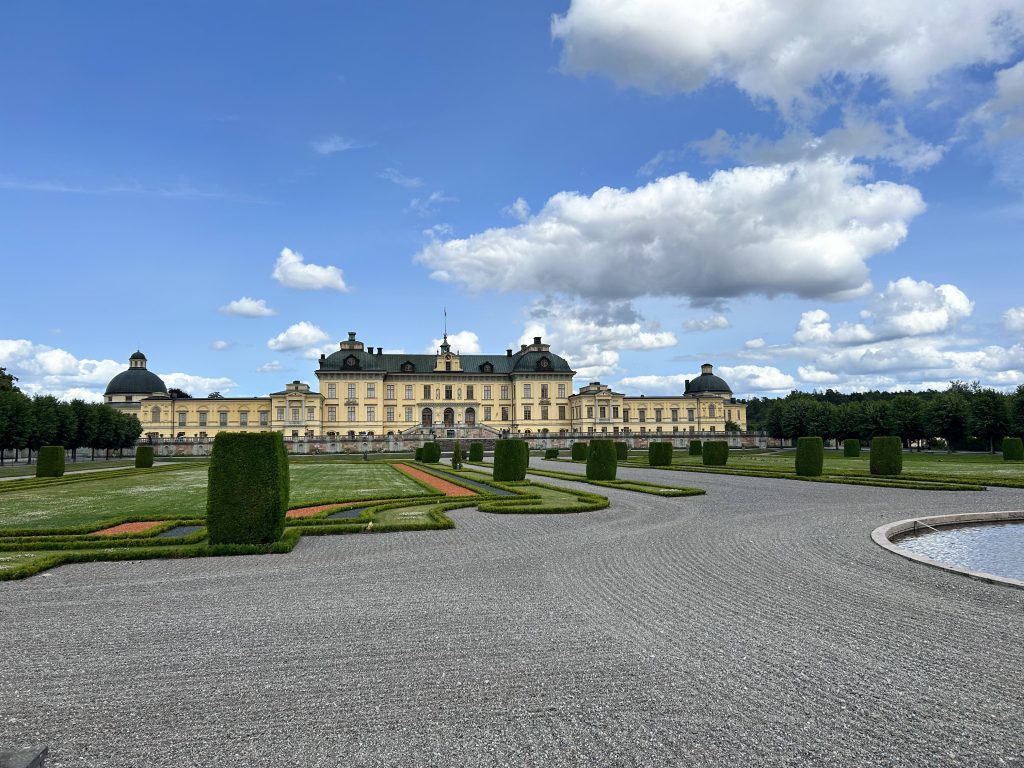
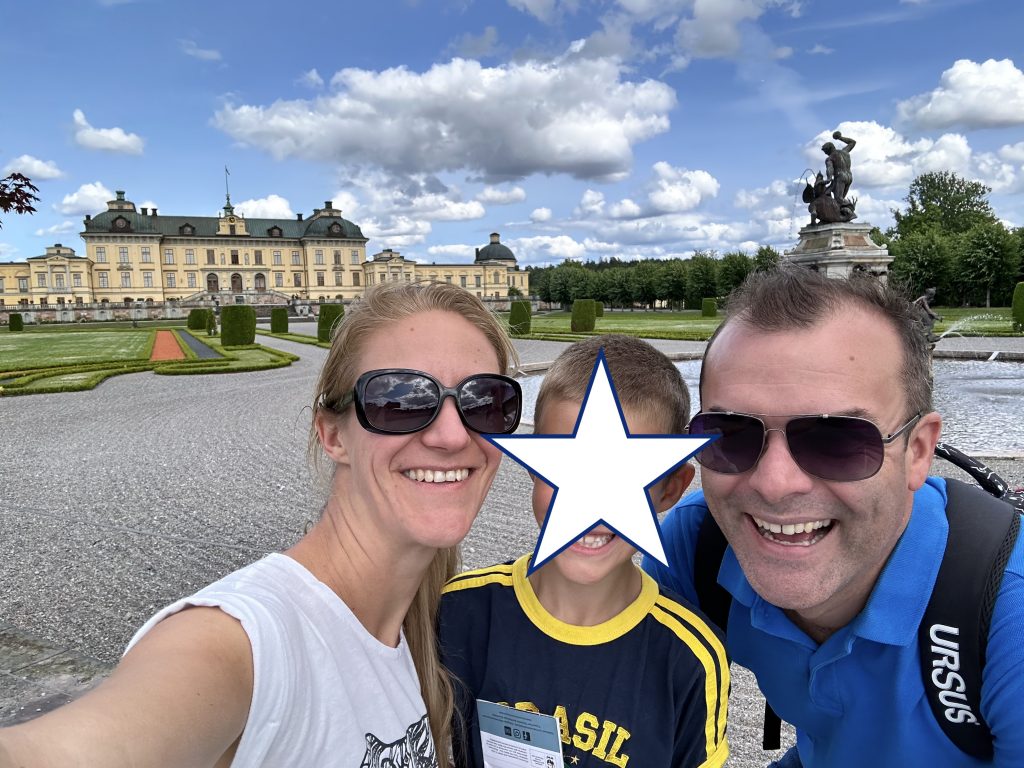
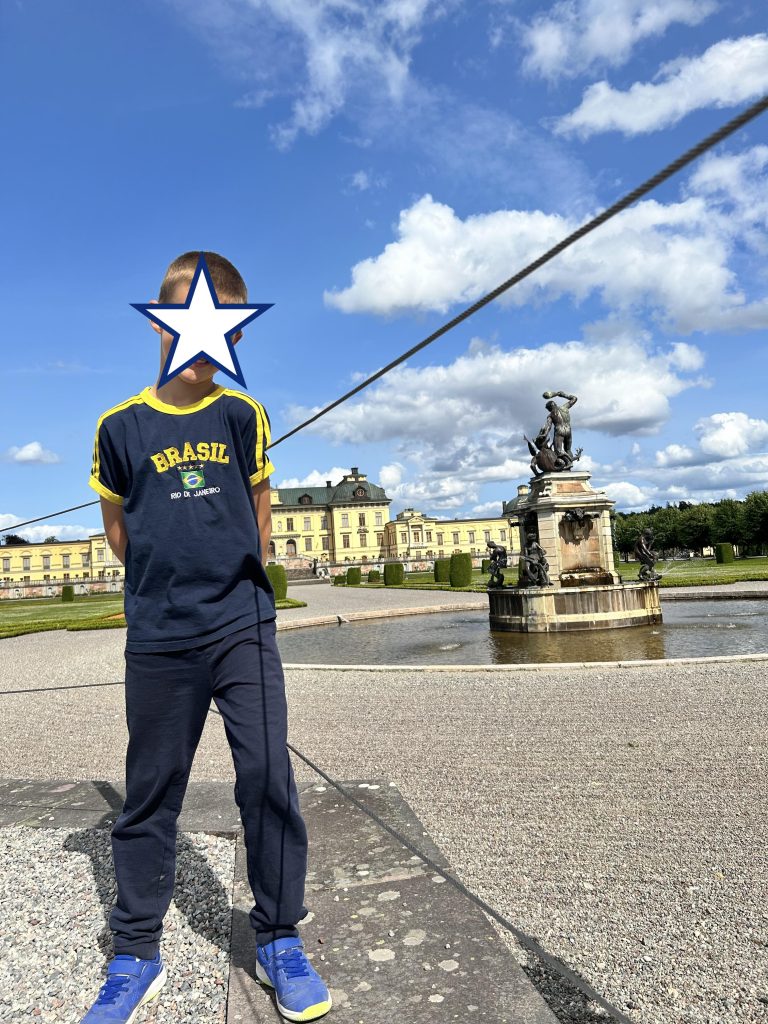
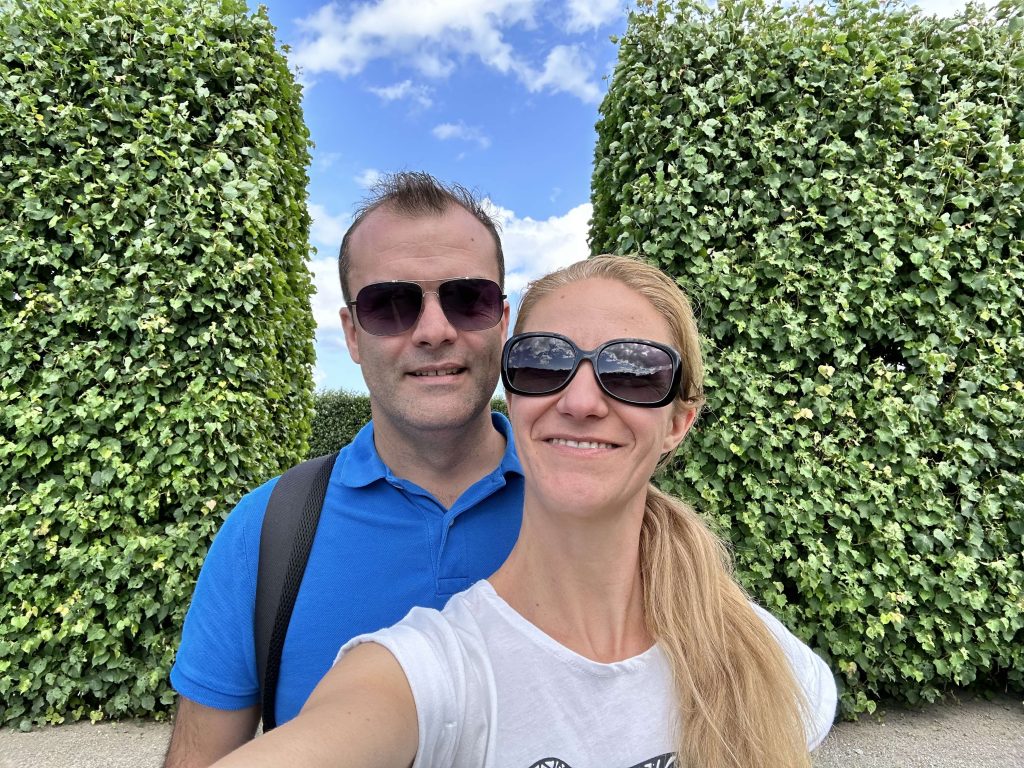
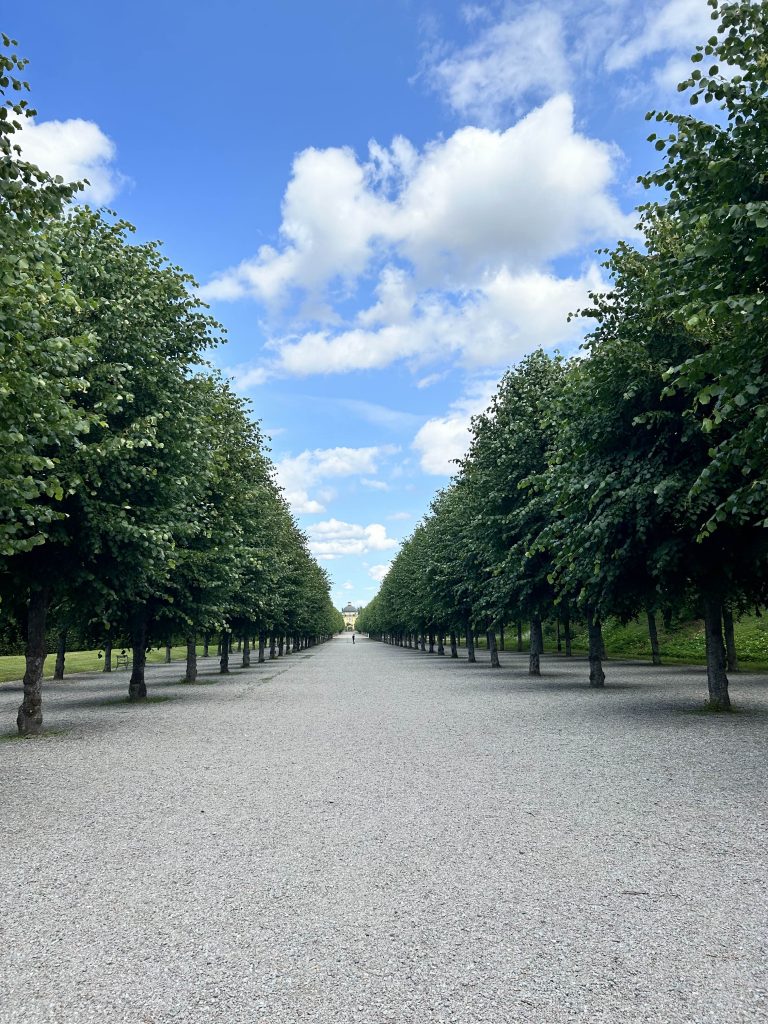
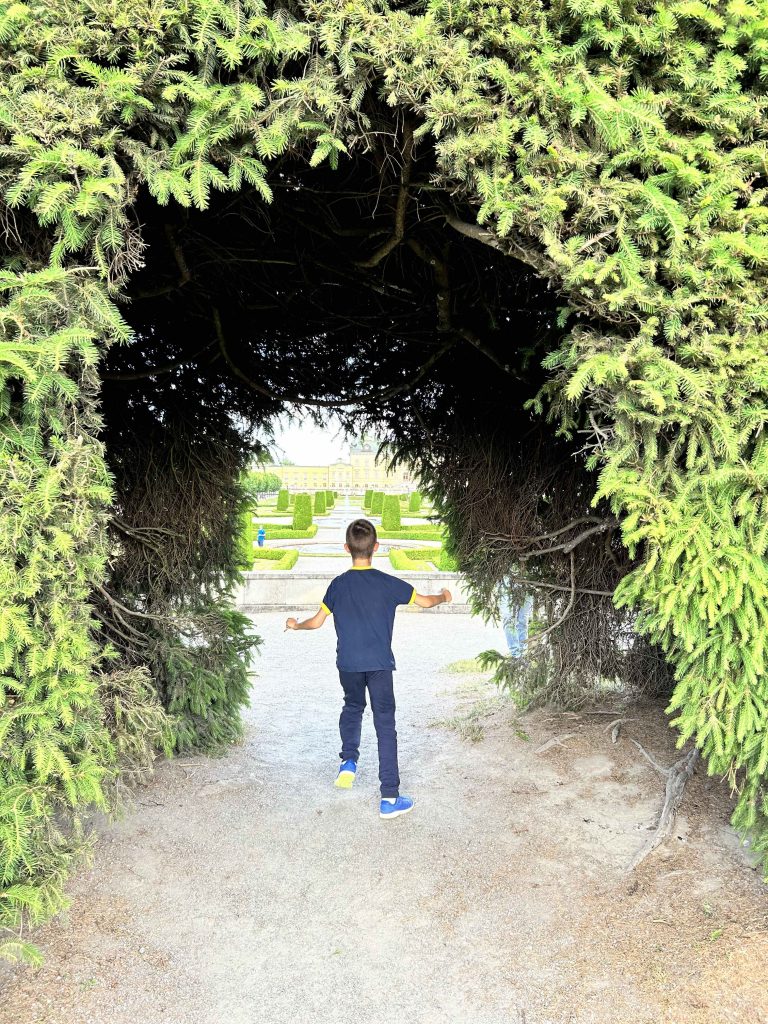
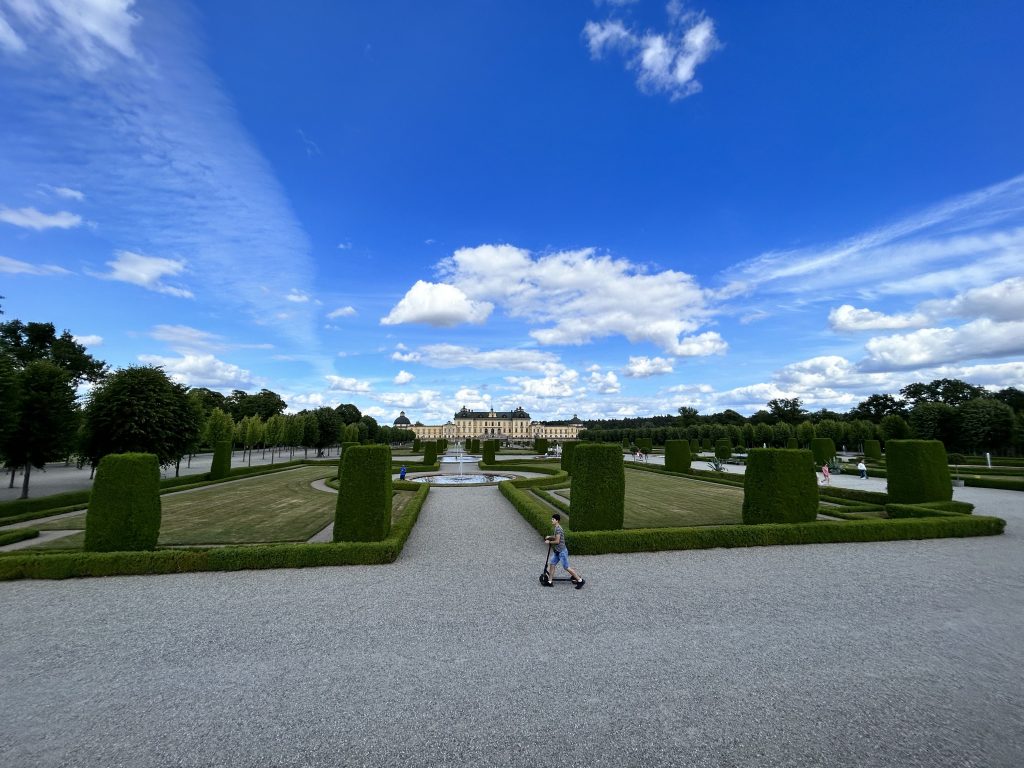
Restaurants:
- Hubertus had great Swedish meatballs and salmon and it was decently priced and good meal sizes. We loved its outdoor terrace in a inner garden with lots of vegetation and good for kids to run and play while waiting for the food to be served.
- Burgers’n’Fuel in Gamla Stan – a small unassuming restaurant that it was recommended to us and where we ate elk burgers. Delicious. Expect to pay about 250 SEK for one burger.

0 Comments